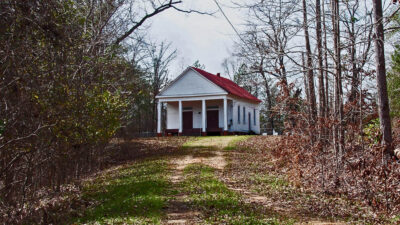
The Ackerville Baptist Church of Christ congregation was founded in 1844 with twenty-eight members. Membership had risen to seventy-nine by 1847, and in 1848, the congregation completed construction of this church in the nearby community of Oak Hill. I …
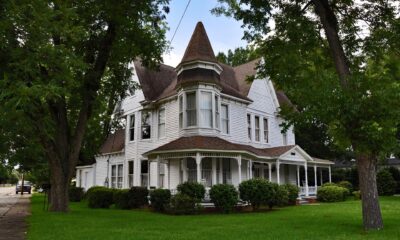
This beautiful 2 1/2 story, Queen Anne style home was built in 1894 by Rev. S. A. “Soc” Adams who was a Baptist minister, architect, and building contractor. Rev. Adams served as the pastor of the Jackson First Baptist Church from 1889 until 1912 and a …
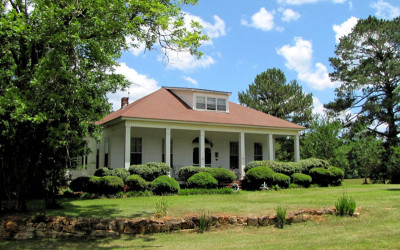
Judge and Mrs. Johnathan Newberry Stanford owned this home in the mid-1880s. He served as Judge of Probate for Wilcox County from 1907-1917. The house features double front doors with rounded-head “Italianate” windows and a semi-circular transom ligh …
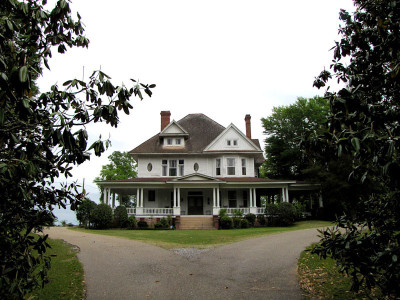
Mr. and Mrs. Thomas Adams built this two-and-one-half story Queen Anne-style home circa 1904. The home features multiple gables, wraparound porch on paired Tuscan columns, polygonal projecting bay and portico or “buggy way”. It contains the original mi …
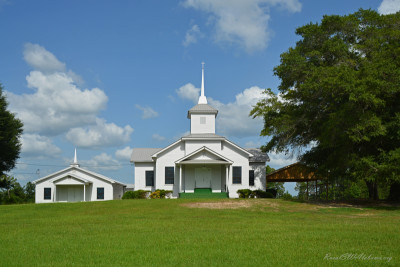
The Aimwell Baptist Church was organized on November 26, 1860. The articles of organization and the church name were chosen by the forty-three charter members and three local preachers – Reverends John W. Williams, John Talbert, and Jay Reeves. The con …
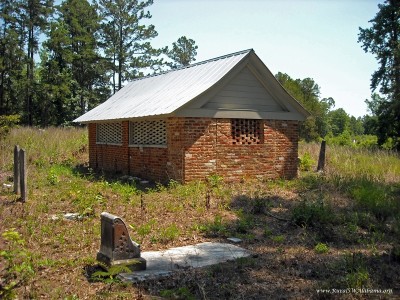
The Airmount Grave Shelter, also known as the Hope Family Grave Shelter, is a Greek Revival structure located in the Airmount Cemetery near Thomasville. It was built in 1853 by John Hope. The unusual splayed eaves and vaulted, or “compass” interior cei …
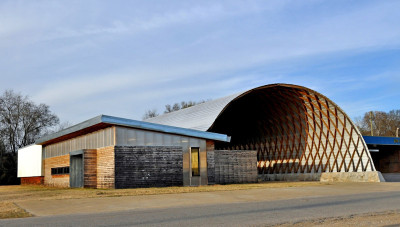
Most of Akron’s adults commute to Tuscaloosa or Greensboro for work which leaves the children to entertain and look after themselves for an extended period of time every day. Auburn University’s Rural Studio volunteered to design and build a Boys and G …
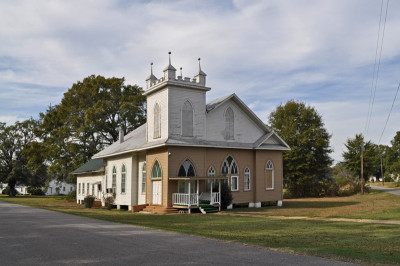
The Akron Presbyterian Church was organized on July 6, 1919. The meeting was at the Akron Methodist Church which is where the Presbyterians met until their first church as built. In 1920, the Presbyterians started a building fund for their church. Thei …
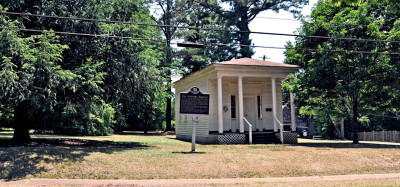
The first issue of The Alabama Baptist newspaper was published on February 4, 1843 in Marion, AL. This building, built as an office building in the early 1830s, was used for printing and distribution of The Alabama Baptist newspaper from 1843-1852. T …
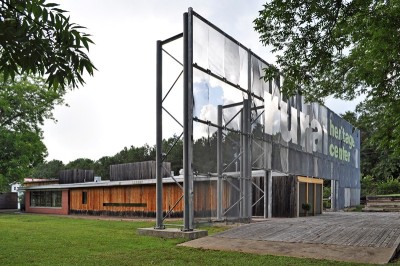
The Alabama Rural Heritage Center is located on Hwy 25 at Thomaston, Alabama in the renovated Home Economics Building of the old Marengo County High School. Students at Auburn University’s Rural Studio at Newbern, AL designed this facility and handled …
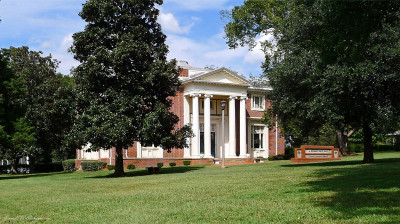
NOTE: Judson College suspended its academic operations on July 31, 2021. The Alabama Women’s Hall of Fame is now located hosted by the University of West Alabama in Livingston, AL. ***** The Alabama Women’s Hall of Fame honors the achievements of outst …
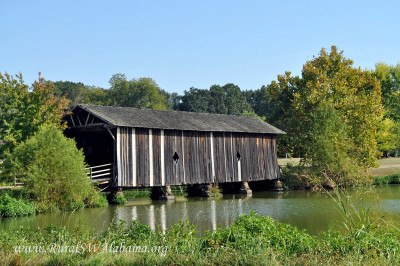
This is one of the oldest remaining covered bridges in Alabama. It was originally constructed across the Sucarnoochee River on the main state road leading from Livingston to York, now U.S. Highway 11. The bridge was built in 1861 under the orders of Co …
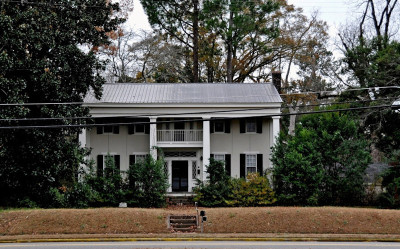
This house, originally a stagecoach inn, was build in old Erie and moved to Eutaw by Dr. Abram F. Alexander who gave it to his daughter and her husband in 1848. It has four well proportioned two-story columns on the front and a second floor balcony o …
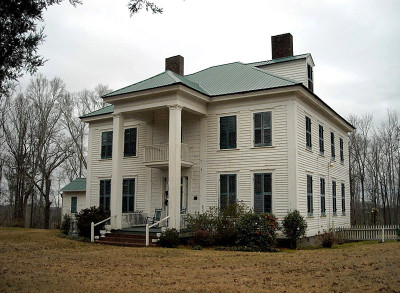
This Greek Revival style house was built for John Gray Allen in 1857 by David Rudisill. It is a two-story frame structure with a two-story front portico featuring square paneled columns. The roof is hipped with side dormers. In 1890 the rear facade was …
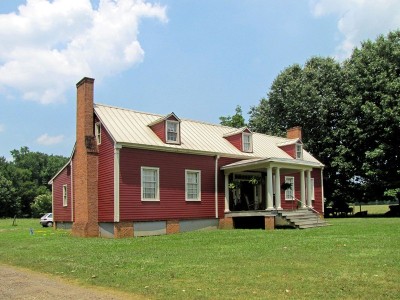
Altwood is a historic plantation house located approximately six miles southwest of Faunsdale. It was built circa 1836 by Richard H. Adams. It began as a log dogtrot house and was then expanded until it resembled a “Tidewater cottage” style house. B …
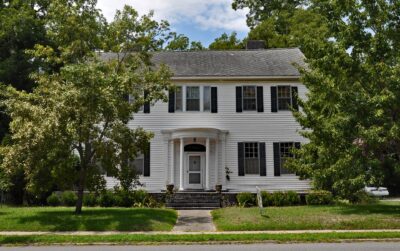
Dr. John C. Anderson purchased this lot in February of 1849 and had a home built consisting of two front rooms with four windows each and two smaller back rooms. A 1910 photograph shows this home as a one-story bungalow before it was enlarged in 1928. …
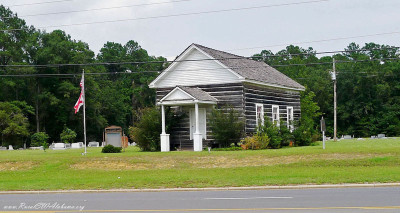
Andrews Chapel, also known as the McIntosh Log Church, is one of the few remaining log churches in Alabama. In 1860, John C. Rush and his wife donated land for the church to the McIntosh Community. Shortly afterward, the church was constructed and name …
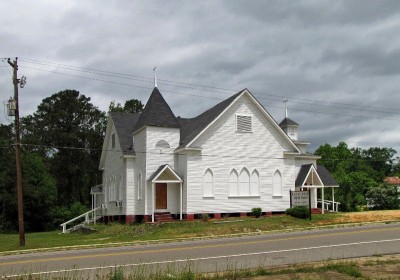
Antioch Baptist Church, which opened in 1885, is one of the oldest African-American churches in Wilcox County. It sits on a rise on the outskirts of Camden, in the heart of Alabama’s Black Belt region. The church has served the spiritual needs of the …
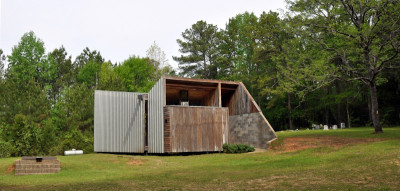
Shown is a small church in northwest Perry County, AL that was redesigned and rebuilt by four students from Auburn University’s Rural Studio at Newbern, AL. It was named among the top 100 best designs in the world by New York-based Metropolitan Home ma …
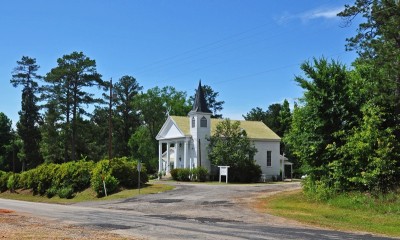
The Arlington Methodist Church was built circa 1887 using lumber from George Lynch’s mill near Kimbrough, AL. George Lynch built the church building, doors and windows. The belfry was added to the church at a later date. The pews in the church are hear …
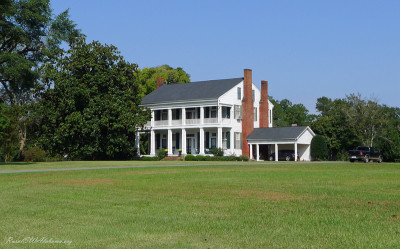
The Asa White house, also known as the White-McGiffert house, was built circa 1838 by Colonel Asa White, one of Greene County’s earliest settlers. Eutaw was established on property owned by Asa White. He conveyed 20 acres to the newly established count …
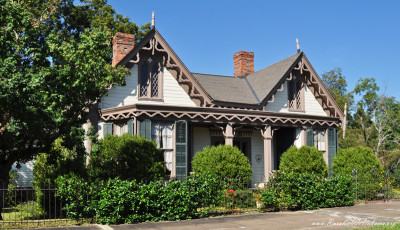
Ashe Cottage, also known as the Ely House, is a historic Carpenter Gothic house in Demopolis. It was built circa 1832 and expanded and remodeled in the Gothic Revival style in 1858 by William Cincinnatus Ashe, a physician from North Carolina. The cotta …
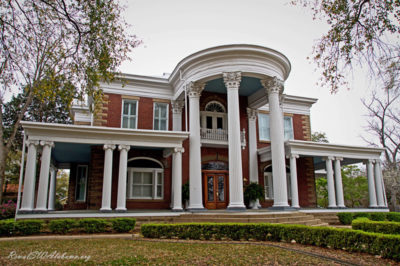
Julian Smith, a businessman and surveyor in Selma, built Ashford from 1899-1903. This two-and-one-half story Neo-Classical designed house is constructed of brick with rough-cut stone. Thirty white columns surround the home on the outside and seven colu …
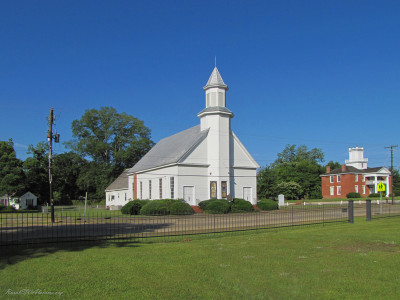
Located in front of this church is a historical marker. Following are the details provided on this marker: “This building was constructed c. 1849 as a Cumberland Presbyterian Church. The Camden Associate Reformed Presbyterian congregation was organize …
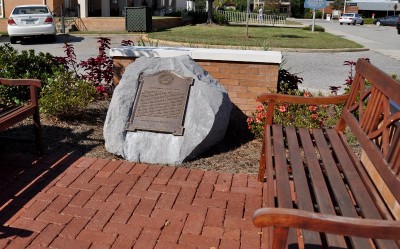
Harper Lee, author of the Pulitzer Prize-winning novel, To Kill a Mockingbird, was born and raised in Monroeville, AL. The fictional town of Maycomb is modeled on Monroeville. Atticus Finch, the central character in To Kill a Mockingbird, is a lawyer …
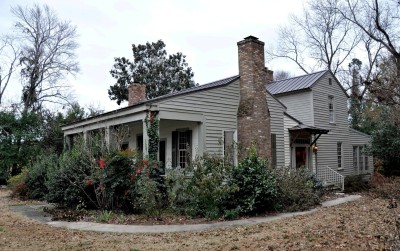
The Attoway R. Davis Cottage is a historic house in Eutaw, AL. The main portion of this house is a two-story I-house, built in 1817. It is the oldest surviving house in Eutaw. Directly in front of this structure is a two-room cottage, built in 1840. Th …
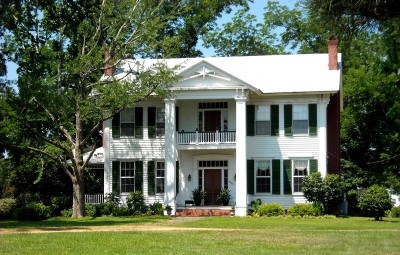
Arthur Pendleton Bagby, who served two terms as Governor of Alabama (1837 and 1839) and later as a U. S. Senator, moved to Camden in 1853. He contracted with Henry F. Cook to build a home “befitting a man of position”. They agreed to a price of $3,75 …
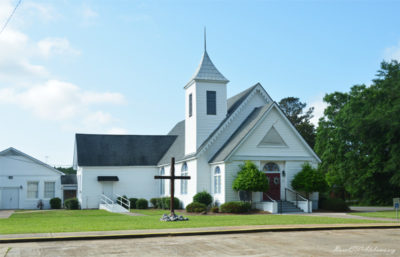
This church was built circa 1877 to replace a log building on this site. The sanctuary is the original structure with its hand-hewn timbers that are twelve to fifteen inches wide. It was originally divided by a partition, the height of the pews, sepa …
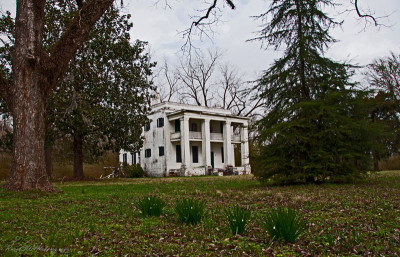
This is a 2-story brick slave quarters that was built by Stephen Barker in 1860 behind his large brick mansion. The building originally had no columns. After the Civil War, Confederate veteran, Samuel McGurdy Kirkpatrick and his wife, Sarah, purchased …
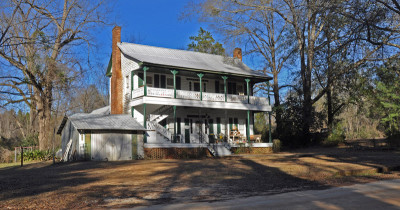
It is believed that this house was built for Jehu Bates and his wife, Janet Barnes Bates. Jehu bought the property in 1833 and sold it after his wife died in 1851 to George W. and Mary L. Barney. This property included over 5,000 acres of land. When th …
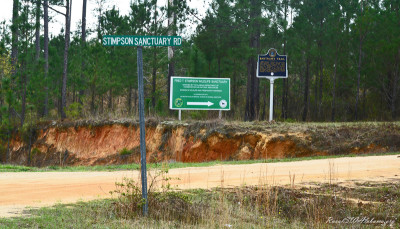
This marker is located in south Clarke County approximately 11 miles south of Jackson, AL on Co. Rd. 15 (Rockville Rd.) at the entrance to the Fred T. Stimpson Wildlife Sanctuary (GPS coordinates 31.382654, -87.849970). It was erected by the Clarke Cou …
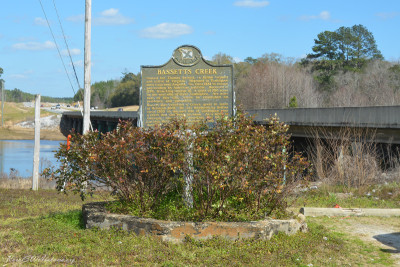
This historical marker provides details about how Bassetts Creek got its name. The marker is located beside US Hwy 43 approximately 1.5 miles north of Wagarville, AL at the bridge where Bassetts Creek crosses US Hwy 43 (GPS coordinates 31.464596, -88.0 …
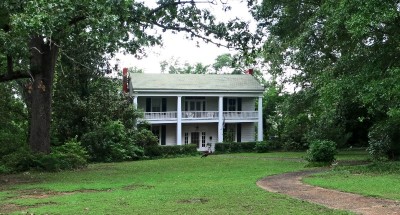
This Vermont Colonial-style house was built by the Bates family circa 1830. This two-story structure was originally constructed of hand-hewn logs that are now covered with weatherboards. The house has a basement where the logs can still be seen. The ki …
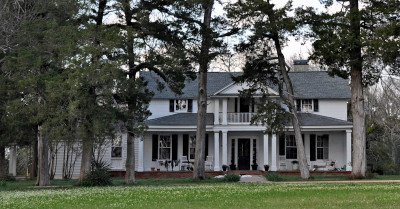
This is a historic plantation house located in south Hale County at Gallion. It was built around 1820 as a two-by-two log cabin. By the 1840s, two additional rooms were constructed at the back of the cabin. Battersea underwent further expansions, suc …
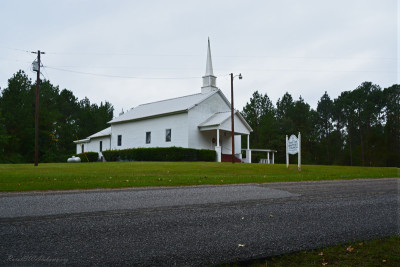
The Beaver Creek Baptist Church congregation was organized in 1885 and their first services were held in the Pope schoolhouse which was located a short distance southwest of the present church site. The present church building was completed in 1894. It …
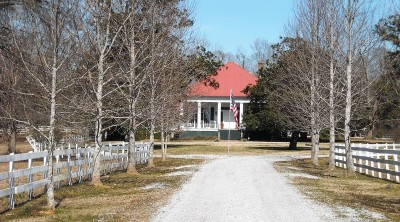
This home, known as “River Bluff House,” was built around 1847 for William King Beck, a nephew of William Rufus King, Vice-President of the United States. Beck migrated to Wilcox County around 1820 with his three brothers from North Carolina. He combin …
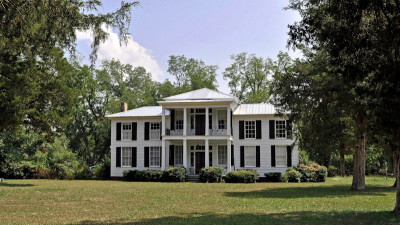
This house, commonly referred to as “The Beck Place”, is a two-story frame building constructed circa 1850-60 in a vernacular interpretation of the Greek Revival style. The house was a T-shaped structure that contained six rooms, two halls and two sin …
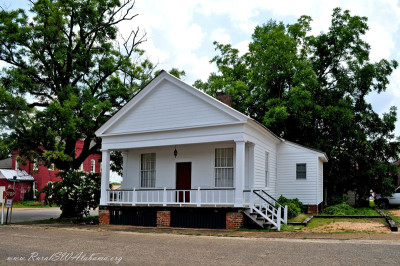
This historic building located in Camden’s downtown historic district served as the law office for Colonel Franklin King Beck. Colonel Beck, who commanded the 23rd Alabama Infantry, held General U.S. Grant’s Union troops at bay for 12 hours with a sing …
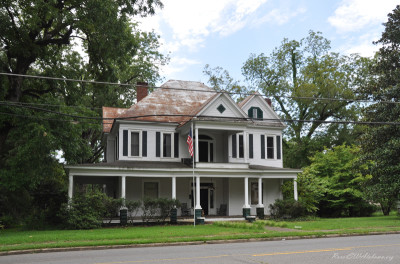
This house was built in stages between 1899 and 1909. As the Palmer family grew, so did the house – three kitchens were built for family usage. This was the first house reportedly in Greene County to have electricity. Features of the house include beve …
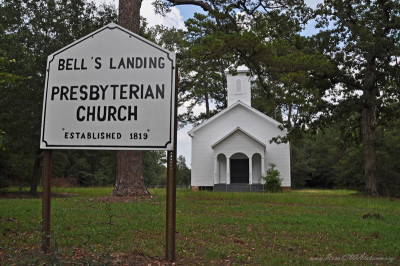
This church is located in the community of Bell’s Landing in northwest Monroe County. Presbyterians have been a part of this area since 1819. The first church at the present location was erected in 1885. This church was destroyed by a storm on May 10, …
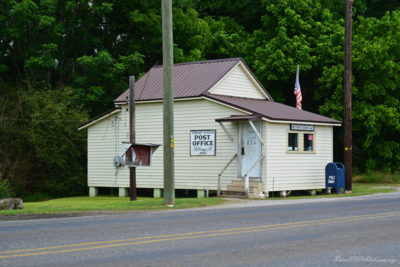
This small post office was built circa 1905. It is featured site #3 in the Sumter County, Alabama Historical Points of Interest visitors brochure. This post office is located at 591 Pine St NE in Bellamy (GPS coordinates 32.449336, -88.133917). Source: …
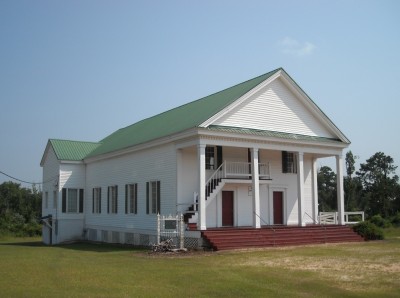
This church was built circa 1840. It is a two story frame building with portico and external stairs leading to a slave gallery. All of the building material, lumber, brick, pews and pegs were hand made by members of the community. This Church was organ …
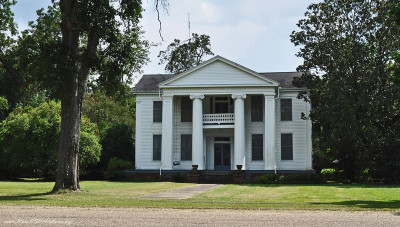
This 5,000 square feet Greek Revival building was originally constructed circa 1850 as a boys’ academy. The contractor was Willis H. Green. In 1880, the building was converted into a home by Benjamin F. Ellis who was a Confederate veteran and prominent …
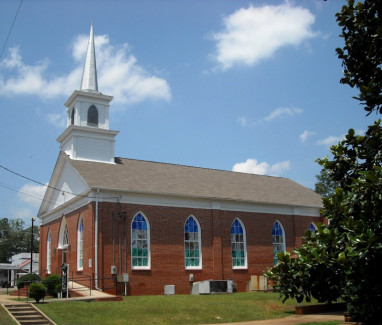
This church was built by freed slaves in 1873, Berean is an offspring of Siloam Baptist Church. Siloam and local Baptists gave $1000 for the building of the Berean. Berean was an important site for civil rights meetings in the sixties. This church is l …
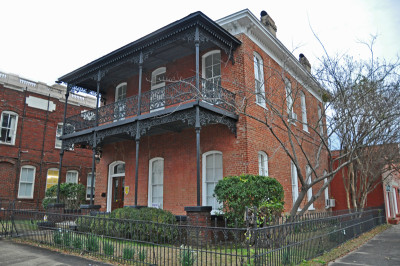
Built by Dr. John A. McKinnon circa 1880, this house takes its name from the Berry family who was a longtime resident. The grillwork on this house is exceptional and was made in Selma’s foundry. The pioneering female photographer, Frances Benjamin John …
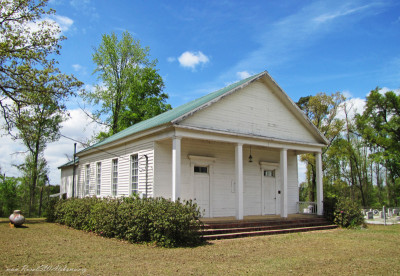
The Bethany Baptist Church was established in 1821 in nearby Conecuh County. The church moved to Puryearville (Monroe County) on Camp Ground Creek near Burnt Corn in 1846. During this era, both Blacks and Whites worshiped at the same church. After the …
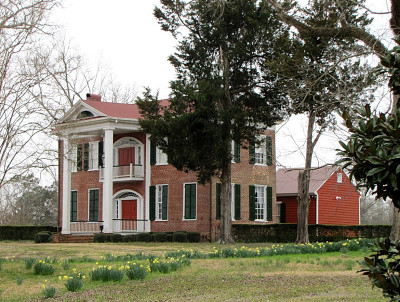
The Bethea-Strother house, also known as “Pleasant Ridge”, is the only brick antebellum residence remaining in Wilcox County, and one of the few extant plantation houses left in the Canton Bend area. The Bethea-Strother house is a two-story, one-room d …
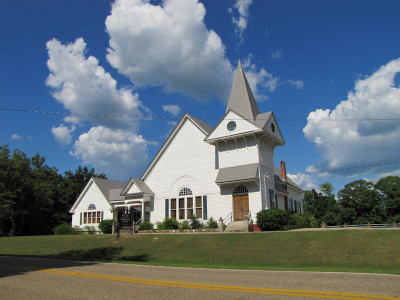
The Bethel Associate Reformed Presbyterian Church was established as the old Lebanon ARP Church near Hamburg in the early 1820s. In 1856, a yellow fever epidemic struck the Hamburg community where most members of Lebanon lived. They moved to Oak Hill …
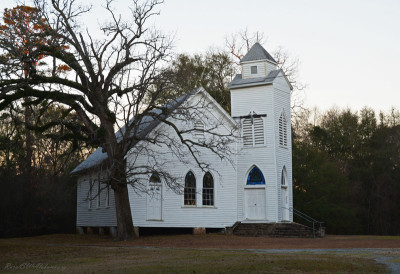
This church is located on Marengo CR 63 approximately 0.2 miles north of the junction of CR 63 & CR 38 and approximately 8 miles NE of Thomaston, AL in the community of McKinley (GPS coordinates 32.300342, -87.540733). Below are details about this …
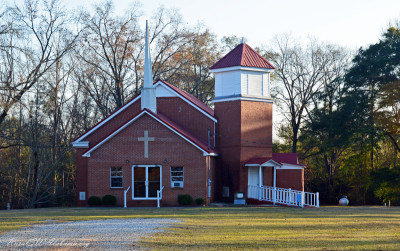
This church is located on Marengo Co. Rd. 38 approximately 0.4 miles from the junction with Co. Rd. 63 and approximately 8 miles northeast of Thomaston, AL in the community of McKinley (GPS coordinates 32.299380, -87.535042). Located beside the highway …
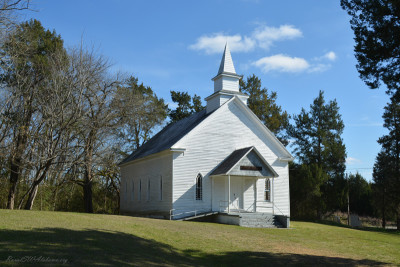
The Bethel Presbyterian Church was established on September 22, 1835, about 3 miles toward the northwest near Emelle where the Bethel Memorial Chapel now stands. It was moved to its present location in 1897. There are extensive church records on the Pr …
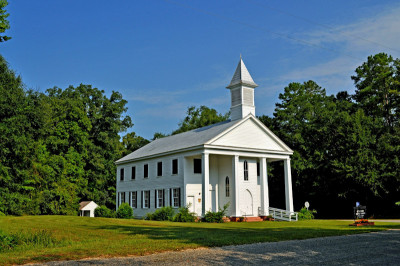
Bethsaida Baptist Church was founded in 1831 at a site very close to the present building. Elder Hawthorne was the first pastor, and some of the founding families were the Albrittons, Lees, Purefoys (Purifoys), McCondichies, and Fowlers. Mr. A. Scarbro …
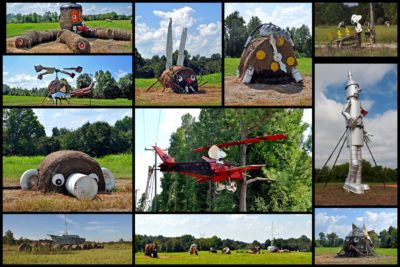
Many motorists driving along Highway 43 between Demopolis and Eutaw have done a double-take when they see Bird’s Farm for the first time. Bird’s Farm is a large field beside Highway 43 that contains many amusing and imaginative creations, most of whic …
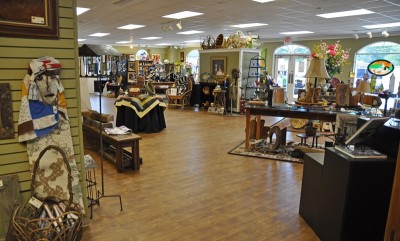
Black Belt Treasures is a non-profit organization developed to showcase and promote the artists of the Alabama Black Belt region. Since opening its gallery in Camden, AL in 2005, Black Belt Treasures had grown from representing 75 artists to over 450 a …
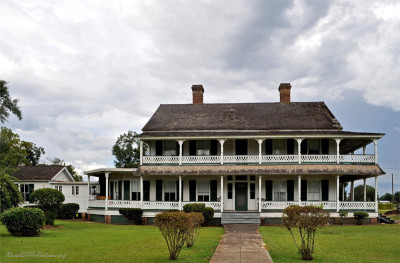
This home was built circa 1891 for timber magnate James Uriah Blacksher. At one point, Blacksher owned more than one hundred thousand acres of land and a large lumber industry. He also owned a bank, a store, and railroads. Blacksher had a big impact on …
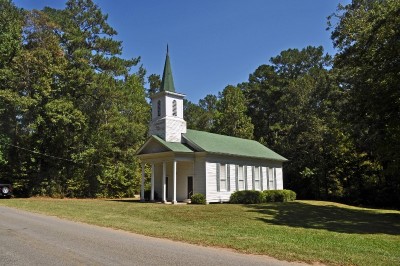
This church was built circa 1874 by Peter D. Flint who built many of the buildings in the area including the Bladon Springs and Cullom Springs Hotels. The Bladon Springs Church is a contributing property to the Bladon Springs Historic District that’s l …
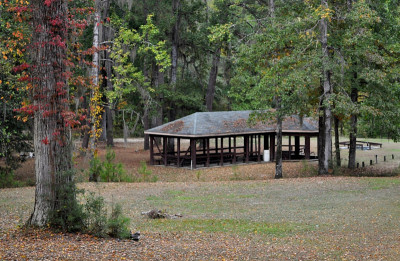
Bladon Springs State Park is a 367-acre Alabama State Park at Bladon Springs, AL that is centered around four mineral springs. Park facilities include campsites, shelters, tables, and grills. This property, originally owned by John Bladon, was referred …
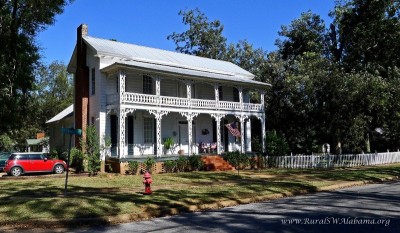
This home was built for Edward A. Blount and his wife, Mary, between 1853 and 1859. In January 1852, the Blounts bought three lots at the location of this house for $26, $40, and $20. A clear title was granted for this property in January 1853 when the …
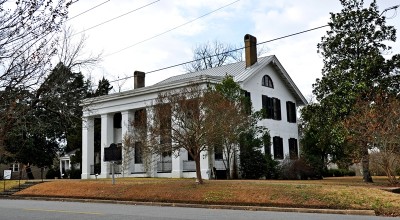
Bluff Hall is located atop a limestone cliff overlooking the Tombigbee River in Demopolis. The house was built in 1832 by Allen Glover for his daughter, Sarah Serena Glover, and her husband, Francis Strother Lyon. The Lyons used Bluff Hall as a townhou …
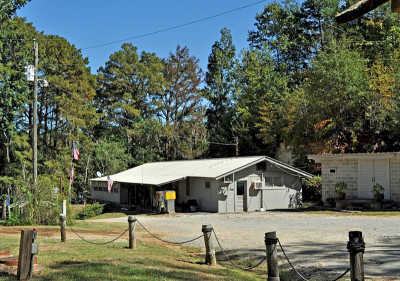
NOTE OF RESTAURANT CLOSURE —– The restaurant closed March 2020. The store will remain open, selling beer, soft drinks and snacks to fishermen and the pleasure boats that stop by going up and down the Tombigbee. Fuel is also sold to boats from a floa …
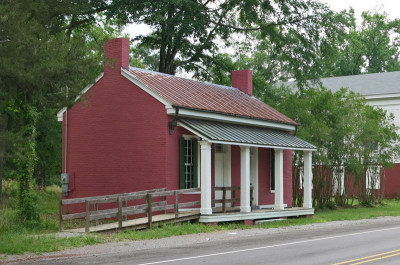
This small brick building, known as the “Boddie” Law Office, is one of the few remaining buildings in Dayton, AL. It was built by Oliver B. Boddie and his brother, John E. Boddie around 1858. These brothers were graduates of the Cumberland School of …
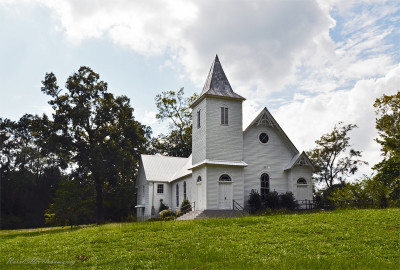
The Boligee Presbyterian Church was established October 31, 1900. Positioned on the crest of a small hill, this beautiful church features a corner tower with variegated shingle patterns, and Eastlake style wood carvings in the two front gables. Inside, …
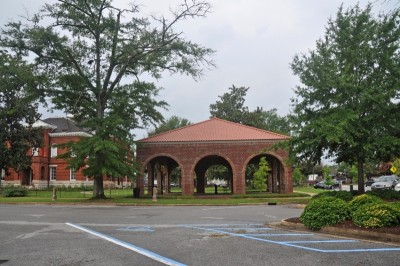
The Bored Well was started in 1854 and historians say an old blind mule pulled the auger around day after day until completion in 1857 of an artesian well. In the beginning citizens were disappointed with the salty taste of the water, but soon claims …

This small cottage sits on the edge of a bluff above the Alabama River on Water Avenue in downtown Selma. It is located next to the historic St. James Hotel. Selma’s first bridge across the Alabama River was opened in 1885. A span of the bridge had to …
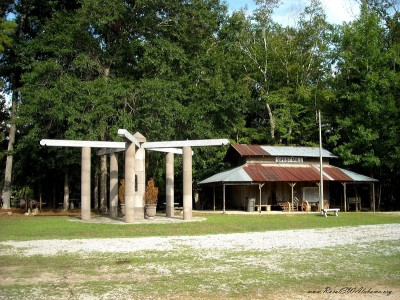
This is a small park that is located in the community of Needham in central Choctaw County. It is proof that a park need not be large or elaborate to be a real pleasure. The park is built around the old Walter Wilson gristmill which was the center of l …
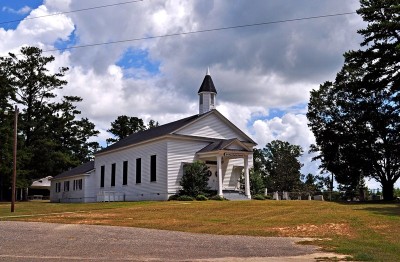
The Brooklyn Baptist Church, established in 1821, is one of the oldest churches in Conecuh County. The church was organized in a small log cabin that also served as a school. On September 4, 1860, the church purchased three acres of land for $15.00 a …
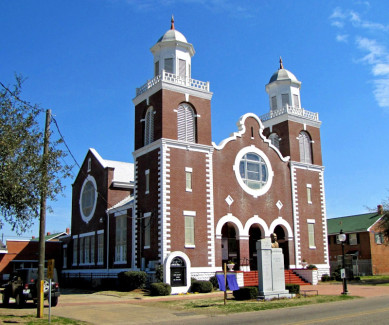
Brown Chapel AME Church, with its imposing twin towers and Romanesque Revival styling, was built in 1908 by black builder – of whom little is known – A.J. Farley. This church and its congregation played a major role in the events that led to the adopti …
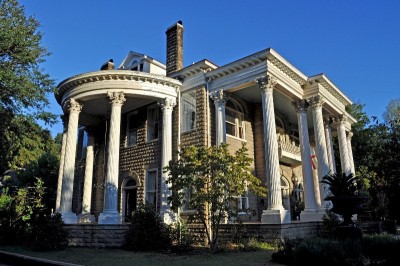
This neo-classic mansion was built in 1898. This home was visited frequently by F. Scott & Zelda Fitzgerald (Fitzgerald authored “The Great Gatsby” among other American classics). In 1983, the third floor burned while being restored. Since then, i …
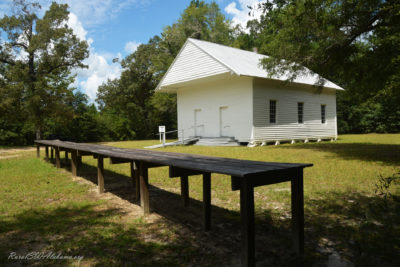
This is one of the oldest churches in the county. The date that the church was organized is unknown; however, it was prior to 1856. The congregation’s first church was a small building constructed with round logs. It was replaced with the current churc …
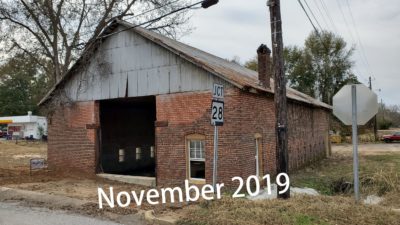
Buck’s livery stable is a one-story brick building that was built circa 1901-10 prior to the automotive age. The building has a central entry and segmental-arched windows. A row of low “feeding” windows for horses extends on the north and south sides o …
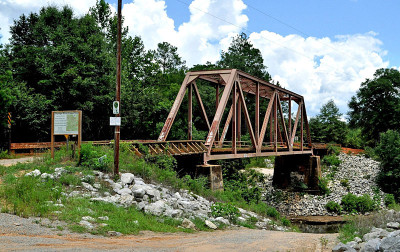
Bull Slough Bridge lies across the beautiful Sepulga River in the southeast corner of Conecuh County. This bridge, built in 1924, is 252-feet long and has a pony truss design. It is a part of the Sepulga River Canoe Trail. At one end of the bridge is …
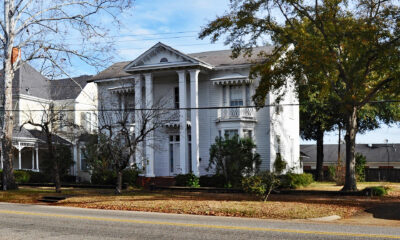
Built prior to 1847, this is a two-story, Italianate home that has a full-height porch with front gable. Exterior features of the house include bay windows with a flat-cut balustrade on the first floor and second-story windows with trimmed hoods and ba …
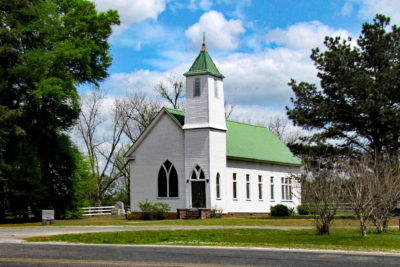
The Burnt Corn Methodist Church congregation was established in 1913. They met in the Kyser-Betts Store until their church building was finished. It is a one-story frame structure with a corner attached bell tower. The building is a contributing proper …
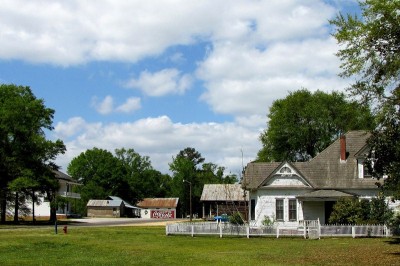
Burnt Corn is located between Monroeville and Evergreen on the historic Old Federal Road. The settlement that became Burnt Corn is older than the state of Alabama. It began as a trading post settlement at an intersection of Indian trails when this area …
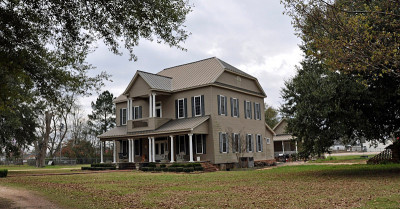
The Bush house is a historic home in Grove Hill, Alabama. The two-story Colonial Revival style house was built in 1912. It was added to the National Register of Historic Places on July 28, 1999. It was listed due to its architectural significance as …
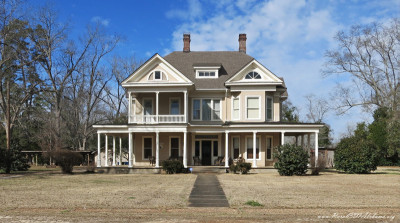
This is one of the finest illustrations of the Queen Anne style homes that are located in Jackson. The house’s complex roof features jerkinhead or clipped gables on the side elevations. It has additional regular gables projecting from each side, coveri …
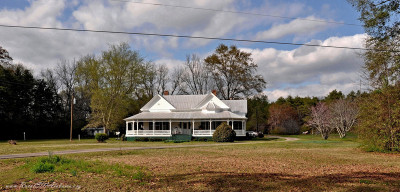
The C.S. Golden House, also known as the Leonard and Ellie Crain House, is one of the oldest homes in Thomaston. This Queen Anne-style home was built in 1898 by Cecil Stanford Golden who was the son of a wealthy foundry owner in Columbus, GA. As a youn …
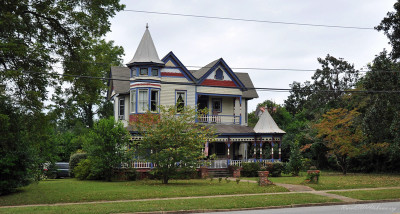
This beautiful two-story, home was built circa 1900. Features of the house include a complex roofline, corner tower with a conical roof, central double-leaf entrance, a wraparound porch with Eastlake trim, a conical roof projection and an upper-level g …
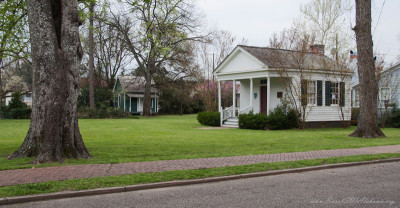
Heritage Village at Selma is the site of several 1800’s structures that were donated to the Selma-Dallas County Historic Preservation Society by private individuals. Shown is the James M. Calhoun Law Office that’s located at Heritage Village. This is a …
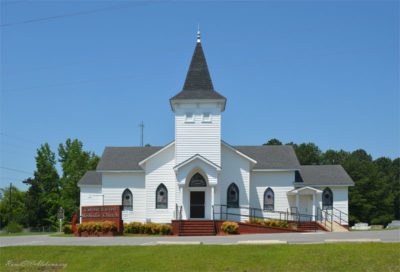
This historic church is located on the west side of Highway 43 in the community of Calvert at the intersection of Highway 43 and Fairford Road (GPS coordinates 31.155395, -88.010503). The church and its cemetery were listed on the Alabama Register of L …
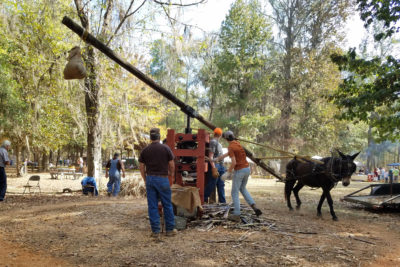
Shown is a cane syrup mill that’s at Rikard’s Mill Historical Park located near Beatrice, AL in Monroe County. This is a mule-drawn cane syrup mill that was produced in Selma, AL in the 1880s by Peacock Company of Ohio. Earnest Dyess of Camden, AL foun …
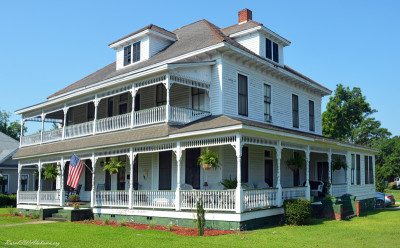
This 2 ½ – story home was built circa 1904 for Dr. and Mrs. W. P. Cannady by Lionel Erastus “Ras” McLeod. Ras built many homes in Jackson. Later his son, Dr. Henry Marvin McLeod married Helen, daughter of Dr. and Mrs. Cannady. They lived in this house …
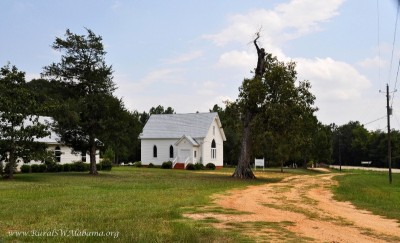
The Canton Bend United Methodist Church congregation was organized on December 12, 1897. In 1910, Percy Smith and Irvin Smith deeded land for the church building. This land adjoined the cemetery of the Cumberland Presbyterian Church of Canton whose org …
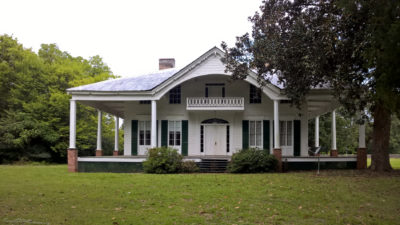
This two-story, plantation home was built circa 1850. The house design is attributed to local builder William T. Mathews. This house has an unusual style for plantation houses of the antebellum period. One of the unusual features of the house is Its um …
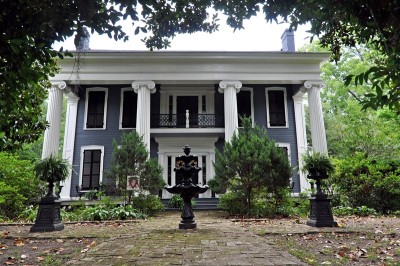
The Capt Edwin Reese House, also known as the Basil Hall, is a historic Greek Revival style house in Eutaw. The house is a two-story wood framed building on a raised brick foundation. Four monumental Ionic columns span the front portico. It was built f …
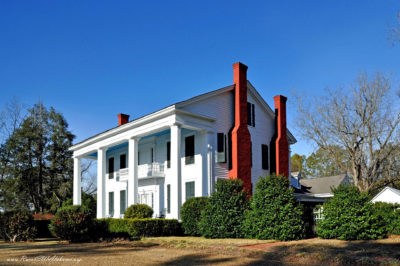
This house is a classic Greek Revival plantation home that was built circa 1853 for Captain Nathan Carpenter, who had served with the Eutaw Rangers in the Mexican-American War, and later served as captain of the Confederate Rangers (Company B of the 36 …
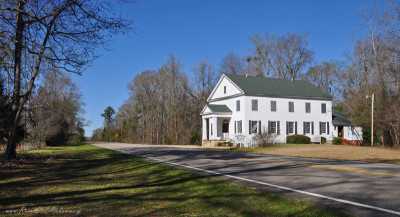
Carlowville is a small community in southern Dallas County. Shown is the Carlowville Baptist Church. Local tradition attributes the design of this two-story church to the first pastor, Dr. Jessie Hartwell, a New Englander. The Baptist congregation orga …
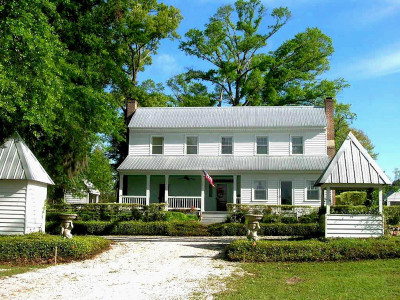
This home was constructed in the late 1830’s or early 1840’s by either Addison Scarbrough or Edmond Hobdy. Mr. Hobdy built several homes in the area during this period. The style is “Plantation Plain” with shed rooms across the rear and a “prophets cha …
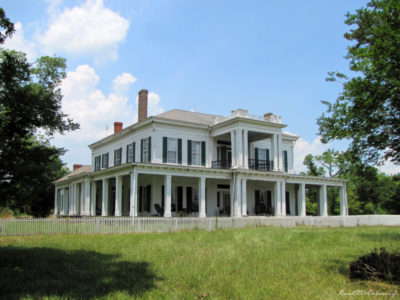
Cedar Grove, also known as the Charles Walker House, is a Greek Revival plantation house located in Marengo County near Faunsdale. This plantation home evolved from a two-story, log cabin. The log cabin was built around 1830 by two brothers from Scotla …
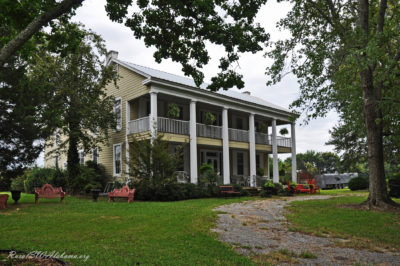
This home was built sometime during the 1830s and 1840s by James Bishop Chambers and his wife, Rebecca Adams Chambers. The house was originally “plantation plain,” a basic I-shape with a one-story rear ell. The front of the house features a full height …
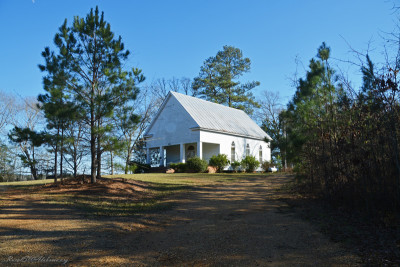
This church is located west of Safford, AL on Dallas CR 66 approximately 2.8miles from the intersection of CR 66 and Ala Hwy 5 (GPS coordinates 32.284940, -87.437781). According to a sign located beside CR 66, the church was established in 1861. Attach …
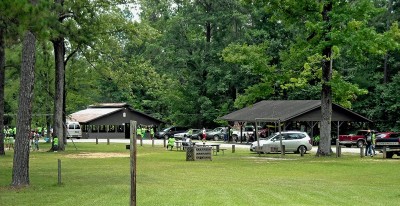
This is our Alabama State Parks. It offers modern campsites, a wading pool, a barbeque grilling pavilion, plus other large pavilions and picnic areas making this small park perfect for group-sized cookouts and gatherings. The Park is also located adj …
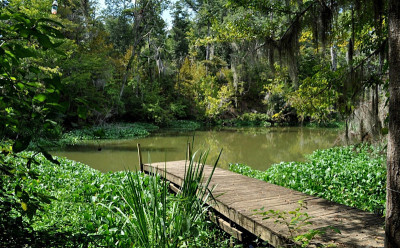
Alabama has many beautiful rivers and lakes and the US Army Corp of Engineers has several parks and campgrounds that allow you the perfect opportunity to enjoy them. One of these is Chilatchee Creek which is a small campground that is remotely located …
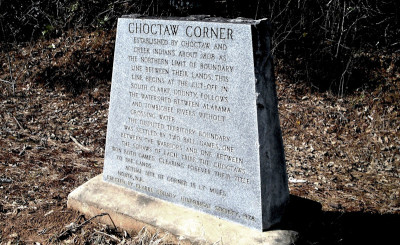
This historical marker is located west of Thomasville on County Road 48 near the Bashi community (GPS coordinates N31.970778,W87.830889). It describes the location of the boundary that was between the Choctaw and Creek Indians in Clarke County and how …
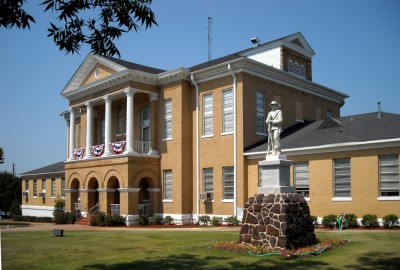
Choctaw County was established in 1847. The current courthouse in Butler is Choctaw County’s second courthouse – built 1906 and occupied in 1907. There were additions to the courthouse in 1956 and 1965. It was placed on the Alabama Register of Landma …
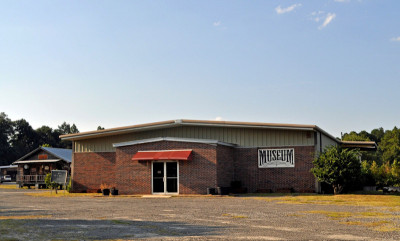
This is an interpretative museum that’s located beside the Town Park at downtown Gilbertown. The main building of the museum contains artifacts that illustrate life in Choctaw County during earlier times. Behind the main museum is another building th …
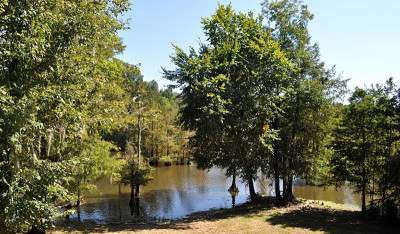
Choctaw National Wildlife Refuge is a little off the beaten path but well worth the trip. Water defines this 4,218 – acre refuge, covering roughly one-half of the refuge in creeks, sloughs, lakes, and backwaters of the Tombigbee River, which borders th …
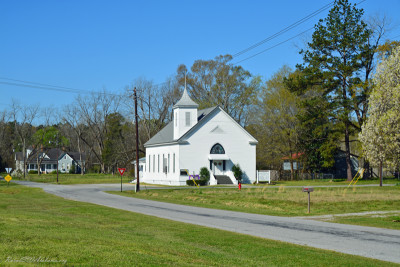
This church was organized in 1888 and the present building was built in 1900. It is Carpenter Gothic style which was commonly used by rural churches in the South in the 19th Century. This church is located in Cuba on the corner of Fourth Street and R …
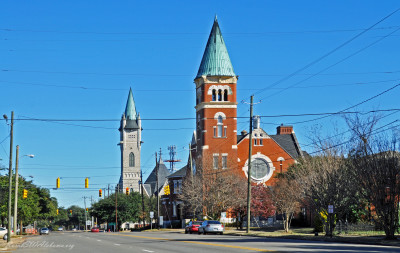
Methodists were the first denomination to organize in Selma and the only church remaining on the original plot of ground assigned to by the Selma Land Company. In 1835, the Methodists organized with 12 members in a wooden church at the corner of Dallas …
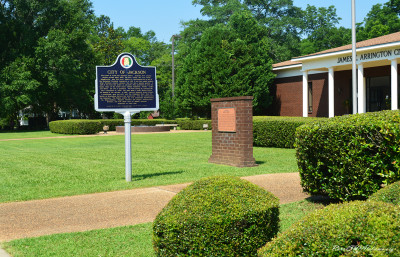
This historical marker is located beside Commerce Street in front of the James E. Arrington City Hall Complex near downtown Jackson (GPS coordinates 31.507745, -87.895886). The marker was erected by the Alabama Tourism Department and the city of Jackso …
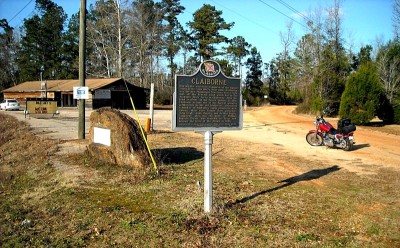
Situated near the Federal Road, this settlement began during the Mississippi Territory period with a ferry that transported settlers across the Alabama River. During the Creek War 1813-1814, a large stockade fort, named Fort Claiborne, was established …
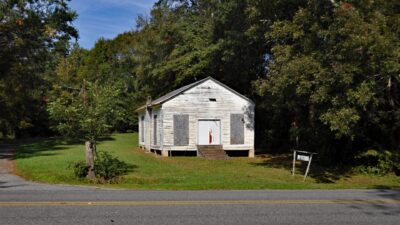
The Clark Chapel United Methodist Church was founded by freed slaves in 1867, only two years after the end of the Civil War. This is one of the oldest independent black congregations in Alabama and the South. The small wood building that is shown is be …
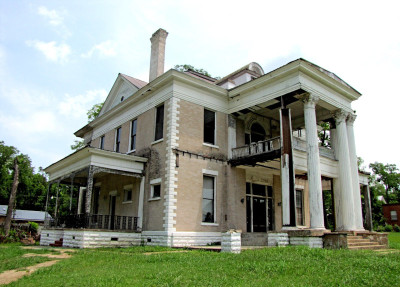
This Neo-Classical house was built by Dr. Solon Lycurgus Coleman on a lot he purchased on February 20, 1906. It has a central double leaf entrance with fanlights and sidelights on both the first and second floor. The house has a full height …
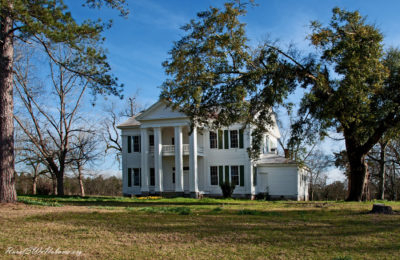
Also referred to as the Cochran-Crumpton House, Crumptonia, and the McCrary House, this 2-story Greek Revival style home was built circa 1855 for South Carolina-born, Claudius M. Cochran. It was later owned by the Crumpton family and it became part of …
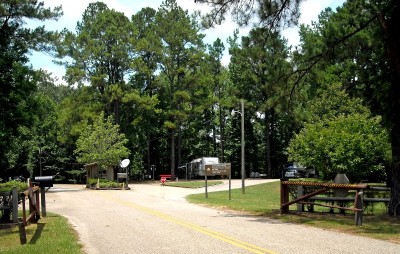
Service Park sits on the shores of 97-mile-long Coffeeville Lake, the third largest lake on the Black Warrior- Tombigbee reservoir system and the last reservoir on the Tombigbee River before it reaches the Gulf of Mexico. Service Park’s campground offe …
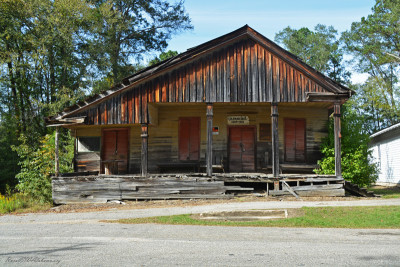
This is one of only a few wood frame, free-standing gable front, commercial buildings that remain in Clarke County. It was built around 1890 by David “Dave” Daniel Coleman. He used the building as a general store until his death in 1921. His sons, L. L …
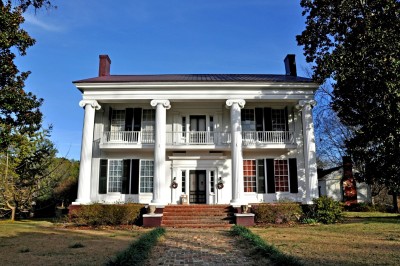
The Coleman-Banks house, also known as the James Oliver Banks house, is the first of four antebellum homes at Eutaw, AL to have original colossal-order porticos. This house was built circa 1847 by George W. Shawver, owner of the Parapet Hotel. On the …
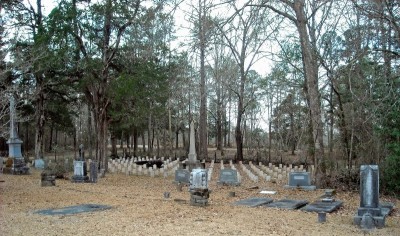
The town of Gainesville was laid out in 1832 by Moses Lewis. By 1840 Gainesville had become the third largest town in the state of Alabama, with a population of over 4,000. Confederate Cemetery has the graves of Gainesville’s earliest settlers, includi …
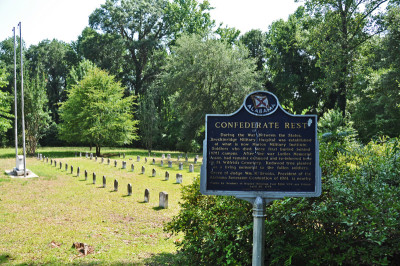
During the Civil War, Breckinridge Military Hospital was established at Howard College in Marion (now the campus of Marion Military Institute). Soldiers who died at the hospital were first buried behind the campus. In 1872, the Ladies Memorial Associat …
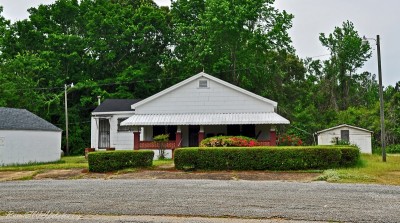
Coretta Scott King (1927-2006) grew up on the farm of her parents, Obadiah “Obie” Scott and Bernice McMurray Scott, located north of Marion near the community of North Perry. Coretta Scott and Martin Luther King, Jr., were married on June 18, 1953, on …
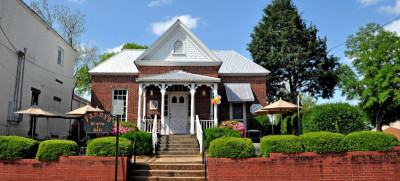
Thought to have been built around 1890, this was the office of the dentist, Dr. William Wilson Corley. He sold it in 1906 to another dentist, Dr. J. P Haley who practiced here until his death in 1956. Dr. Patrick Haley, Jr. practiced with his father fr …
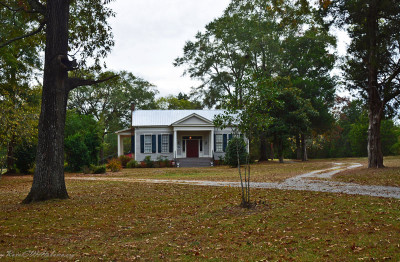
This Greek Revival house was built about 1833 by William S. Craig. It has outside chimneys and double doors with sidelights. The small porch at the front has two classical columns. The main part of the house remains as it was when built. In 1853, A. M. …
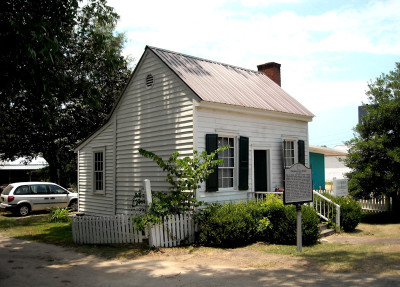
This office was built circa 1834 by Judge John Gates Creagh who was an attorney, commissioner, county treasurer, judge of county orphans court and state legislator. It was originally located on Lot 15 Court Street in Grove Hill facing the county court …
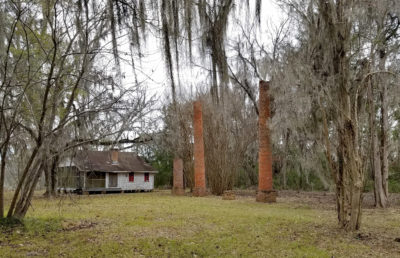
Cahawba, also spelled Cahaba, was Alabama’s first state capital (1820-1826). It became a ghost town shortly after the Civil War. Today, the old Cahawba site is an interpretative park that’s operated by the Alabama Historical Commission. Visitors to the …
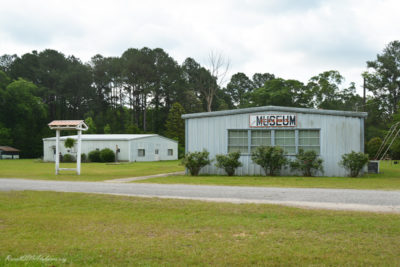
This museum contains displays that illustrate life in Cuba from its beginning. Of special interest are photographs of Cuba since 1952. This museum is featured site #22 in the Sumter County, Alabama Historical Points of Interest visitors brochure. The m …
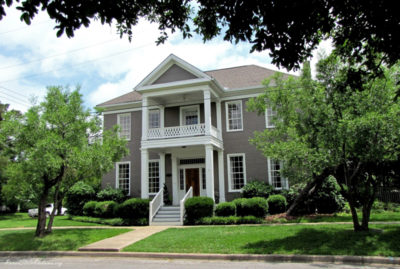
The Curtis House, also known as the Howze-Culpepper House, was built circa 1840 by Samuel Curtis, a Revolutionary War veteran who was born in Queen Anne’s County, Maryland in 1751 and died in Marengo County, Alabama in 1846. The house was built in the …
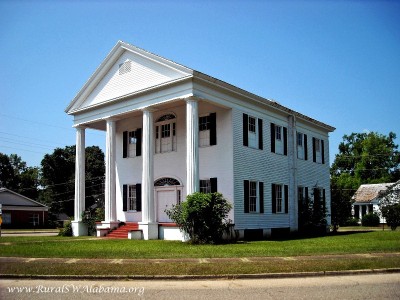
The Dale Masonic Lodge organized at Dale Town (later Prairie Bluff) in 1827. When the town declined in the 1840s, members voted to move the lodge to Camden. The Dale Masonic Lodge building that’s shown was built circa 1848. Union troops camped in this …
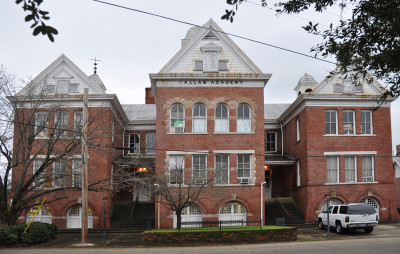
This two-story, Renaissance Revival building, built ca. 1889, originally housed a private school funded by the Ladies Educational Society of Selma to educate the sons and daughters of Selma’s wealthy citizens. Dallas Academy later became Selma’s first …
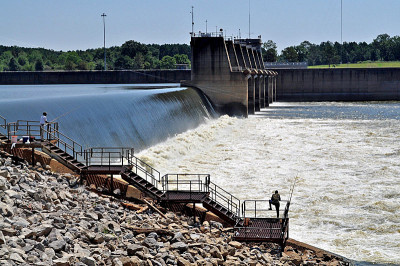
Damsite West Bank is a small park that is owned and managed by the U. S. Corp of Engineers. It is located northwest of Gosport, AL on the west bank of the Alabama River at the Claiborne Lock & Dam. This is a favorite fishing spot for locals, espe …
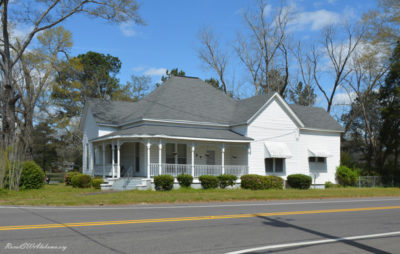
This Vernacular turn-of-the-century style home was built circa 1901. The house features a porch with turned and bracketed supports. This house is featured site #23 in the Sumter County, Alabama Historical Points of Interest visitors brochure. It is loc …
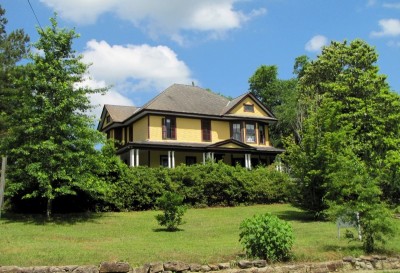
This two story Queen Anne style house was built in 1903. It contains a hipped roof with two cross gables, a wraparound porch with paired or cluttered Tuscan columns and pediment over central entrance bay, turned balustrade, and polygonal protruding bay …
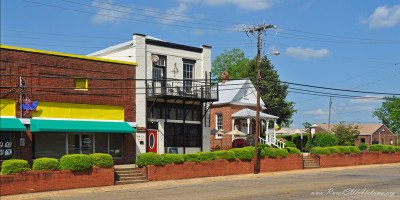
The date 1863 was found scratched into a brick on the east wall. According to local tradition, the earliest occupant was a lawyer who used the top floor as his dwelling and the bottom floor as his office. The Marion Standard newspaper was published in …
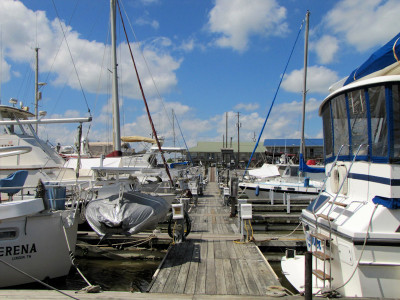
The Demopolis Yacht Basin is a full service marina at Demopolis, AL on the Tennessee-Tombigbee waterway. It has in-water and dry storage for boats and an on-site restaurant and motel. The Demopolis Yacht Basin is located beside Highway 43 on the nort …
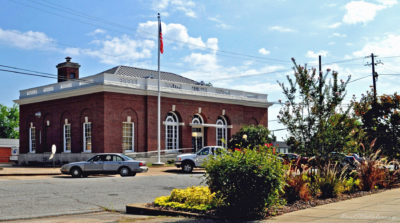
The first official post office to serve the present city of Demopolis was designated Aigleville (literally translated as Eagle Town), the village of French emigrants. It was located on the southeastern edge of Demopolis. This post office was short live …
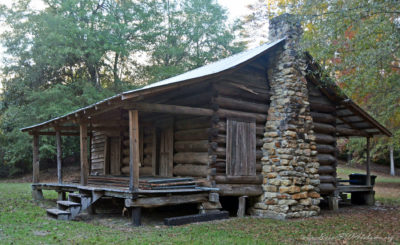
This small cabin originally belonged to Francis Marion and Lottie Mosley Tindle. They sold it to their oldest daughter, Mattie, and her husband, Denton Mosley, when they married circa 1916. Denton and Mattie Tindle Mosley reared their 11 kids in this h …
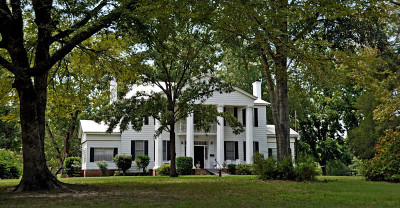
Duncan Dew was a well-known planter and businessman of Eutaw. He came to Eutaw in 1822 and built this house about 1832. It is L-shaped and has elaborate interior wood trim. The house, at one time, had a two-story portico which was later exchanged for a …
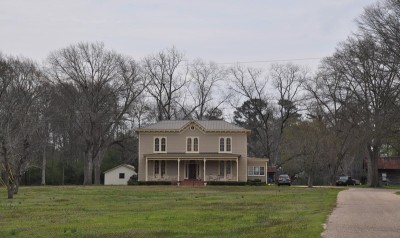
The Dickinson House is a historic two-story Italianate style home at Grove Hill, AL. It was built circa 1845. The architect is believed to have been an English-born carpenter named James Newman. The house was added to the Alabama Register of Landmarks …
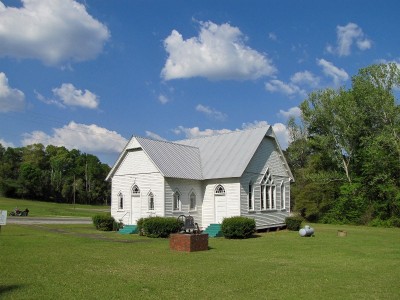
The Dixons Mills United Methodist Church was constructed around 1912 and it was the first church built in the community. Prior to 1912, Sunday School was a community wide activity for all denominations held in the old school house – Dixon’s Mills Acade …
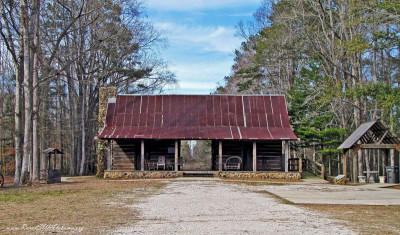
The dogtrot cabin was a common style of rural home in the South during the 1800s. The dwelling would often begin as a single-room log cabin with the attic used as a sleeping loft. As the family grew, a second log cabin would be built and the two cabins …
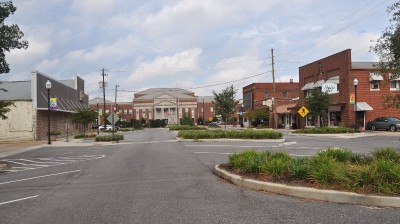
In the background is the Clarke County Courthouse. It is included in the “Grove Hill Courthouse Square Historic District” that was added to the National Register of Historic Places on April 30, 1998. The Courthouse Square Historic District contains 25 …
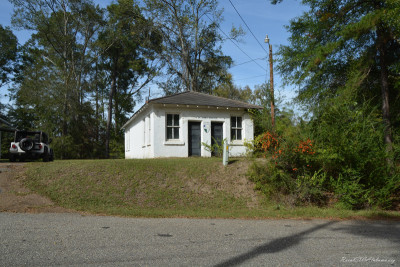
This was the medical office of Dr. John Cooper Godbold, Jr. (1888-1952). Dr. Godbold was the son of a Wilcox County physician. He came to Whatley in 1912 to practice medicine. His first office was in the Jeffrey Building which also housed Dr. Jeffrey’s …
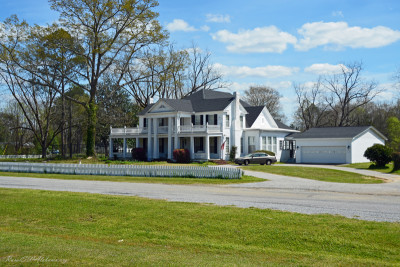
This house was built in 1880 for Dr. H. B. Ward (Oct. 7, 1852 – Dec. 31, 1917). Henry Bascomb (H. B.) Ward graduated from the Medical College at Mobile in 1878 and established his practice in Cuba in 1880. In addition to his physician’s practice, Dr. W …
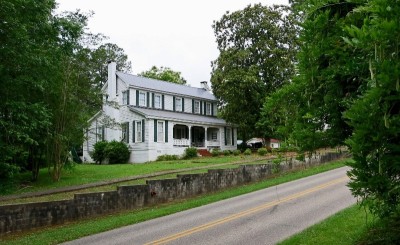
Dr. John A. Kimbrough and his bride, Stella Oakley of Pine Hill, were married in November 1899 on the day of the great fire that destroyed Thomasville’s commercial area. This 2-story home was built by Dr. Kimbrough around that time for his bride. This …
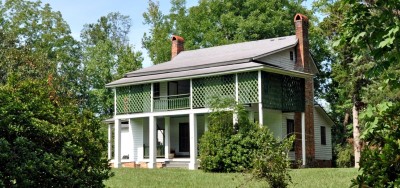
This was the home of Dr. John Watkins who was one of the early and few physicians in this part of what was then still the Mississippi Territory. According to markings on Dr. Watkins’ gravestone, he was for a time the only physician between the Alabama …
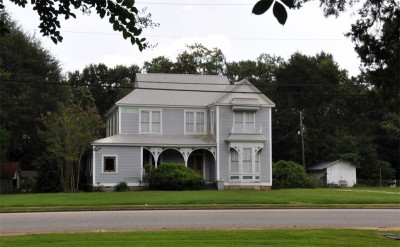
This house was built in 1883 for Dr. Thomas Isham Kimbell, the son of early Clarke County pioneer Isham Kimbell. It is a 2 1/2 story Queen Anne house with a gable on hip roof. The front facade features a projecting bay with a bay window topped with cre …
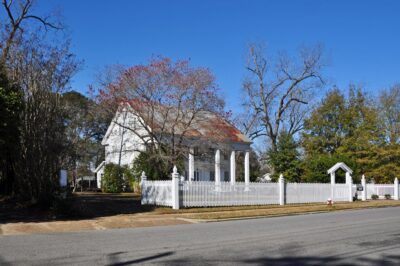
The Dr. Willis Meriwether House, also known as the Clark-Malone House, is a historic vernacular Greek Revival style house in Eutaw. The house is a two-story wood framed building on a brick foundation. Six square box columns span the front portico. Acc …
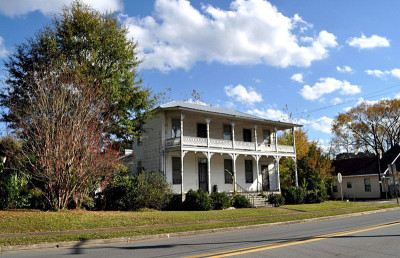
The exact age of this house is not known, but it dates back well into the antebellum period. One of the owners of this home was a Mr. Chadwick who died of yellow fever in 1854, at the age of 39. It’s not known if he built the house. This house has a …
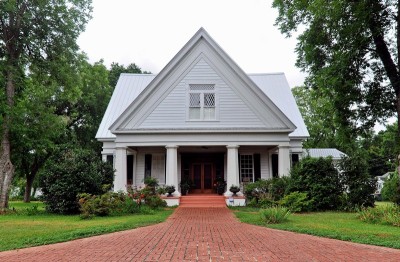
Dr. Gaston Drake, a planter and local physician, purchased this property in 1849 and had a house built on it. The house was destroyed by fire before the Drake family could move into it. There was speculation that arson was probably the cause for the …
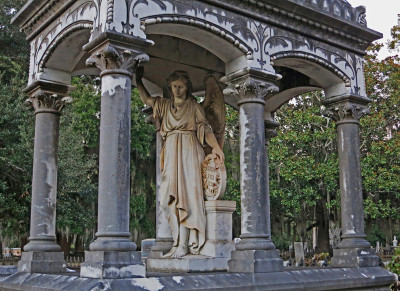
Provided are pictures of the memorial to Drury Fair Jones (1856-1878) that is located in the historic Old Live Oaks Cemetery at Selma. This beautiful cemetery is located beside Dallas Avenue approximately 0.7 mile west of downtown Selma. GPS coordinate …
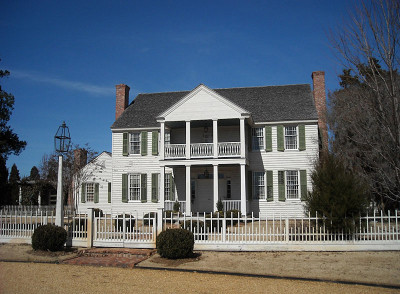
Dry Fork is a historic plantation home located in the Sedan community near Camden, AL. This is one of the oldest documented homes still standing in Wilcox County and is a fine example of late Federal style double–pile house form containing examples of …
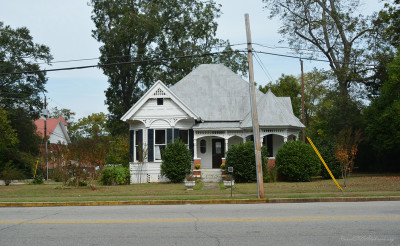
This is a charming one-story Victorian cottage with Eastlake details that’s located on Greensboro’s Main Street. This house was built around 1890. Features of the house include articulated gable bays, a partial width porch with a turrett, a single leaf …
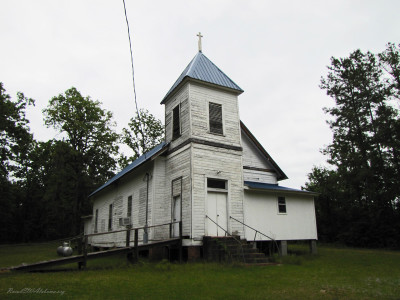
This church was added to the Alabama Register of Landmarks & Heritage (ARLH) on April 18, 2007. According to the Alabama Historical Commission’s PreserveALA.org website, the church was built circa 1914. The Dulaney AME Church is located on the nort …
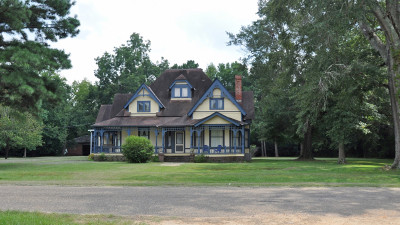
This Victorian farmhouse was designed by renowned Knoxville architect, George F. Barber, and it is listed on the Alabama Register of Landmarks and Heritage. The house has seven bedrooms, three full baths, and six fireplaces. The exterior is wood frame …
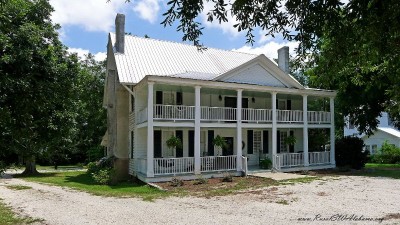
This is the oldest documented structure in Camden. It was built for Thomas Dunn who was one of the earliest settlers of this area. It is believed that he donated the land upon which the present town of Camden, known as Barboursville until 1841, was bui …
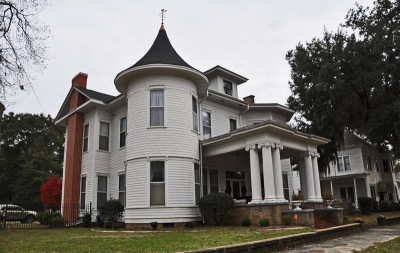
This two-story Colonial Revival house was built around 1907. Features of the house include a one-story entry porch with fluted Ionic columns, a turret with a conical roof and a polygonal bay with hipped roof. The entrance features a door with full glaz …
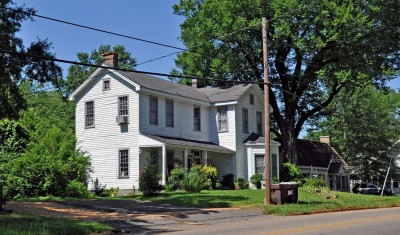
This building, built around 1830, is one of Marion’s earliest hotels. It is thought to be the place where General Sam Houston stayed when he came to Marion to marry Margaret Lea in 1840. This building is included in Marion’s Green Street Historical D …
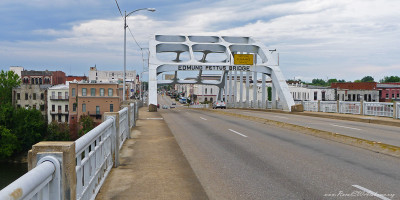
The Edmund Pettus Bridge spans over the Alabama River at downtown Selma, AL. It is a steel through-arch bridge that was designed by Henson K. Stephenson and erected in 1939. The bridge was named for Edmund Winston Pettus, a former Confederate Brigadier …
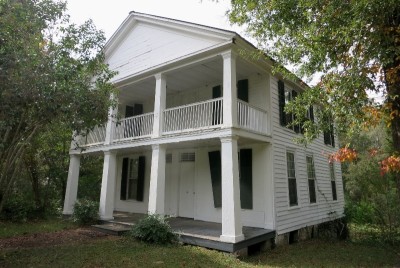
This house is one of the least altered of Gainesville’s early buildings. The building’s vernacular Greek Revival character suggests a construction date of ca. 1835-1840. This house is a contributing property to the Gainesville Historic District that wa …
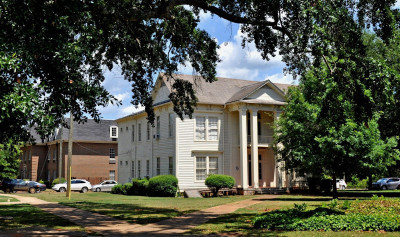
Elmcrest, built ca. 1838, is the oldest building on the Judson College campus. In 1851, Judge John Moore purchased this home from Samuel Fowlkes and remodeled it as a wedding gift for his bride, Emily Billingslea. Judge Moore was a captain in the Con …
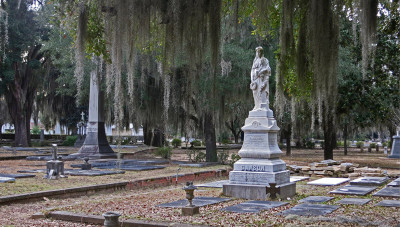
Elodie Todd Dawson (1844-1881) was a staunch Confederate supporter and sister-in-law of Abraham Lincoln. Her husband, Col. N.H.R. Dawson (1829-1895), was a Confederate colonel who later was appointed U.S. Commissioner of Education. He was also a member …
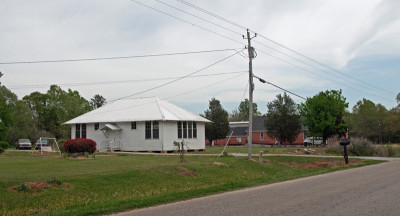
Emory School, also known as the Tunstall School, is a historic Rosenwald School building located in rural Hale County, AL about midway between Greensboro and Gallion. It was built ca. 1915 under the Julius Rosenwald School Building Fund program to serv …
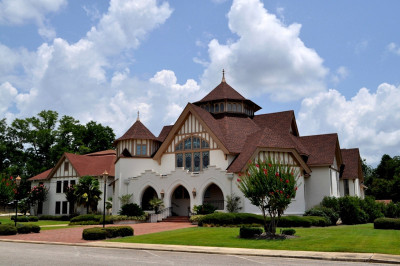
The Evergreen Baptist Church was organized March 15, 1845. The sanctuary of the present church was constructed in a Tudor Revival style and dedicated February 2, 1908. The Education Building was completed in 1950, Groom Hall was dedicated in 1968 and t …
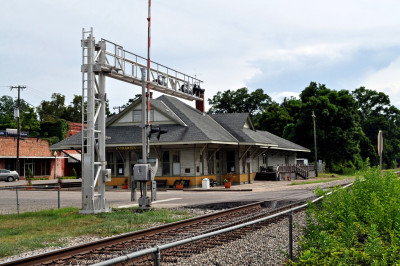
The historic Evergreen Depot located on the old L & N Railroad line in downtown Evergreen was constructed in 1907 and ready for occupancy by March of 1908. The depot was described as an ornament to the town, and pride for everyone, the best and mos …
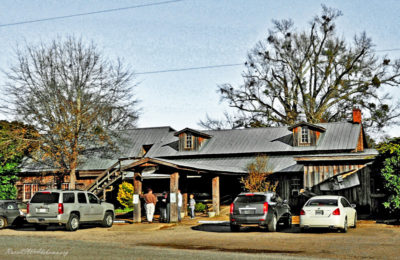
For many customers, Ezell’s Fish Camp is much more than a restaurant. It is a cultural institution, representing a way of life very much connected to the community’s river heritage and to family tradition. This well-known landmark, on the Tombigbee Riv …
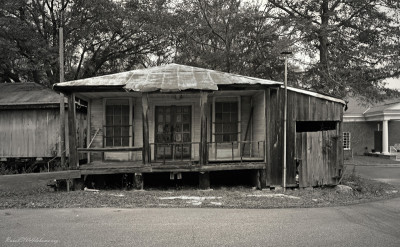
This is the oldest contributing property included on the Monroeville Downtown Historic District that’s listed on the National Register of Historic Places (NRHP). This building was built in Monroeville circa 1873 as the F. Metts Store. Around 1909, it w …
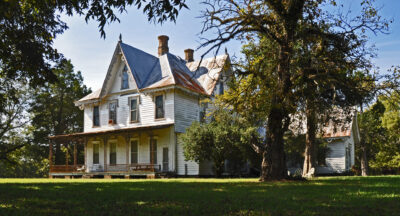
Fairhope is a historic 2 ½-story Gothic Revival-style plantation home that was built for Joseph Selden and his wife, Elizabeth Minge Selden, as the centerpiece of a one thousand-acre estate. The house was built by Theophilus Gilliam Fowler, a local bui …
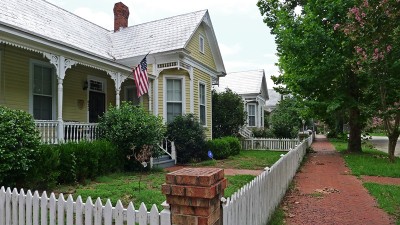
Once a gracious turn-of-the-century neighborhood, many of the homes here were close to condemnation when purchased by Circle “S” Industries, Inc. in 1980. In all, 12 Victorian cottages were renovated in the area. Built between 1870 & 1920, the vari …
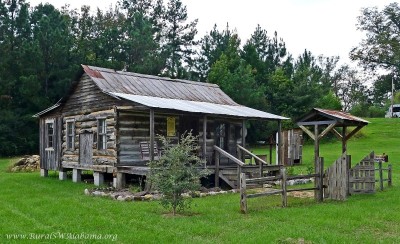
UPDATE: This Falkenberry log cabin was destroyed by fire during October 2013. The cabin has been replaced by the 1880s Stanton dogtrot cabin ( https://www.ruralswalabama.org/towns/peterman/). This log cabin was built by Deason Falkenberry during the 18 …
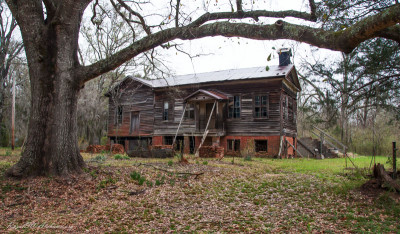
The Fambro-Arthur house gets its name from two of its owners. One was a judge, and the other was a former slave. Judge W. W. Fambro built this house in the early 1840s. He may have constructed the house using two older structures. D. EzeKiel Arthur was …
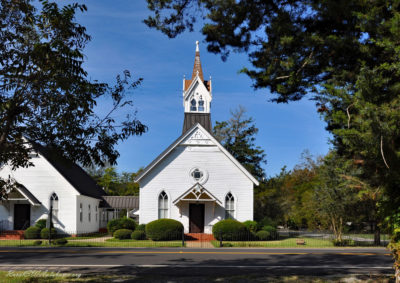
This Gothic Revival styled church was built in 1887 and dedicated in May of that year by Dr. J. L. Otts of Greensboro, Alabama. A fellowship hall was added in 1988. This church is located beside Highway 25 in Faunsdale, AL (GPS coordinates 32.455831, – …
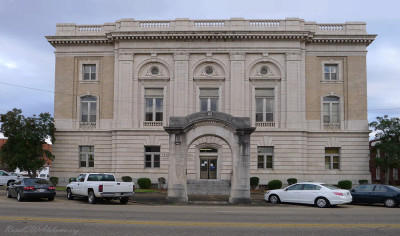
The Federal Building, originally the U.S. Post Office, was completed in 1909 from plans by James Knox Taylor, Supervising Architect of the Treasury 1897-1912. In front of the building is a free-standing memorial arch which was erected at the time of th …
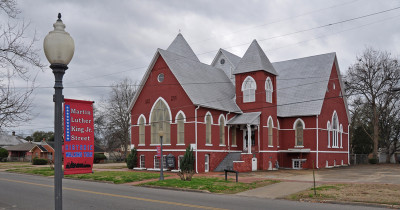
This Gothic Revival-style church building was constructed in 1894 by a local black architect, Dave Benjamin West. This church, along with its nearby neighbor, Brown Chapel AME Church, played pivotal roles in the Selma marches that helped lead to the pa …
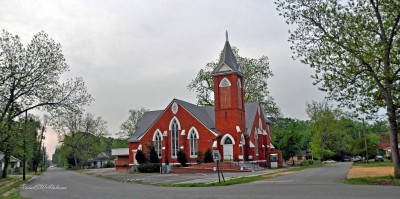
According to the August 5, 1866 minutes of the Uniontown Baptist Church, the Colored portion of the church requested that their White Brothers grant letters of dismissal to them and assist them with forming a separate and independent church. The reque …
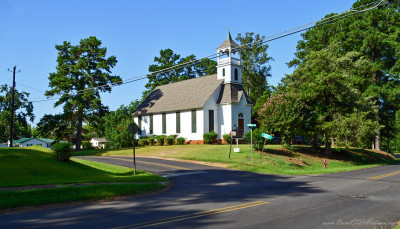
This church congregation was established in 1869 at the Lincoln School by freed slaves and representatives of the American Missionary Association. The church building was completed in 1871. It is the oldest and most unaltered of the churches built by A …
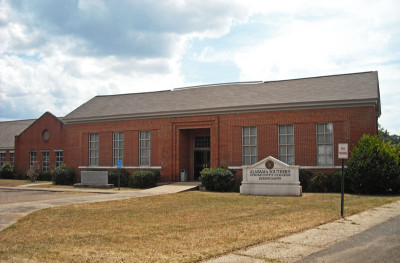
In 1891, nine agricultural schools, one in each congressional district, were authorized by the Alabama Legislature. One of the schools was located at Jackson on College Avenue at the location of the present day Jackson Middle School and Alabama Souther …
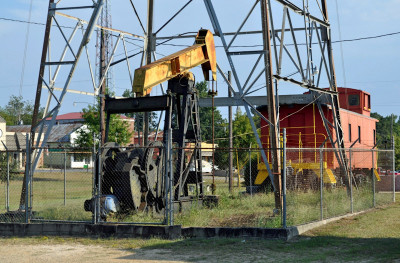
On January 2, 1944, the State of Alabama granted Hunt Oil Company a permit to drill the A. R. Jackson Well No. 1 at Gilbertown, AL. Hunt Oil Company was owned by the famous oil man, H. L. Hunt of Dallas, Texas. The drilling commenced on January 10, 1 …
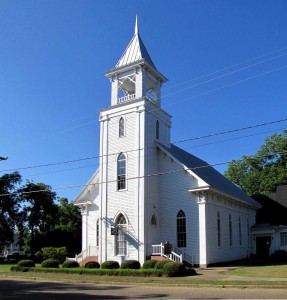
This church congregation was organized in 1845. The original church building was erected in 1856. It burned on September 17, 1869 and the present building was constructed in the mid-1880s. It features an open shingle covered belfry with “stick-style …
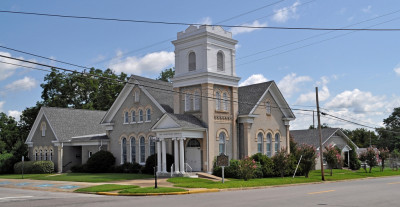
The First Presbyterian Church in Demopolis was organized by the Tuscaloosa Presbytery on November 1, 1839 with nine members. The congregation erected a brick church building on the northeast corner of the Demopolis Public Square in 1843. This building …
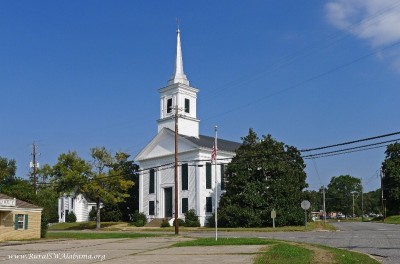
This Presbyterian Church was established as a congregation in 1824, worshipping in a smaller church in old Mesopotamia, one mile to the northwest of Eutaw. In 1847 the congregation purchased the old carriage shop of Edwin Reese at Main and Wilson and s …
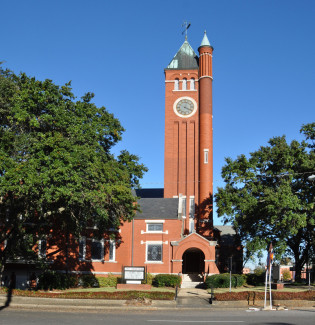
Organized in 1838, the Presbyterian congregation built the present church in 1893-1894. This is their third church building and the second on this site. It is a two-story, Romanesque Revival-style structure with a soaring tower on its east corner. The …
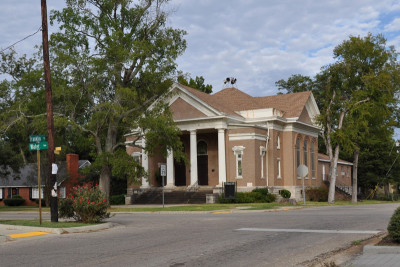
The Presbyterian Church was organized in 1848 at the home of Col. J. H. Davidson, The Slopes Plantation, which was located south of Uniontown. The congregation named their church Hopewell. They continued to meet at The Slopes. In 1853, the Hopewell Chu …
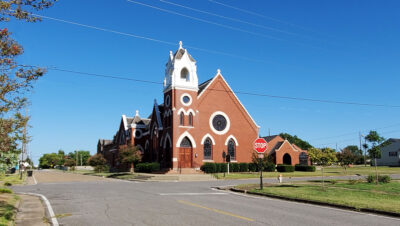
The exact date of the founding of the Demopolis Methodist Church is not known. However, the circuit riders of the Marengo Circuit (1826-1840) were active in the area, often preaching in the old log assembly building that stood then in the Public Squar …
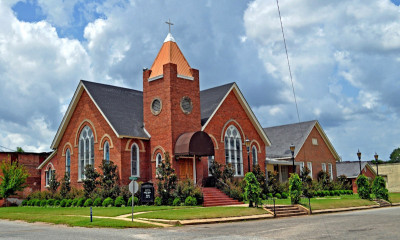
Records indicate that a Conecuh County Circuit first appeared in the Methodist Conference in 1821. The early church was called “Thick Woods” and was located about one mile west of Evergreen. This church burned around 1830. The present building was c …
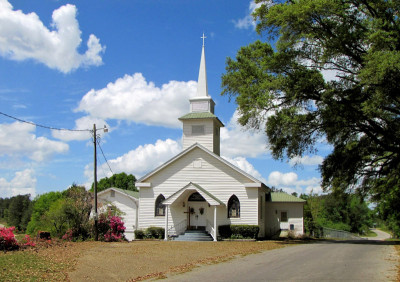
The first mention of an organized Methodist Church in St. Stephens was 1856 and this church was constructed in 1857. Land for the church was given by Levin Jefferson Wilson and his wife Elizabeth. A $500 contract for the church building was awarded t …
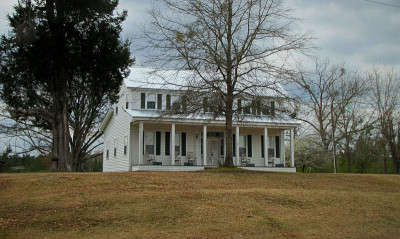
This two story house was built circa 1850 using hand-hewn 12-inch boards put together with pegs. The house was moved back about 30 feet from the highway in 1994 and remodeled by Marilyn Felts. During remodeling, modern conveniences were added to the ho …
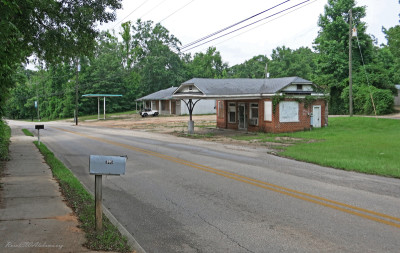
This building was built around 1920 as a gas station. Since its construction, it has served several purposes including being used as a laundromat. This building is a contributing property to the Thomasville Historic District that was added to the Natio …
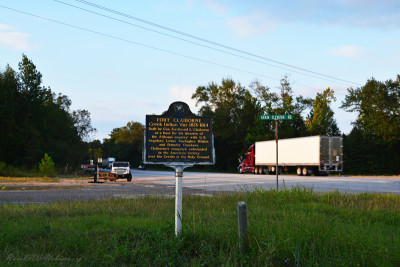
This marker is located about 2 miles west of Perdue Hill in Monroe County on the south side of U.S. Highway 84 near the intersection of Lena Landegger Highway/Grain Elevator Road (GPS coordinates 31.541358, -87.512957). It’s on the east side of the Ala …
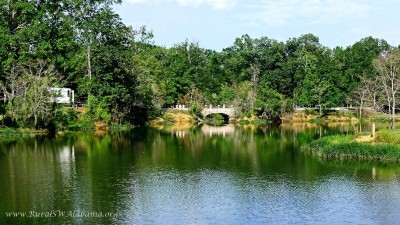
Foscue Creek Park is located at Demopolis, AL on the forested lake shore of Demopolis Lake, the largest lake on the Black Warrior-Tombigbee Waterway. This beautiful park is managed by the U. S. Army Corp of Engineers. The facility has both a day-use ar …
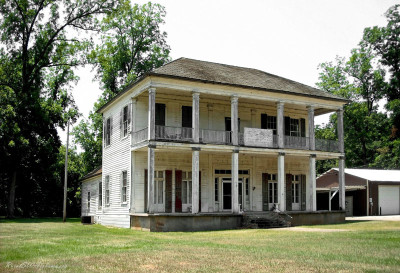
This house was built about 1851 by Dr. John T. Foster who was practicing medicine at Mt. Sterling. It is located in Butler on Young Street approximately 150 yards south of the intersection of Young Street and Riderwood Drive (32°05’06.9″N 88°13’25.9″W …
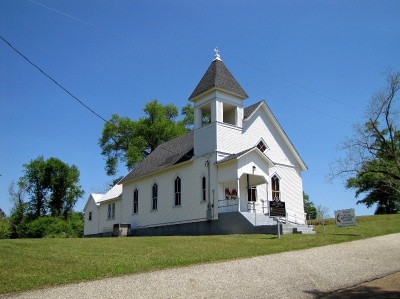
In the fall of 1902, two men and three ladies filed a declaration to form the Fruitdale Union Chapel Association. Property for the church was purchased from the Fruitdale Land Company. Ladies of the community sponsored many projects to raise money fo …
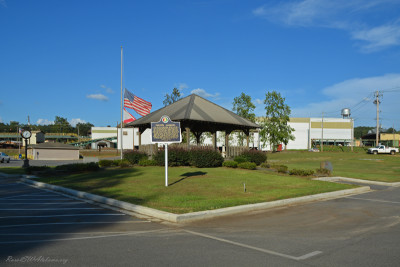
This historical marker is located on Main Street Circle in front of the gazebo that’s across the street from Fulton Town Hall (GPS coordinates 31.788716, -87.728097). This marker was erected in October 2010 by the Alabama Tourism Department and the Tow …
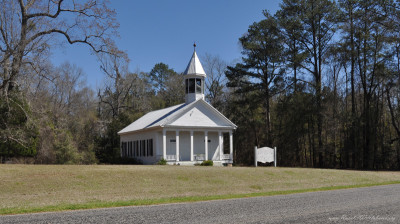
The original church building was constructed in 1857 on the present site of land. The current building was completed in 1882 and was an active church until 1998. The church continues to have an annual homecoming service that brings back descendants of …
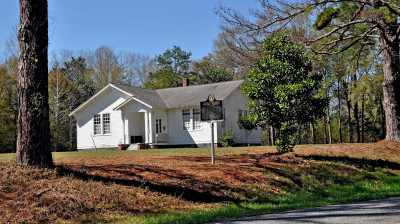
Furman, AL is a small community located is eastern Wilcox County. On May 13, 1999, the “Furman Historic District” was placed on the National Register of Historic Places (NRHP). Shown is the “Furman National Historic District” historical marker that was …
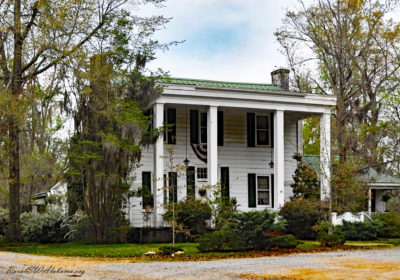
It’s believed that this dwelling was built in the late 1820s. The house’s modified I-frame architecture, the absence of a center hallway, and federal style interior, indicate that it predates the Greek Revival style of building that was popular in the …
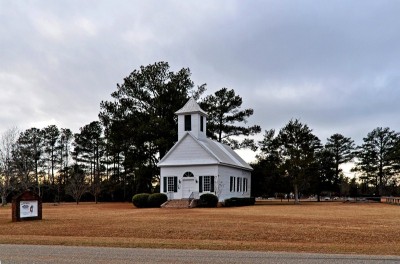
This church was founded in 1819 by Rev. Joshua Wilson. In 1854, a two-story building was built on this site. The lower floor was a church and the upper floor served as a Masonic lodge. This building was damaged by a tornado in 1911. It was rebuilt imm …
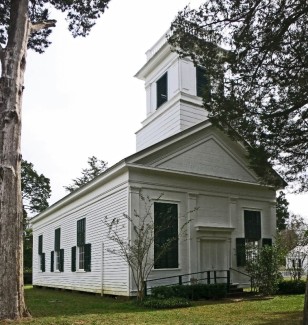
During the 1860 – 1880 period, Edward N. Kring (1836-1910) emerged as the leading carpenter and builder of Gainesville. He built several businesses and homes in the area. He also built the church that’s shown for Gainesville Methodists in 1872, and the …
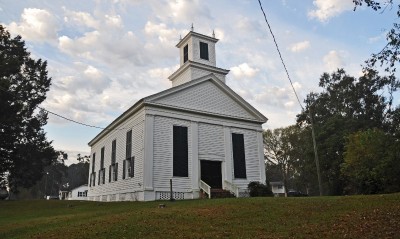
This is Gainesville’s oldest church. The congregation was organized in April of 1837 through the joint efforts of a small group of Southern-born Presbyterians and New England Congregationalists, including the family of Col. Moses Lewis who established …
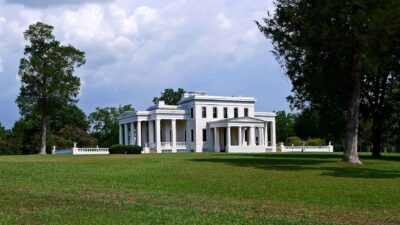
Constructed over an 18 year period (1843-1861), Gaineswood evolved from a two-room “dogtrot” cabin into a Greek Revival style mansion. General Nathan Bryan Whitfield, the builder, was his own architect, though he had no formal training. The labor was …
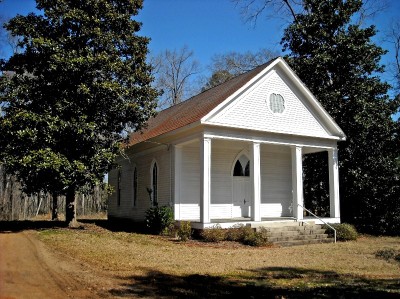
The Presbyterians originally built in the area a hewn-log house for a church. It was replaced with a frame building in 1830. The present Greek Revival style Presbyterian Church was built around 1890 by the Gaston family. A Gaston descendant, Jim Watso …
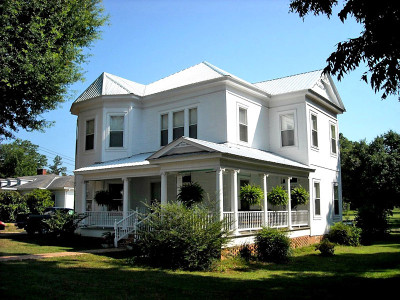
This is one of several “Sears, Roebuck & Co.” homes that were shipped by railroad to Wilcox County in the early 1900’s. They came as modular sections and local carpenters constructed them from the “kit”. This home is located on Broad Street near th …
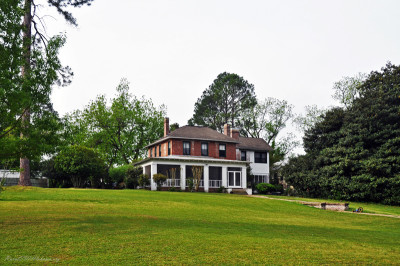
There may be no home in the Black Belt with more history attached to it than this one. It was built in 1828 – 1829 by John Gayle, a South Carolina native. Prior to moving to Greensboro, Gayle lived in Monroeville, Al where he served in the territorial …
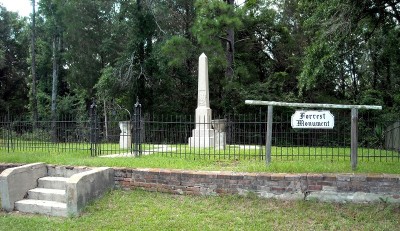
At the site of this monument, Gen. Nathan Bedford Forrest and his troops were paroled by Gen. Canby thus being the last troops east of the Mississippi to do so. The date was May 15, 1865. The Ellis home stood on this site. When it burned years later, …
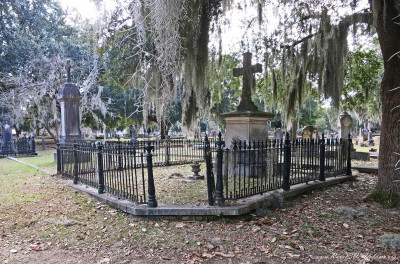
William J. Hardee (1815 – 1873) graduated from the U.S. Military Academy at West Point in 1838. He served in Florida during the Second Seminole War and was a veteran of the Mexican War. Hardee published Rifle and Light Infantry Tactics for the Exercise …
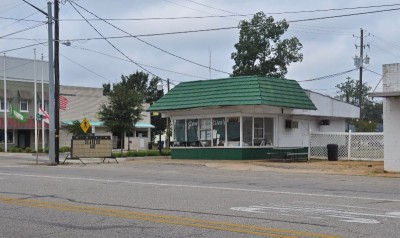
Shown is Gene & Ellen’s Drive-In which is located in the middle of downtown Grove Hill. You walk up to the window, tell the folks what you want and then go back and sit in your truck. When it’s done, they wave at you, you pay and go on your way. Ev …
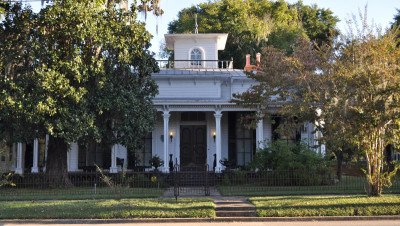
This house was built circa 1854 by Selma businessman George O. Baker. The Neo-Classic architecture features a front porch with pillars and a small cupola that was saved after a fire destroyed the second floor. Lincrusta, a wall covering made to simulat …
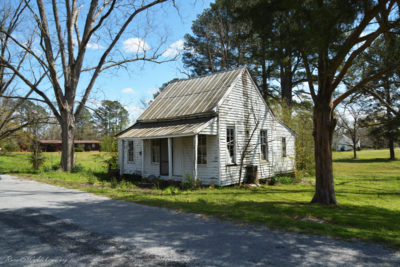
This small cottage was built circa 1880 as a servant’s house. It is located on the south side of Third Avenue approximately 100 yards east of the intersection of Third Avenue and 2nd Street (GPS coordinates 32.428303, -88.374070). This is a private res …
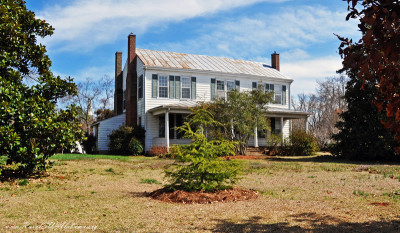
This house was built by Edwin D. King as a wedding present for his daughter Sarah when she married John Goree in May 1831. At that time it had four rooms and a big hall downstairs and two rooms upstairs on the front. There were two staircases, one in t …
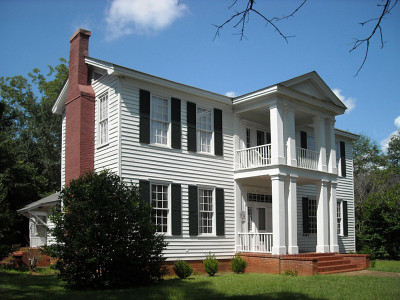
This house, built in the 1830’s, was the home of Alabama’s First Civil War Governor, Andrew Barry Moore. It is located on the north side of Green Street approximately 0.6 mile west of the Perry County Courthouse (GPS coordinates 32.635025, -87.328845) …
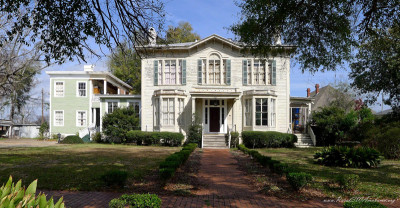
This Italianate-style house was built circa 1857. In 1865, Wilson’s Raiders spared the house out of respect for Selma’s Mayor M. J. Williams. For many years, it was a prominent bread and breakfast where former first lady Lady Bird Johnson stayed on sev …
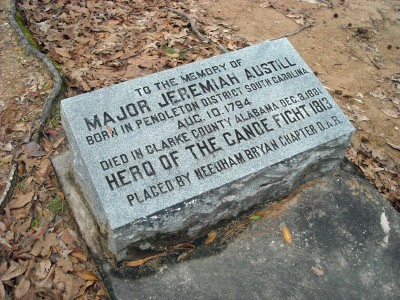
Jeremiah Austill is known as the Paul Revere of Clarke County. As a teenager, he volunteered to make a dangerous night ride to Mt. Vernon following the Creek War attack on Ft. Sinquefield. He was also a hero of the famed Canoe Fight on the Alabama Rive …
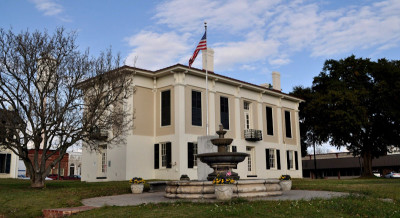
Soon after the town of Eutaw was surveyed in 1838 and laid out as the newly established seat of Greene County, John V. Crossland began construction of a two-story courthouse which was completed in 1839. This courthouse was burned in 1868 to destroy ind …
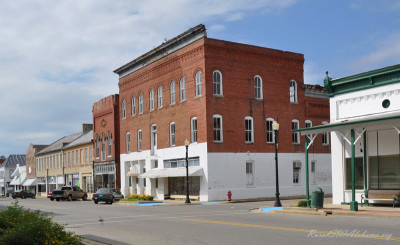
Once an elegant downtown hotel, the Greensboro Hotel remains a local landmark. Impressive brickwork is its most significant feature. Brick-arched doors and windows stand out prominently. The hotel began as a two-story building with “Flemish bond” brick …
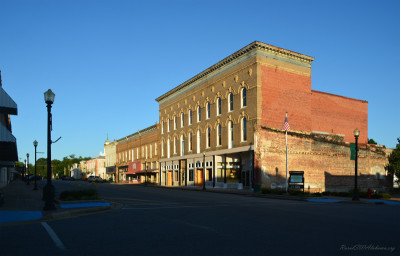
The Greensboro Opera House was built in 1903 on the site of an earlier opera house. The original, built in the 1890s, had burned the preceding year. Although it was grand in design for a small town like Greensboro, the Greensboro Opera House was typica …
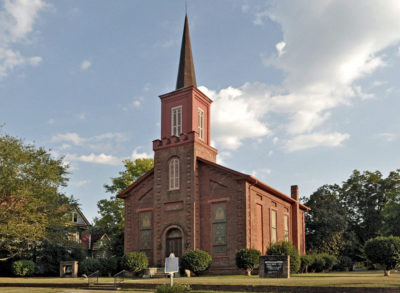
Presbyterians were among the earliest settlers of Greensboro, AL. In 1823, the first Presbyterian church was organized in Greensboro by Rev. James Hillhouse of South Carolina with Patrick Norris and William Hillhouse, veterans of the American Revolutio …
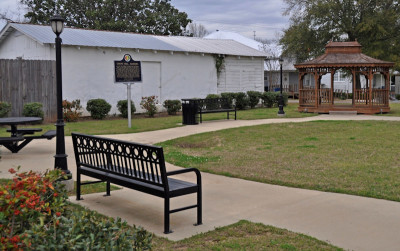
This historical marker is inside the Laurie Carleton Park that’s located at downtown Grove Hill in front of the Clarke County Courthouse (GPS coordinates 31.709395, -87.777861). It was erected in April 2010 by the Alabama Tourism Department and the tow …
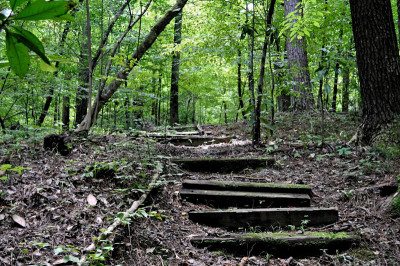
Haines Island Park is maintained by the US Army Corps of Engineers. Whether you’re inclined to drive, hike, canoe or kayak, Haines Island offers a fantastic opportunity to observe nature in a natural setting. Birding can be spectacular. The park is a …
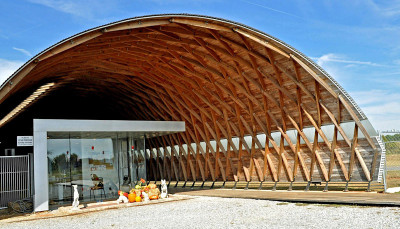
Hale County had a legal obligation to provide an animal shelter for the county but had no resources to build it. In 2005, Hale County representatives approached Auburn’s Rural Studio and requested that they design and build this shelter. Four Rural St …
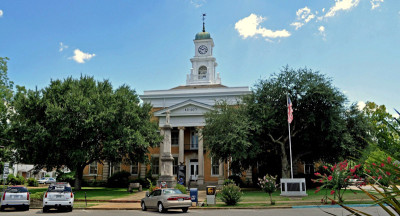
Hale County was created in 1867 with most of it being taken from Greene County. Greensboro was selected as the county seat. Greensboro citizens had promised to provide a courthouse and jail free of charge if selected. To fulfill this commitment, Gre …
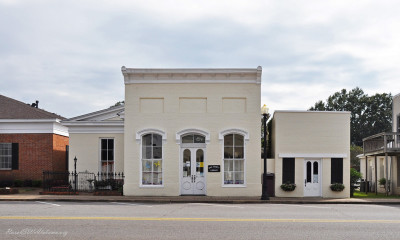
This building is located on Main Street at downtown Greenboro near the courthouse. It dates back to the 1870s and served in the late 1800s as a law office for former Alabama governor, Thomas Seay. Alfred M. Tunstall who represented Hale County in the l …
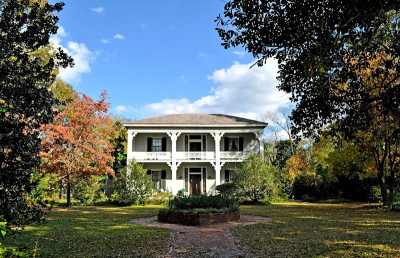
This beautiful house was built around 1845 by a prosperous Greensboro merchant tailor named Philip Happel. This two-story home has both upper and lower verandas running the whole width of the house. It has four large, square columns running to the ro …
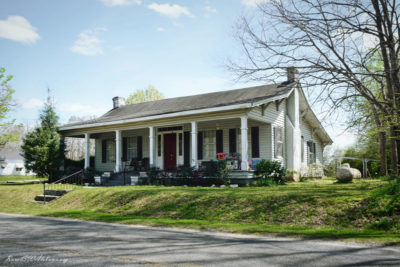
This is a Country Vernacular style home with Greek Revival influences. It was built circa 1900. This house is featured site #33 in the Sumter County, Alabama Historical Points of Interest visitors brochure. It is located on the south side of Third Aven …
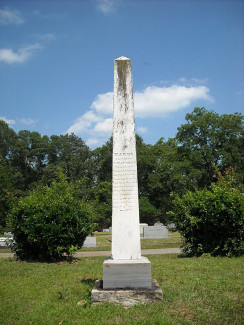
Around midnight on October 15, 1854, the four-story brick Howard College building (then located near the Siloam Baptist Church in Marion) caught fire. Housed in the building were 140 or more students and facility. The fire begun in the basement under t …
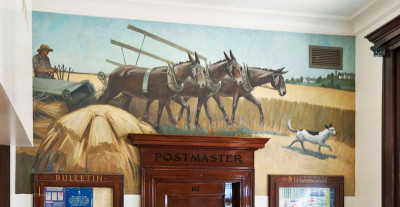
Inside the Monroeville, AL Post Office is a New Deal mural titled, “Harvesting”. This oil-on-canvas painting shows a farmer using a three-mule team to pull a threshing machine across a wheat field. The artist that painted the mural is Arthur L. Bairn …
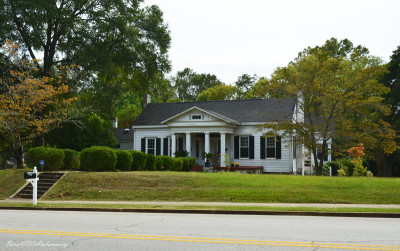
The Harvey house, also referred to as Seven Pines, was built circa 1848 by Col J. G. Harvey, long-time editor of the Alabama Beacon. This house has a simple design, with a gable-roofed front porch and four square, Doric-detailed columns. There is a cen …
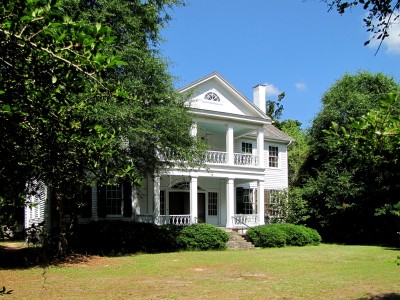
The Hawthorne House, also known as the Col. J. R. Hawthorne House, is a historic plantation house located in east Wilcox County in the community of Pine Apple. The two-story wood-frame house was built circa 1854 for Joseph Richard Hawthorne by Ezra Plu …

Healing Springs was a thriving resort in the early 1900s. Located at this site were 17 overflowing springs and the water from these springs was supposed to have “healing” powers. People from far away came seeking cures for all types of ailments. The he …
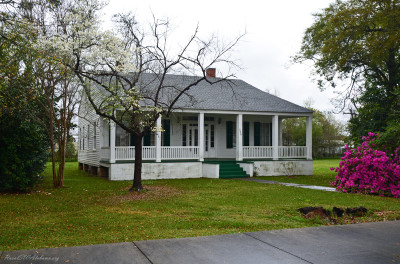
This 1 1/2 story, 5 bay wide, Greek Revival house has a recessed, front porch and a side gable roof with returns. The full width porch has six square wood columns and a balustrade. The single-leaf entrance is surrounded by sidelights and transom and pi …
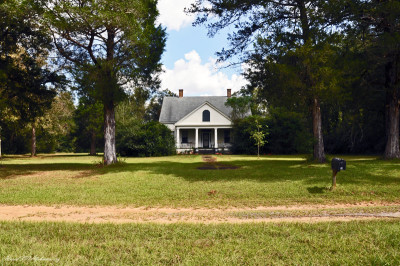
The land on which this house is located was patented by the U. S. government to schools along with all of the 16th sections in the State. On January 4, 1840, this property was conveyed to Robert Collins Hearin, Sr and his wife, Nancy Mayfield Hearin, w …
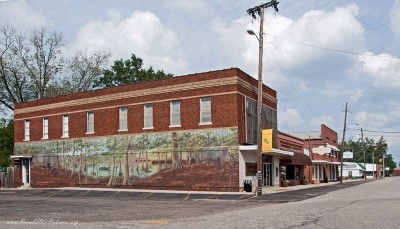
The “Heart of Clarke” wall mural is located beside the mini-park at the Courthouse Square in Grove Hill, AL. It was painted by local artists, Johnna Bush and Sharon Dozier. In 2007, The Grove Hill Arts Council approached Johnna Bush about painting the …
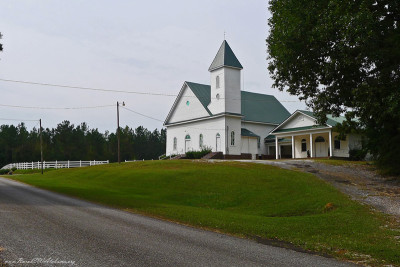
This church is located just east of Highway 5 about midway between Marion and Brent. The church is on a hill overlooking Coone’s Landing Bridge on the Cahaba River. Drivers traveling by on Highway 5 have a beautiful view of the church grounds but what …
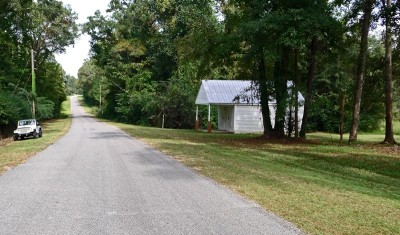
This building was built circa 1895 approximately one-half mile south of its current location and served the community as a general merchandise store owned by William Fletcher Moore. The building was moved to its present location in 1904. Also during 19 …
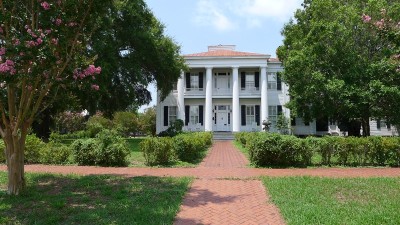
This Greek revival mansion was built c. 1855 for William B. King and named “Fairoaks” for the many trees found about the place. King was the nephew of Vice President William Rufus King. Ann B. Wilson, a half-sister of the builder, inherited the house i …
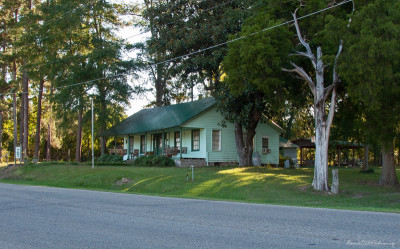
This house, now called the Green House, is probably the oldest dwelling in Butler. It was originally a 2-room dogtrot cabin, possibly built by Jim Kendrick around 1840. The house is now used as the Girl Scout Headquarters for Butler. It is located on H …
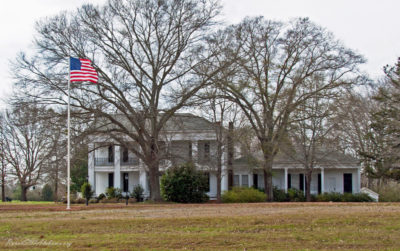
The Henry House, also known as the Lowry-Ford-Henry House, is a historic antebellum plantation house in Marion. This is just one of about 90 antebellum structures in the Marion area. It is thought that the house was built during the late 1840s or 1850s …
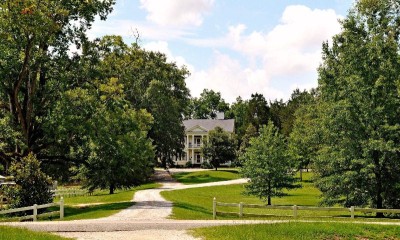
Dr. James A. Hildreth, son of the Revolutionary War Veteran, Reuben Hildreth, built this home. He bought the property where this home is located on May 28, 1845. The house was built by the master carpenter, Rafe Chase, well before the Civil War. A date …
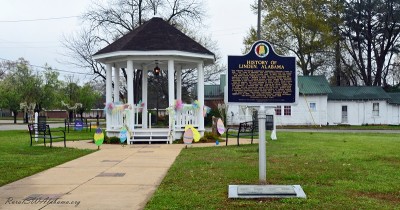
This historical marker in a small park at downtown Linden. The marker was erected by the Alabama Tourism Department and the City of Linden in 2010. Below is the text on the marker: ——— Side 1: HISTORY OF LINDEN, ALABAMA: The Alabama Territorial L …
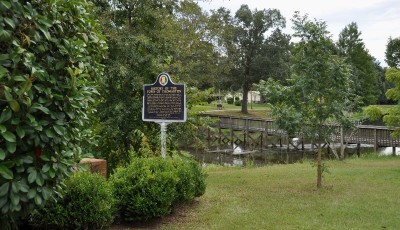
This historical marker is located beside Highway 28 at Thomaston’s Town Pond. It was erected April 2010 by The Alabama Tourism Department and the town of Thomaston. Below is the inscription on the marker: —— HISTORY OF THE TOWN OF THOMASTON About 1 …
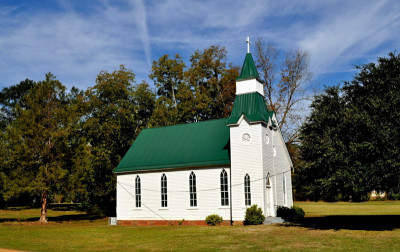
The Newbern Methodist congregation selected the present site and completed this church in the fall of 1884. (Prior to this time, they held their services in the Presbyterian Church.) The lumber used in the construction of the church building is hand- …
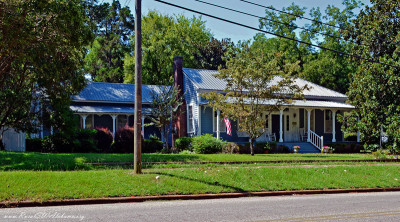
Located in the Green Street Historic District, this Greek Revival cottage has small ornate columns with saw-work details on the porches. The house has a double-door front entrance that’s surrounded by a full width transom and sidelights. Around 1870, a …
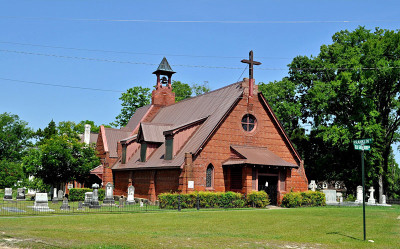
In 1844, Episcopalians in Uniontown and Marengo County united to form Union Parish. The parish was admitted to the Diocese of Alabama on May 2, 1845. After the donation of this site in 1847, ladies of the congregation diligently worked to raise suffici …
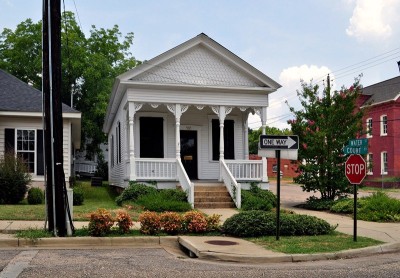
The Horn-Jones-Sadler law office was built around 1846. It is a one-story, shotgun structure with a gabled end portico. The building contains Victorian alterations which include Eastlake colonnettes and segmental–arched door and windows. During the …
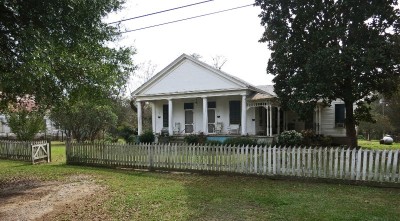
This is a Greek Revival style house with Victorian additions. It was probably built in the 1840-1850 time period. The original owner of the house is not known. This house is similar in form and arrangement to the Fall House located next door. However, …
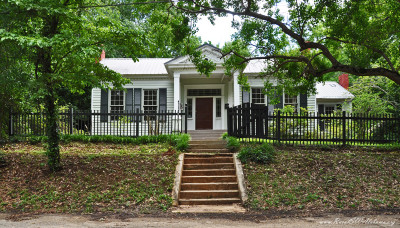
The Huntington-Locke House, built circa 1834, was originally the home of the noted silversmiths Roswell and William Huntington from North Carolina. The Huntingtons were gifted artisans. They enthusiastically bought and sold property and are credited wi …
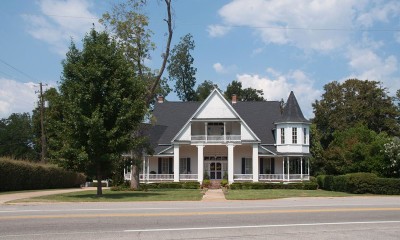
This Queen Ann style home was built between 1906 and 1920 by a contractor from Brewton, AL who built several homes in Monroeville during this time period, most having the characteristic turret on the front. The home was built by local attorney Charlie …
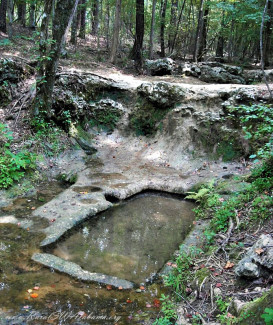
The origin of these man-made pits is uncertain. Some say the Choctaw carved them out. Some say it was the Spanish. The “Indian Baths” are included in Alabama’s Tapestry of Historic Places 1978 published by the Alabama Historical Commission. GPS coordin …
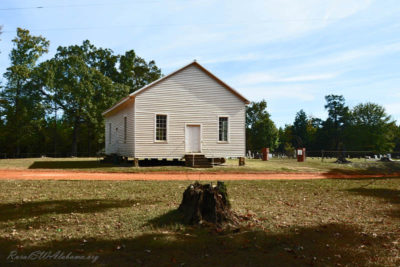
The Indian Springs Baptist Church is located in north Monroe County near the McWillams community. An “Indian Springs Baptist Church” historic marker is located beside Highway 21 approximately 2.5 miles south of McWilliams (31.795464,-87.093534 – Googl …
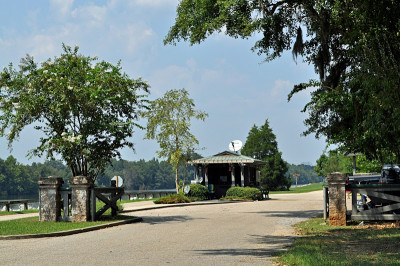
This beautiful park is maintained by the US Army Corp of Engineers. It has the setting to accommodate most types of outdoor activities – camping, picnicking, bird watching, bike riding, hiking, fishing and more. The park features an array of campsites …
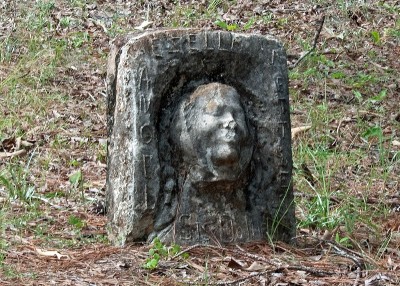
Located near the southern tip of Clarke County just west of Carlton is the Mt. Nebo Baptist Church and Cemetery. In the cemetery, there are three graves that have very unusual markings. The headstones on these graves contain “death masks”. These headst …
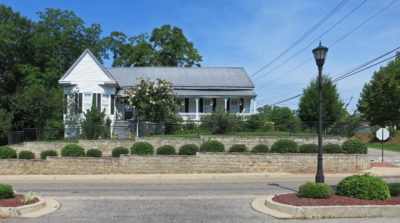
This home is a contributing property to the Thomasville Historic District that was added to the National Register of Historic Places (NRHP) on February 12, 1999. It is a 1 ½ story Queen Anne, L-cottage home with a side gable roof. Mr. J. S. Nored purch …
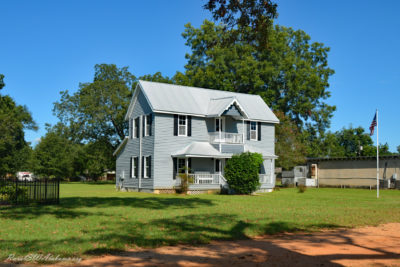
The old J. W. Jones home is located in the Frisco City Town Park along with the old Jones Mill Post Office, the first Jones Mill one-room jail and an old Frisco Railway caboose. Prior to being named Frisco City, the town was known as Jones Mill in hon …
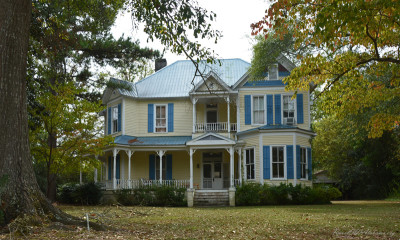
This two-story Queen Anne style house was built circa 1900. Features of the house include a hip roof with gables, front facing gable with one story bay window, double tier gable roof portico, wraparound porch with turned posts and bannisters, and decor …
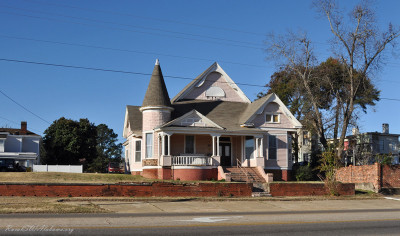
This one-and-one-half story, Queen Anne style house was built circa 1890. Features of the house include a hip roof with gables, a corner turret with a conical roof, cutaway bays, and an inset bowed porch with classical columns on wood piers and lathe-t …
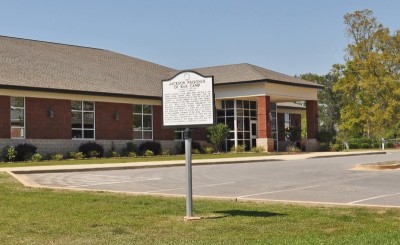
This historical marker is located on College Avenue at Jackson, AL in front of the Clarke-Mobile Gas District office (GPS coordinates 31.531688,-87.891496). Following is the inscription on the marker: ********** Jackson Prisoner of War Camp ——– ** …
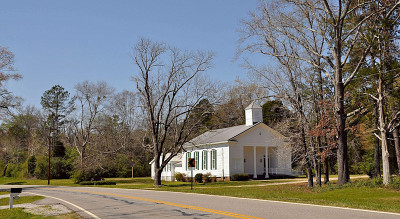
This church is located in the community of Jefferson in Marengo County. The church was established as Mt. Pleasant Baptist in 1820 and is among the oldest in the Demopolis area. The present church building was built around 1860. Buried in the church’s …
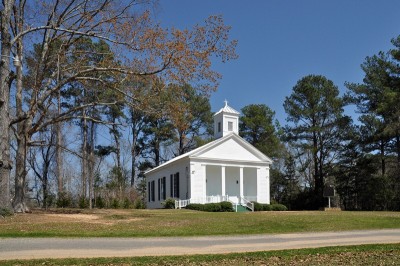
This is a Greek Revival, one-story church with a pedimented end-gable that has a recessed portico with columns set in antis and a square bell tower. It was dedicated on the first Sunday in June, 1856 by the Reverend Phillip Phillips Neely, minister fro …
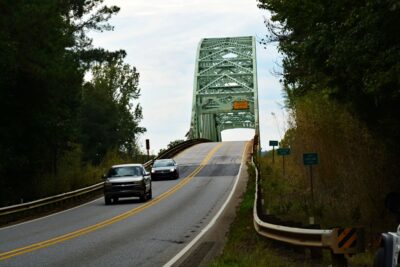
This is a steel through arch style bridge that’s across the Tombigbee River on US 84 at Coffeeville. The bridge was completed in 1958 and is named for former Alabama Gov. Jim Folsom Sr. Click here for a Google Street View, *****
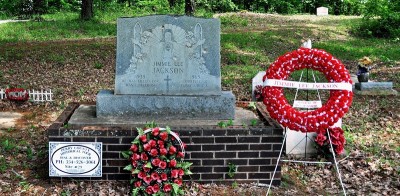
On February 18, 1965, the 26 year old Marion native, Jimmie Lee Jackson, was shot by an Alabama State Trooper while participating in a civil rights march in Marion. He later died as a result of infection caused by the gun shot. His death was one of th …
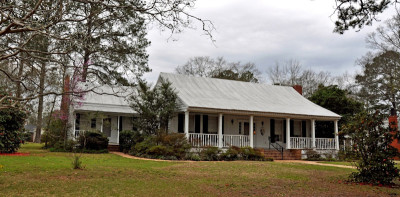
The John A. Coate House is a historic house in Grove Hill, Alabama. The one-story spraddle-roof house was built in 1855. It was added to the National Register of Historic Places on July 28, 1999. It was listed due to its architectural significance as …
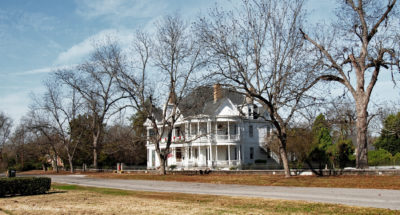
In 1878, John C. Webb purchased this block of land and house, believed to have been built after 1869. An early photograph shows an Italianate style house. Over the years, this home has been remodeled several times. Today, the house is a mixture of Quee …
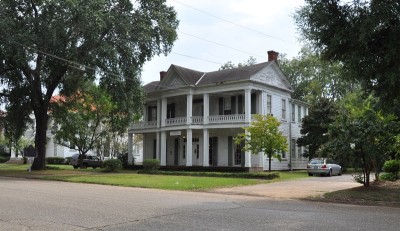
This was the home of John Tyler Morgan (1824-1907), one of Alabama’s most honored political and military leaders. Constructed in 1859 by Thomas R. Wetmore, it was purchased by Morgan in 1865, and served for many years as his principal residence. Morgan …
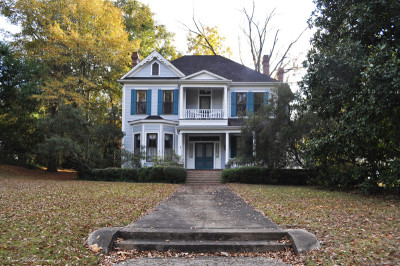
This two-story Victorian home was built circa 1900. Features of the house include a hip roof with gables, five bay facade with recessed side wing, central double leaf entrance with full transom and sidelights, two story double portico and wrap-around p …
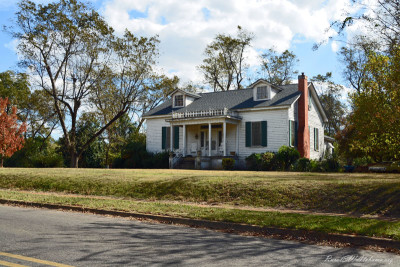
In 1821, just two years after Alabama became a state, John Johnston purchased land from the Federal Government for a home. Shortly afterward, this framed cottage type house was built of long leaf yellow pine which was growing in the vicinity. The lumbe …
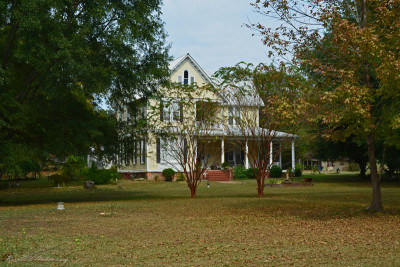
This house was originally built circa 1840 as a one story Italianate cottage. The second story and Victorian details were added to the house around the early part of the twentieth century. Features of this house include a hip with cross gable roof, fro …
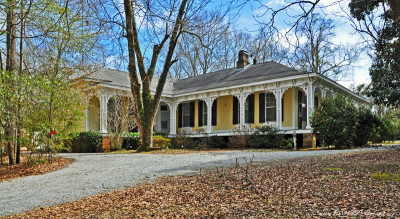
This home was built circa 1835 by Osmond T. Jones. It is believed that the house was designed by the same architect that designed Beauvoir, the Jefferson Davis home in Biloxi, MS. Captain John B. Cooke, who served as an infantry officer in General Edmo …
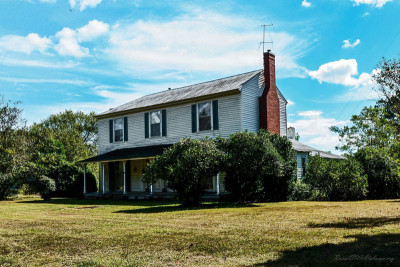
Robert Tingnal Jones, a graduate of West Point, moved to Perry County in 1838 where he surveyed and constructed the Cahaba and Marion Railroad. He built this house around 1840. The home is built in an “L” with center hall and parlors on each side. The …
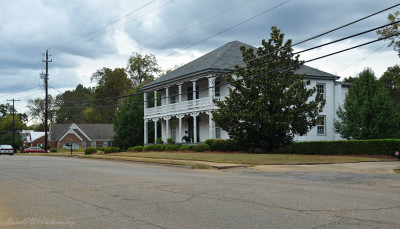
This dwelling, also referred to as the Ballard-Haynie-Barnes House, is thought to have been built around 1845. It is a two-story, hipped roof structure with a full height gallery with balcony. The house features decorative saw-work columns and railings …
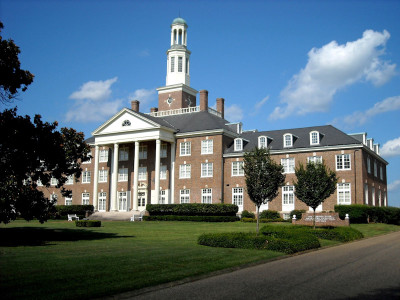
NOTE: Judson College suspended its academic operations on July 31, 2021 ***** Judson College was established in 1838 by members of Siloam Baptist Church, and it opened January 7, 1839. Judson is the fifth oldest women’s college in the United States. Th …
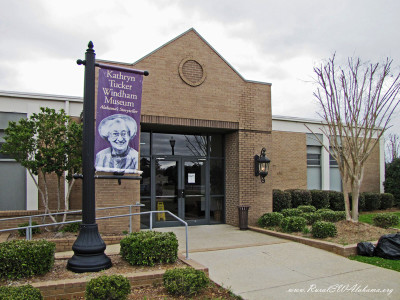
The Kathryn Tucker Windham Museum is located on the campus of Alabama Southern Community College in Thomasville. It is dedicated to preserving the works of native author, storyteller, and journalist, Kathryn Tucker Windham. Windham spent much of her li …
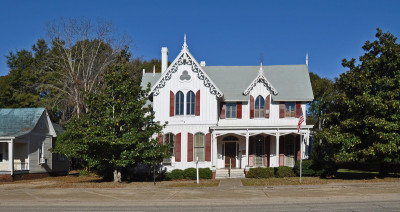
This is one of the few Gothic Revival style homes built in Selma. It was built in 1884 for Chambliss Keith and his wife, Ada Hooper Keith, and has remained in the same family since. In 1964, their son, Alston Keith, moved his law office into the buildi …

This Italianate raised cottage was built ca. 1866 for H. A. Stollenwerck, a local businessman and bank owner. He sold the house a year later after the death of his wife. During the early 20th century, the house was remodeled into apartments and rented. …
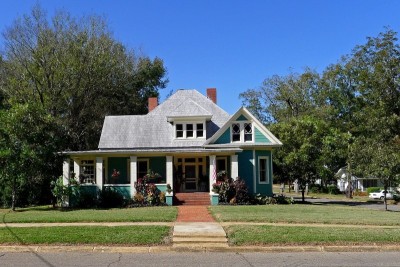
This home, also referred to as the Dean’s House, was built around 1904 for T. D. and Leila Rush Kemp. The original house was a one-story frame building with additions made to it later. Mr. Kemp, who was an engineer, established the Marion Light and Pow …
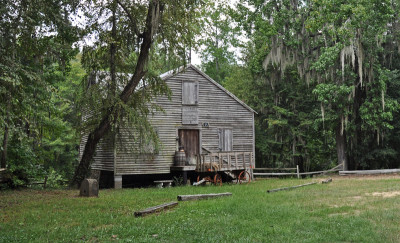
Kenan’s Mill is a living-history museum. The main feature is Kenan’s grist mill which was built in the early 1860s and continuously owned and operated by the Kenan family for over 100 years. Also located at the mill site is a mill house and early 20th …
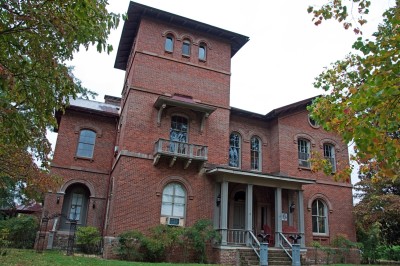
Kenworthy Hall, also known as the Carlisle-Martin House and Carlisle Hall, was designed by New York architect, Richard Upjohn, and is one of the best preserved examples of his distinctive asymmetrical Italian villa style. It is the only surviving resid …
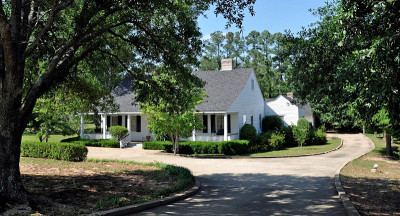
This was the home of Isham Kimbell, the only family member to survive the Kimbell-James Massacre which occurred in Clarke County near Whatley, AL in 1813 during the Creek Indian War. Kimbell served as a sheriff of Clarke County and later Circuit Court …
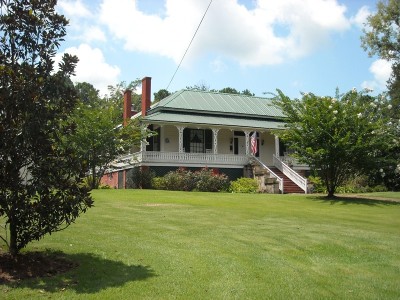
This is one of Marion’s oldest homes thought to have been built around 1819. It is a raised cottage which is rare in the Black Belt, and is most often associated with homes along the Gulf Coast. General Edward B. King resided in this house prior to t …
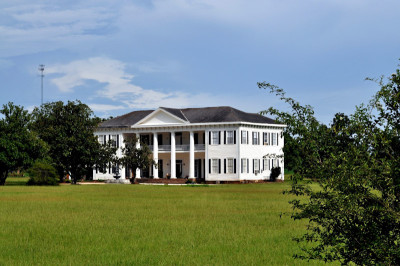
The King Plantation House was originally located in a bend of the Alabama River at Packer’s Bend. Construction began on the home in the late 1850s by William Douglas “Dock” King (1826-1866), a cousin of U. S. Vice-President William Rufus DeVane King. T …
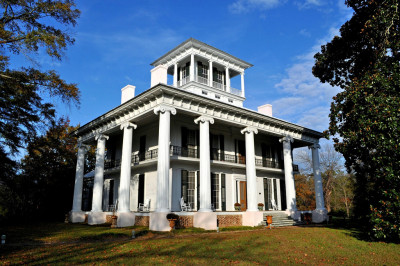
Kirkwood is a historic antebellum plantation mansion located in Eutaw. It is a Greek Revival style house with Italianate influences. The house has two primary floors and a large cupola crowning the low-pitched hipped roof. The roof eaves are ornamented …
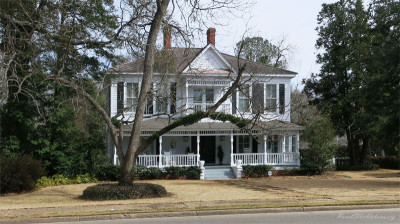
This two-story, Queen Ann-style home was built in 1896 for Dr. Klyce who was the president of the First District Agricultural College which was located across the street. It features a full-width porch on the first floor and a central balcony on the se …
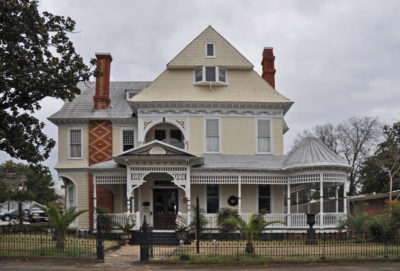
This beautiful 2 1/2 story Queen Anne home was built ca. 1900 for Jewish businessman, Levi Koenigstahl. Features of this house include a multi-gable roof with flared eaves of pressed metal shingles, diagonal brickwork on the front chimney, hip roof tur …
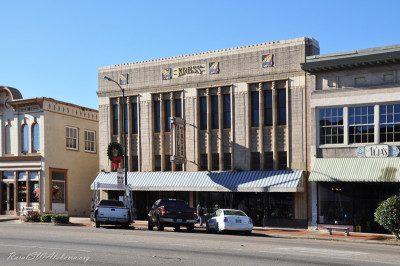
S. H. Kress & Co. was the name of a chain of “five and dime” retail department stores in the United State which operated from 1896 to 1981. The Kress chain was known for the fine architecture of its buildings. A number of former Kress stores are re …
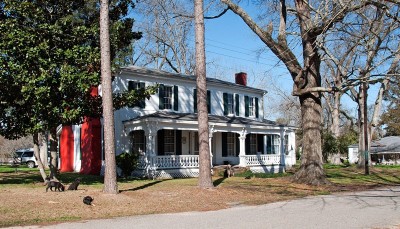
This Vernacular “I” style home, built about 1865, was the home of Edward N. Kring who was Gainesville’s leading late 19th-century builder. He built both the Methodist Church and St. Alban’s Episcopal Church as well as several homes and businesses. It …
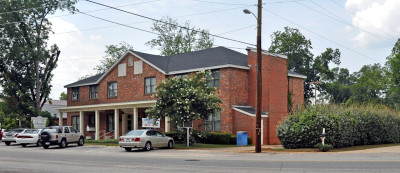
At this location prior to the construction of this building, there was the Commercial Hotel which was a wood-frame building. In 1939, this old building was demolished and replaced with a new brick building. The hotel was sold in 1952 and new management …
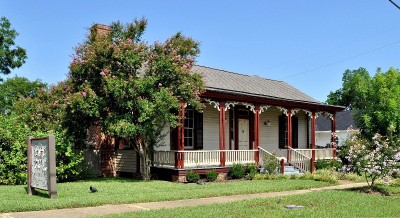
The Laird Cottage is a restored 1870 residence with Greek Revival and Italianate style. The building now serves as the headquarters of the Marengo County Historical Society. It has a museum that contains exhibits and works of Geneva Mercer, national an …
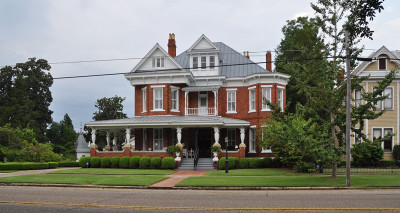
This is a 2 ½ story Queen Anne style home with Neo-Classical influences. It was built ca. 1893 by Ernest Lamar, who was responsible for the final construction of the First Baptist Church on Lauderdale. The house features a wraparound porch supported by …
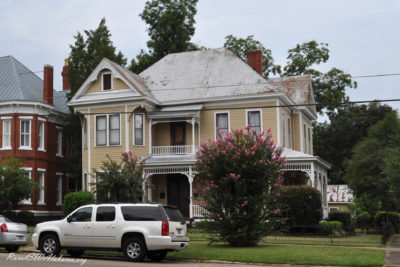
This two-story Queen Anne style home was built ca. 1892. Actress Jessica Lange lived here during the filming of the movie “Blue Sky,” for which she won an Academy Award for “Best Actress.” This home is a contributing property to Selma’s “Old Town Histo …
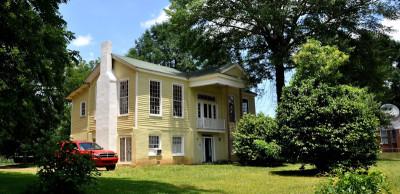
This home was built by Henry C. Lea, brother of Margaret Moffet Lea, and it was the site of the marriage of Margaret Lea and General Sam Houston, President of the Republic of Texas in 1840. The year that the house was built is not known but it was pri …
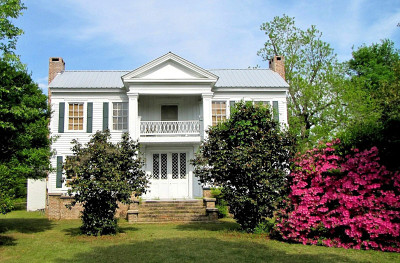
This Greek Revival style home was built circa 1852 for Colonel James Madison Lee, who was born 1820 in Louisa County, Virginia. The house was constructed with hand-hewn timbers. Colonel Lee served in the War with Mexico. He helped to build the Southern …
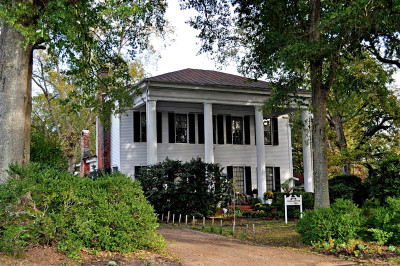
Originally built as a small, one-story dwelling, the house was later enlarged into the present two-story, Greek Revival structure. A merchant, Robert Shackleford, purchased this property in 1836 and built a small, single-story home that contained only …
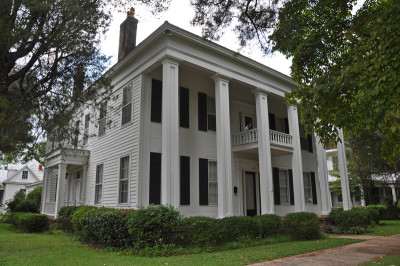
NOTE: This historic home was destroyed by fire on November 14, 2017. This Greek Revival house was built circa 1850 by Thomas Helm Lee, master builder and owner of early Selma lumber yard. Born in Kentucky, he was the son of Miller Lee of Buckingham Cou …
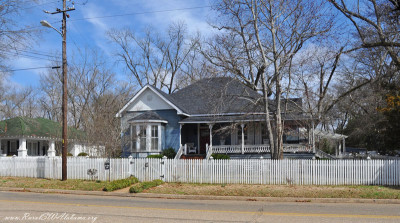
Built about 1898 by Lane Lee, this house is typical of late Victorian cottage style prevalent from 1890 to 1910. Features of the house include a wraparound porch with decorative posts and bannisters. The front room on the north side has a bay window th …
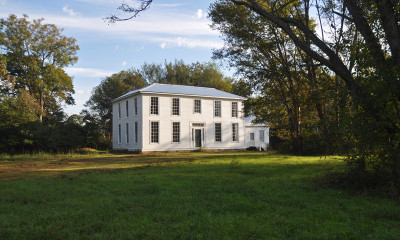
This was the home of Moses Lewis, founder of Gainesville. Lewis was responsible for laying out the town in 1832. This house was built circa 1835 and it occupies Lot Number 1 on the original plat. It has a large hand-carved wooden staircase and two unde …
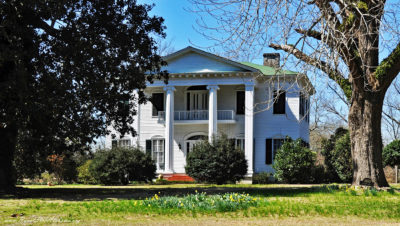
Liberty Hall, also known as the John Robert McDowell Place, is a historic plantation house located near Camden. This two-story Greek Revival-style mansion was built during the 1850s for John Robert McDowell by W.W. Robinson. It is one of the least alte …
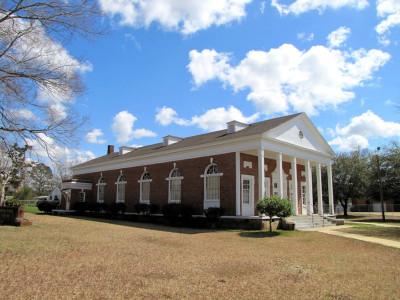
The Lincoln Normal School was a historic African American school in Marion, Alabama. Lincoln Normal was founded in 1867 by freed slaves as a school for African-American children. In 1870, the school expanded to include teacher training and for a time b …
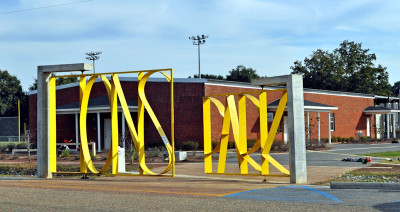
In 2004 the Lions Club, the City of Greensboro, Hale County, the Riding Club and the Greensboro Baseball Association formed a joint committee to manage and care for the future of Lions Park, the largest park in Hale County. They soon approached Auburn …
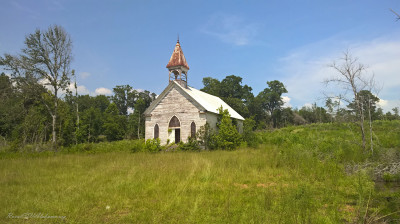
Provided are pictures of a little Presbyterian Church that is located in the community of Coatopa, AL in Sumter County. It is on the north end of Coatopa Drive approximately 0.2 miles from the intersection with Ala Hwy 28 and this intersection is appro …
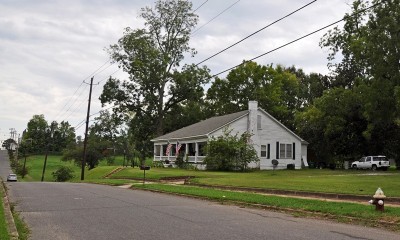
This one-story wood-frame house, built in the early 1840’s, features a Creole Cottage-style architecture with later Greek Revival modifications. It is one of three similar Creole Cottage-style homes in Eutaw. A lower foundation, square piers, and an ab …
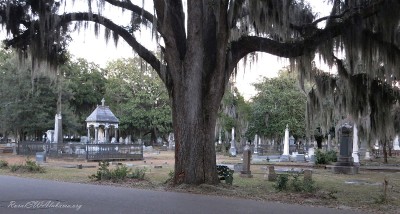
THERE IS GLORY IN THE GRAVES, reads the inscription on the Confederate Monument that stands in the center of Selma’s Live Oak Cemetery. Visitors who stroll through the beautiful cemetery will find glory, humor and sadness in the lives of those whose s …
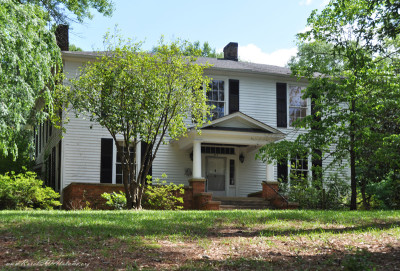
This house was built in the early 1840s as the home of Napoleon Lockett and his wife, Mary. Mrs. Lockett is credited for the creation of the first Confederate flag. She appealed to a friend, Nichola Marshall, a noted artist and instructor employed by t …
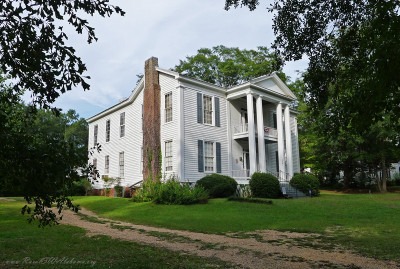
This Greek Revival style house was built in 1854 by E. H. Bernhard and his wife, the former Eugenia Howard Lockhart. It has a central portico balcony, and four octagonal columns. This L-shaped house has a central staircase and a servant’s staircase tha …
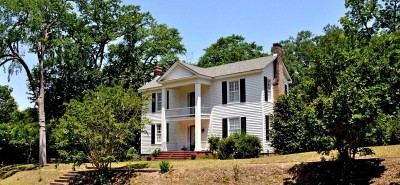
This home, built circa 1856, was owned and probably constructed by David Lockhart. It has plain woodwork and mantels, simple pine stair rail and newel post, and peaked ceilings in the back downstairs rooms. The house has been retained in its original …
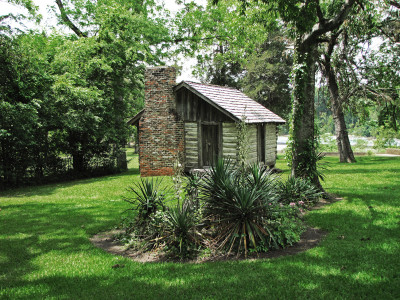
In 1986, the Marengo County Historical Society (MCHS) was notified that a log cabin had been discovered hidden inside a turn-of-the-century house that was being demolished at the northwest corner of North Strawberry and Lyon Street in Demopolis. The ca …
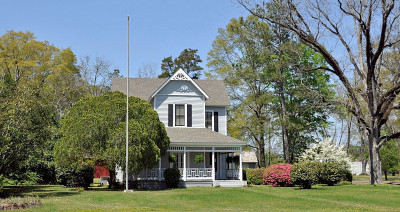
This beautiful home is one of Jackson’s most outstanding examples of Queen Anne style architecture. It is an asymmetrical, two story, Queen Anne house that’s crowned with a cross gable roof. The gables on the house are clad in vertical flushboard with …
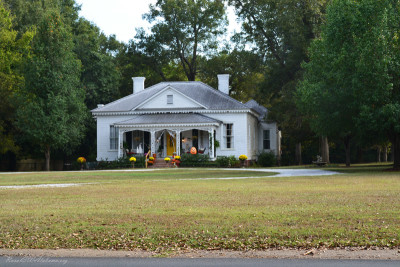
This was the only house known to have been built in this area during the Civil War. It was constructed in 1861 as a residence for Nathaniel T. Lupton, a professor of chemistry at Southern University and later the fifth president of the University of Al …
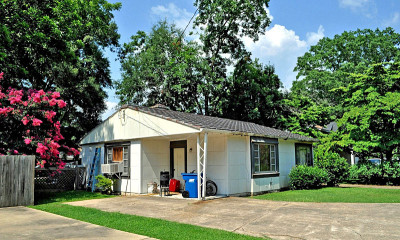
Lustron homes are prefabricated, enameled-steel houses developed in response to the shortage of housing for GI’s returning from World War II. They were constructed entirely of metal. These homes contain enamel-coated exterior walls and roofing, steel …
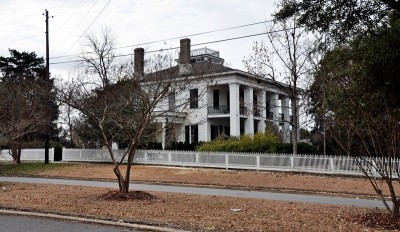
Lyon Hall, also known as the Lyon-Lamar House, is a historic Greek Revival mansion in Demopolis, Alabama. It was built over a period of three years by George Gaines Lyon and his wife, Anne Glover Lyons. The house was completed in 1853. The Lyons travel …
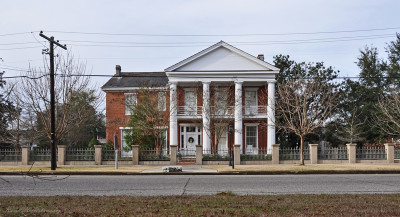
This Greek Revival style home was built around 1850 by Dr. Albert Gallatin Mabry, a prominent physician and member of the Alabama legislature. Dr. Mabry was a leader in organizing the Alabama State Medical Association and instrumental in passing legisl …
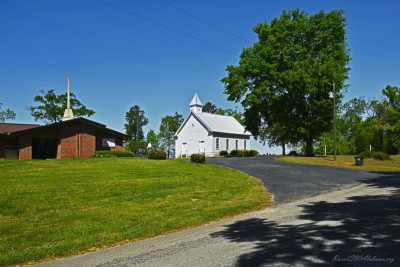
This historic church is located in Marengo County between Magnolia and Lamison. Construction began on this building in 1910 and it was completed in 1913. Two elders from Utah assisted in the construction. This is the oldest surviving LDS chapel in Alab …
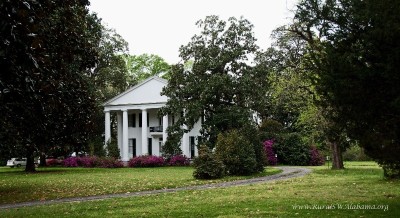
Magnolia Grove, an excellent example of temple-style Greek Revival architecture, was built around 1840 as a town house by Isaac and Sarah Croom, whose plantations were about 20 miles south of Greensboro near Faunsdale. The house was named for the 15-ac …
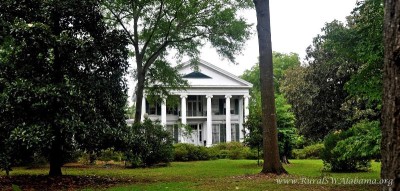
Magnolia Hall, also known as the McCrary-Otts House, is a historic Greek Revival mansion in Greensboro. It is listed on the National Register of Historic Places (HABS) as a contributing property to the Greensboro Historic District and was photographed …
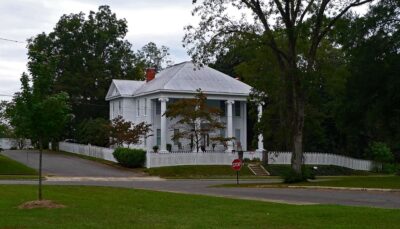
William Scears owned the plantation home, Glenville, which was located about three miles from town. He built “Magnolia on Main” circa 1904 as a townhouse for his family to make it more convenient for his children attending school. The home was also use …
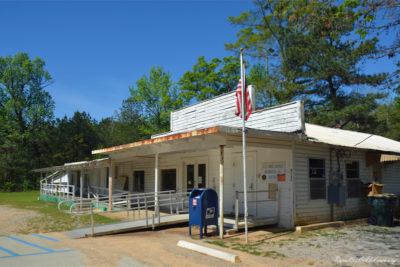
In 1982, the community of Magnolia received word from the United Postal Service at Montgomery that their post office would be closed on October 1st of that year. The community was shocked. A petition, signed by over 300 people who used the Magnolia Pos …
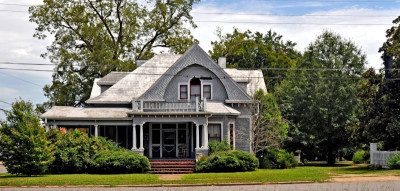
This house was built in 1906 for Dr. Martin Luther Malloy and his wife Laura Malloy. It is a George F. Barber home. The house is a free-classic Queen Anne with many elements foreshadowing the Colonial Revival style. It is based upon Rosemont, George …
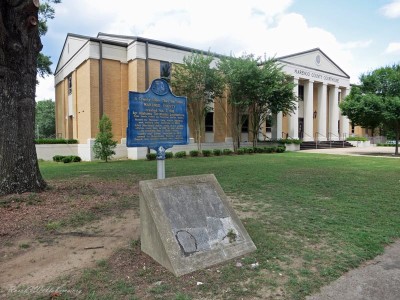
This historical marker is located in front of the Marengo County courthouse at downtown Linden (GPS coordinates 32.306410, -87.797716). The marker was erected by the Alabama Historical Association in 1956. Following is the text on the marker: —— A …
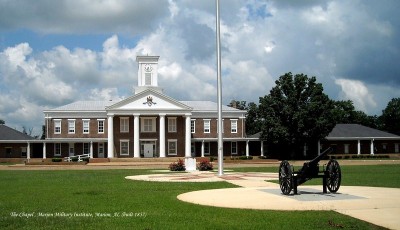
Marion Military Institute (MMI) traces its origins back to 1842 with the creation of Howard College in Marion, Alabama by the Alabama Baptist Convention. From 1863 to 1865, two buildings on the Howard College campus served the Confederacy as Breckenri …
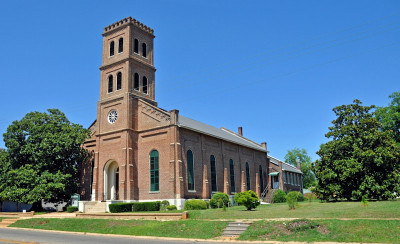
The Marion Presbyterian Church was organized on July 30, 1832. The present building was constructed in the 1870’s using Norman-style architecture and dedicated on December 30, 1877. (At that time, Mrs. M. C. Rankin planted the magnolia tree that is l …
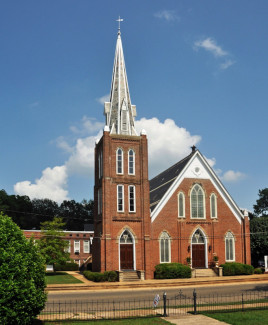
Methodists had their beginnings in Marion in 1819. Prior to the construction of the present church building, the Methodist congregation used the Masonic Temple for their services. In 1879, the Methodists started raising funds to build their own churc …
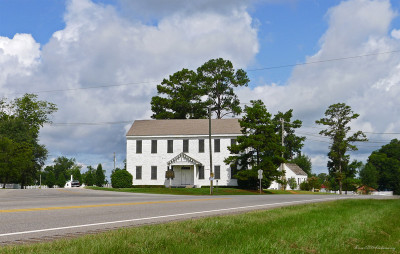
This is the oldest building in Monroe County. It was erected circa 1824 on a bluff high above the Alabama River in Claiborne using funds from a public lottery. The upper floor was used exclusively by Mason’s until around 1919. The lower floor has ser …
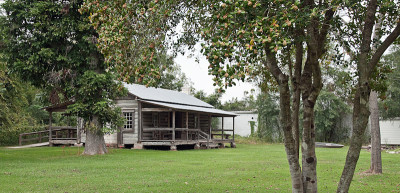
This dogtrot log Cabin was built in the 1830s by pioneers Josiah and Lucy Martin Mathews, who came to Clarke County from South Carolina. By 1840, there were 13 family members and two slaves living in this small dogtrot home. In 2005, the Clarke Count …
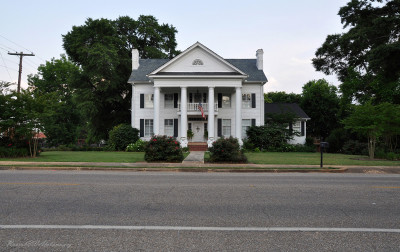
During the early 1840s, the county seat underwent a name change from Barboursville to Camden. During this time, local dentist Benjamin Thompson purchased the corner lot on Union and Calhoun (Clifton) Streets and built a simple “I” house with a one stor …
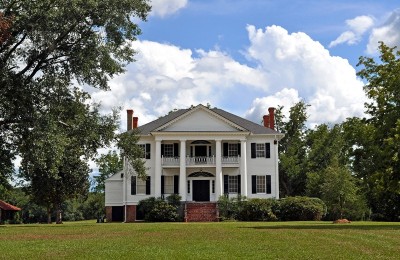
This historic antebellum home is one of the finest examples of neoclassical architecture in Alabama. It is located in Wilcox County near the community of Canton Bend and was built by a northerner, William T. Mathews who came to Camden by way of Haiti. …
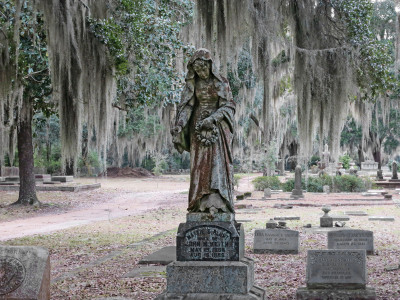
Shown are pictures of the monument that marks the grave of Mattie O. Blunt Keith (1858-1886). This is just one of many beautiful monuments that you will find among the ancient oaks and magnolias that are draped in Spanish moss in Selma’s Old Live Oak C …
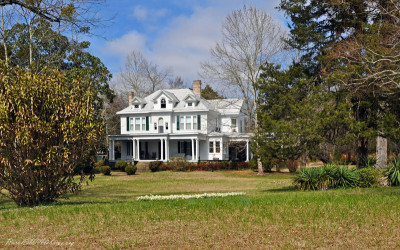
This Colonial Revival house was built by Dr. and Mrs. Thomas McCorkle. Construction began on the house in 1906 and it was completed in 1908. This is a two-and-a-half story dwelling with a hip-with-cross-gable roof. Features of the house include three g …
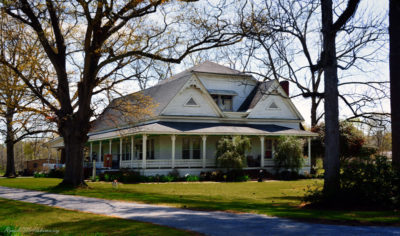
This is a one and one half story Victorian style home with an extended porch and gingerbread trim. It was built circa 1890. This house is featured site #34 in the Sumter County, Alabama Historical Points of Interest visitors brochure. It is located in …
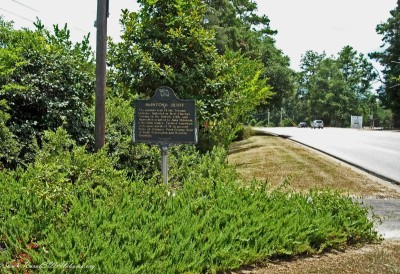
This historical marker is located beside highway 43 at McIntosh, AL in Washington County (GPS coordinates N31.265907,W88.031445). This marker provides details about the historic settlement of McIntosh Bluff which was located nearby on the Tombigbee Riv …
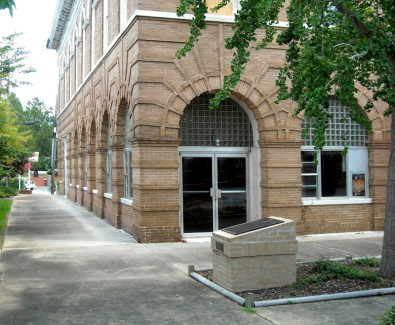
Pictured is a memorial to Vera Hall that is located at Livingston, AL across the street from the courthouse square on the corner of Franklin Street and Washington Street (GPS coordinates 32.583463, -88.188465). Following is the inscription on this memo …
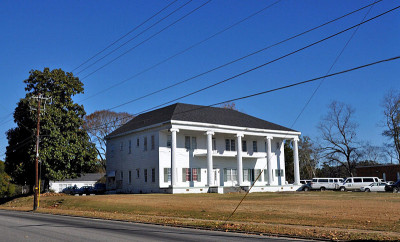
The original site of the Mesopotamia Female Seminary was just west of Eutaw. In 1889 this building was moved to the present location at the intersection of Main & Wilson. It became the core of Eutaw Female College, a reorganization of the old Euta …
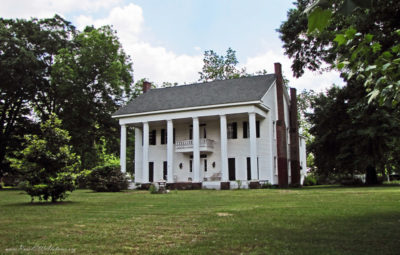
This two-story home was built circa 1860. It has a gable roof that extends over the full-height hexastyle portico with freestanding octagonal columns on brick piers that shelter a balustrade deck-type porch and small balcony over the main doorway. This …
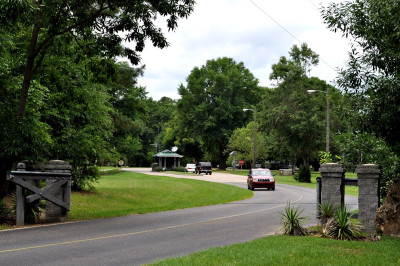
Millers Ferry Campground, also known as East Bank, is a beautiful park that is maintained by the US Army Corp of Engineers. It is located on the William Dannelly Reservoir at Millers Ferry, AL. The reservoir sits on the Alabama River and covers roughl …
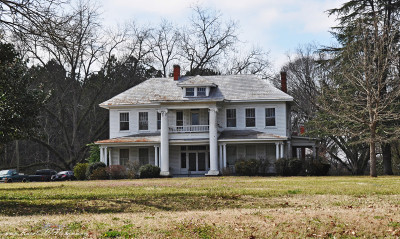
This home was originally built as a small Victorian cottage by William T. Miree and his wife, Paralee Richardson Miree, around 1880. Their daughter, Martha Paralee Miree, married George W. Thomas in 1900. Around 1910, they enlarged the house, doubling …
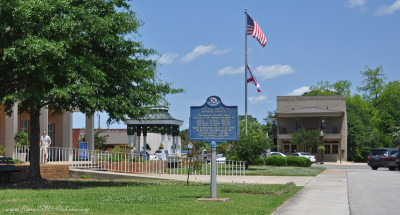
This historical marker is located at downtown Monroeville on the east side of the Courthouse Square (GPS coordinates 31.527497,-87.324094). Following is the text on the marker: ——— A County Older Than The State Monroe County Side 1: Created in 18 …
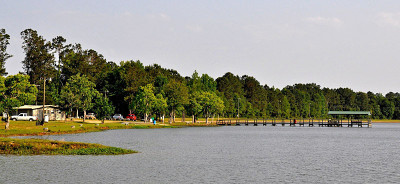
The Alabama Wildlife and Freshwater Fisheries Division of the Department of Conservation and Natural Resources manages 23 public lakes in 20 counties throughout the State. One of these is the 94-acre Monroe County Public Fishing Lake located near Beat …
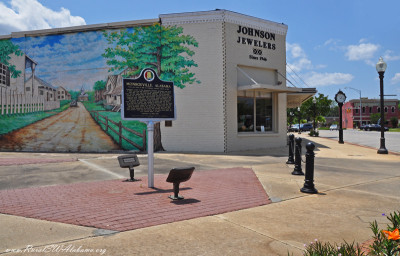
This marker is located at downtown Monroeville in the small park adjacent to Johnson’s Jewelers at the intersection of South Alabama Avenue and Claiborne Street (GPS coordinates 31.526443,-87.323834). The marker was erected in April 2010 by the City of …
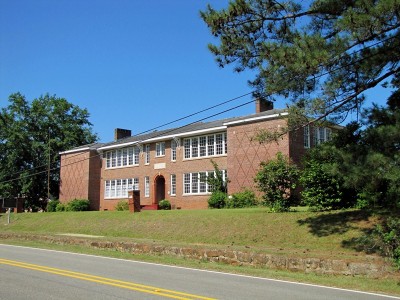
Moore Academy was founded in 1882 by John “Trotwood” Moore, who was an author, archeologist, and poet. The initial school was a two-story wood frame building. The present brick structure was completed in 1923. Its style is eclectic and typical of ea …
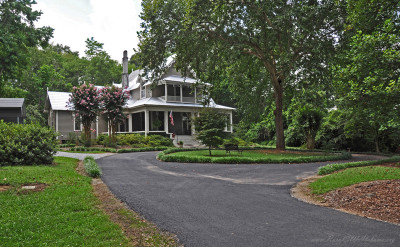
This home, built in the 1840s, is the only Gothic style house in Marion. Constructed in cruciform pattern, the two-story house has a central wide porch with classical supports on the second floor. This house is a contributing property to Marion’s “Gr …
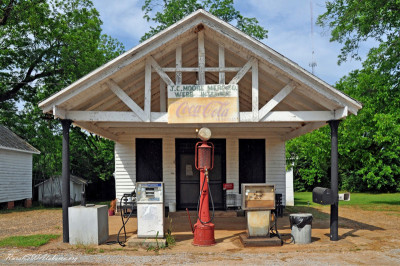
West of Marion, AL in the community of Folsom is one of Alabama’s last active plantations, one which has been in the same family since the early 1800s. William “the wagon maker” Moore came from South Carolina in 1819 and homesteaded in Alabama. Since …
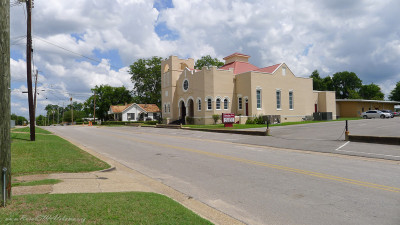
This church was built in 1920. In 1964, Reverend Martin Luther King, Jr. spoke at the Morning Star Church and it became a center for the civil rights movement in the Demopolis area. This church was added to the Alabama Register of Landmarks and Heritag …
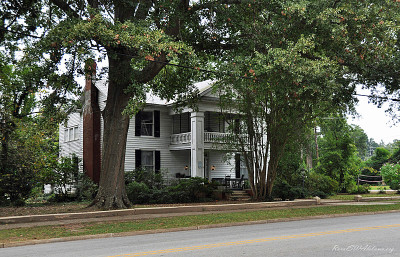
Originally an I-house, this structure served as a school for Miss Adeline Morse, a New England schoolteacher. Judge W.C. Christian purchased the structure in 1912 and made extensive renovations, resulting in the present Greek Revival appearance. In 183 …
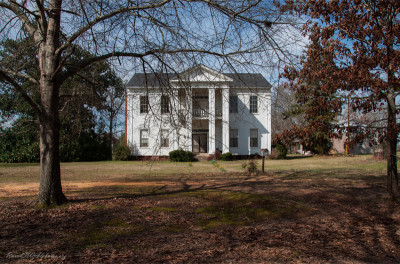
This plantation home, located southeast of Orrville in the Molette’s Bend area of the Alabama River, was built circa 1857 for Lewis Buckley Moseley. This home evolved over time. It began as a simple “I” house with two rooms up and two rooms down. Later …
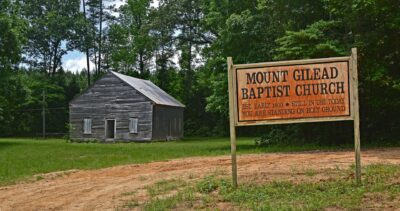
This church is located on a dirt road deep in the woods between Cuba, AL and the community of Intercourse. The pictures that are provided were taken May 21, 2016. Church Location: Google Map Details are needed about the history of this church.
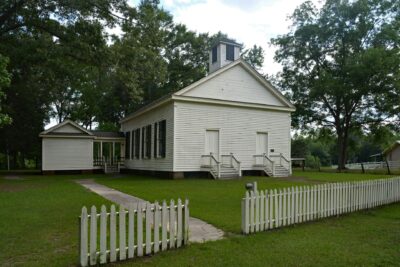
This church is located in the community of Mt Sterling near Butler. This church was built circa 1859 and was the first local building constructed expressly as a church. This building is a fine example of once numerous, but now increasingly rare, mid-ni …
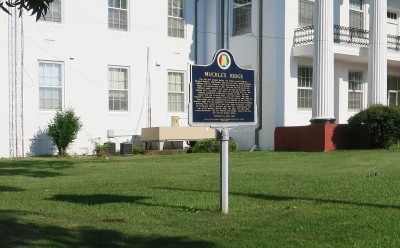
This historical marker located in front of the Perry County Courthouse in Marion. Following is the text on this historical marker: Side 1: MUCKLE”S RIDGE The site that became Marion was settled by Michael McElroy, traditionally known by his alias, Mich …
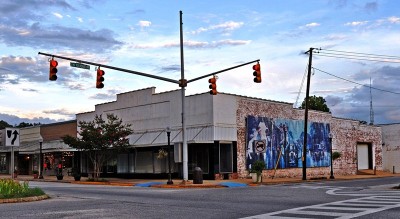
This mural was painted by Baldwin County artist, William Harrison. It depicts the fictional scene in Monroeville native Harper Lee’s classic, “To Kill A Mockingbird.” In the scene, Atticus Finch is pictured with daughter Scout, son Jem, friend Dill, …
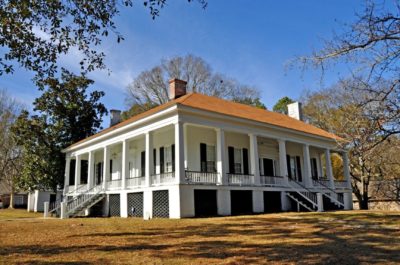
The Murphy-Dunlap house is just one of many historic antebellum homes in Eutaw. This frame-story-over-high-brick-foundation style house was built in 1847 by Daniel R. Wright. It has an unusual “winter kitchen” in the basement complete with an interior …
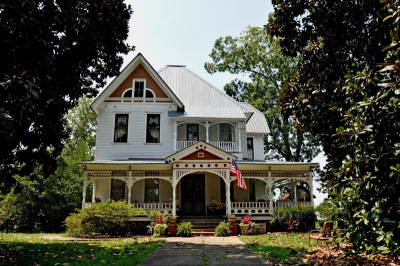
This two-storied Queen Anne style home was built in 1896. It was originally painted in autumnal colors. Tall chimneys penetrate the complex roof of this asymmetrical house. It features a piazza with a bay over the front steps, a balcony above an ela …
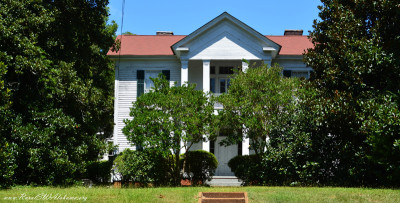
This , two-story, Greek Revival house was built circa 1848 for Mark A. Myatt, who was a merchant and planter. The home has a three-bay façade. The central full height pedimented portico has boxed returns and a balcony. The two central single leaf entra …
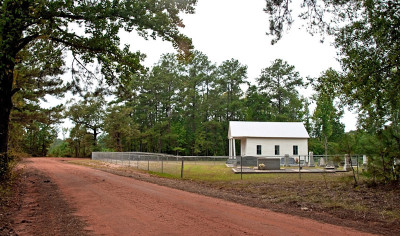
The New Hope Baptist Church and its adjacent cemetery are listed on both the National Register of Historic Places (NRHP) and on the Alabama Register of Landmarks and Heritage (ARLH). This church is located approximately four miles west of Beatrice in t …
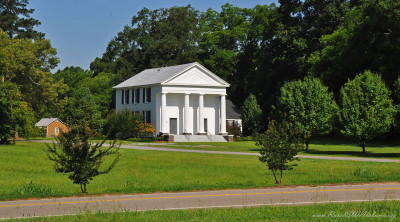
The Newbern Baptist Church was organized in 1848. The following year, the congregation built this two-story church. The upper floor has a large meeting room that was built for the Masons, many of whom belonged to the church. The four large Doric column …
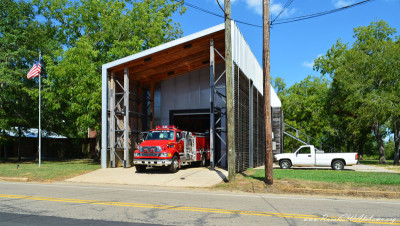
The Newbern Fire Station was designed and constructed by four fifth year architecture students at Auburn University’s Rural Studio. This 4,000 sq. ft. building was completed in 2005. The structure was designed to require little or no maintenance. It is …
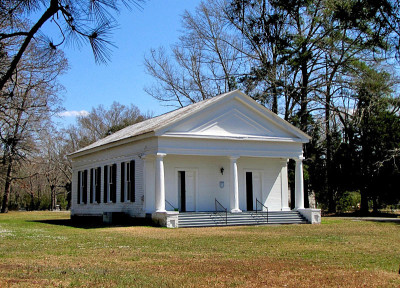
This is the oldest church in Newbern and one of the oldest Presbyterian Churches in this part of Alabama. The Newbern Presbyterian Church was organized in 1844 by North Carolinians who settled the area in the 1830s and the church was built in 1848. The …
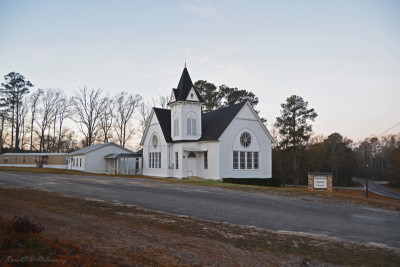
This church, which started as Liberty Baptist Church, was organized on April 4, 1851. The congregation’s first church building was made of logs and it was located next to what is now Old Liberty Cemetery. A new frame building was built in 1871. In 1876 …
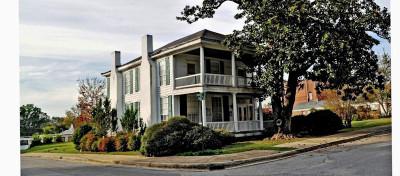
The Noel-Ramsey home (also referred to as the Old French House) is the oldest home in Greensboro. Constructed between 1819-21 by Thomas and Anne Hurtel Noel, it is the only surviving residence built by French settlers that came to west Alabama to estab …
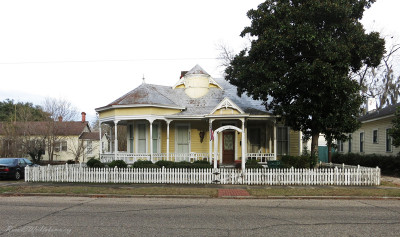
This Queen Anne style house was constructed between 1895 and 1896 by James Nunnelee, editor and publisher of the “Selma Morning Times.” Mr. Nunnelee deeded the property to his wife in 1896. Features of the house include a hip roof of pressed metal shin …
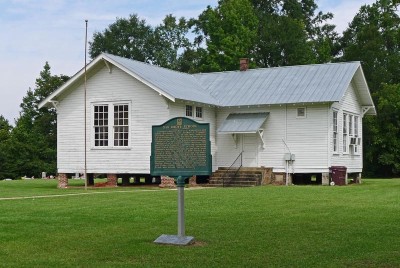
The Oak Grove School is a historic two-room Rosenwald School that was built to serve the local African-American community. The school was constructed in 1925 under the Julius Rosenwald School Building Fund program according to the designs of Samuel Smi …
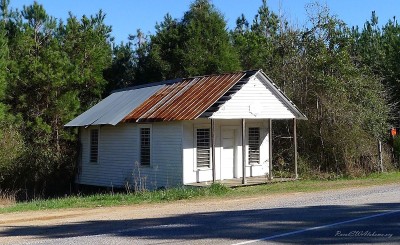
Joel Desaker Jones was born January 5, 1861, at Sweet Water (Exmore) and died June 28, 1946, at Dixons Mills. By profession, he was a surveyor, but his passion was genealogy. Locally educated, Joel Desaker Jones began surveying at age ten. He was appoi …
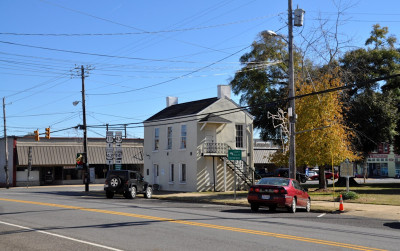
This small two-story brick building is referred to as the Old Sheriff’s Office and the Grand Jury Room. It is located on the northeast corner of Eutaw’s Old Courthouse Square and is identified by a bronze plaque that gives 1842 as the completion date …
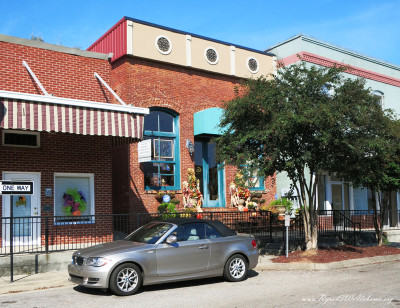
This building housed Thomasville’s bank from 1904 until at least the early 1950s. It is a one-story, brick building. Steps lead up from the sidewalk to its tall, double leaf entrance that is crowned by a segmentally arched transom. The entrance is flan …
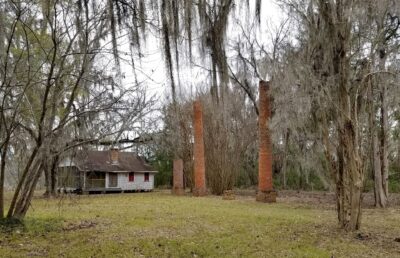
Located east of Orrville at the confluence of the Alabama and Cahaba Rivers, the town initially known as Cahawba served as the state’s first permanent capital from 1820 until 1825. When the capital was moved from Cahawba in 1826 to Tuscaloosa, many of …
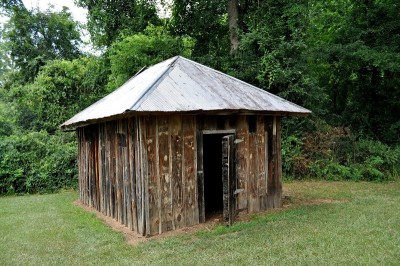
The Calaboose was built ca. 1905-25. It is a small, single-pen jail that’s constructed with stacked 2×4 boards. It has one door in the south wall and small windows cut into the east and west walls. The door is nail-studded stacked 2×4 boards and the wi …
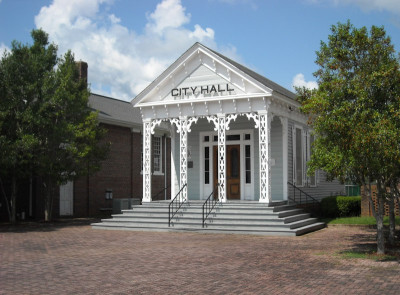
This building was built circa 1832 as a law office. It was the first YMCA building in the South to be owned by a local chapter. Additionally, the building served as the Marion City Hall for forty years. In the 1968, it was moved from the courthouse sq …
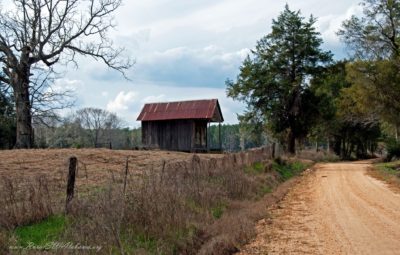
The date that this building was built is not known; however, it was prior to 1919 because this was when the post office closed. According to U.S. Postal records, the community of Cohassett (or Cohasset) was also called Sowell and Almarant. Sowell post …
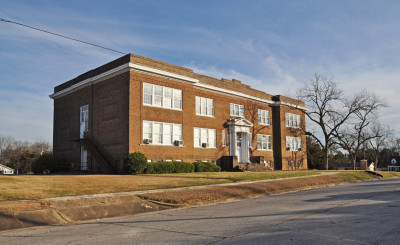
This is a two-story building with a full basement that was built in 1913-1914. It was designed by a leading Alabama architect of the period, Frank Lockwood. He designed some of the most impressive and important buildings in the state. His designs incl …
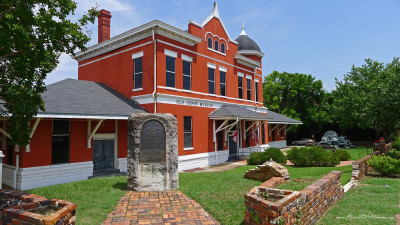
The Old Depot Museum is located at the old L&N Railroad Depot at the end of historic Water Avenue in downtown Selma. The Depot building was built on the site of the Confederate Naval Foundry which was destroyed by Federal troops during the Battle o …
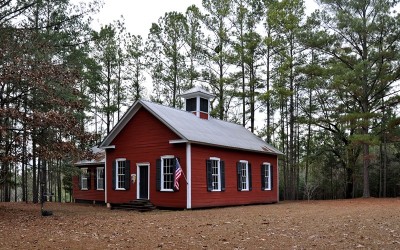
The Gainestown Schoolhouse is a good example of an early 20th-century, two room schoolhouse. Although it has undergone significant restoration, it still retains most of its original features such as its form, framing members, weatherboards, windows and …
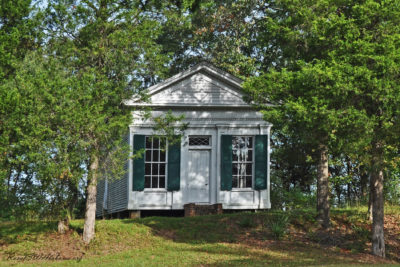
In 1831, Colonel Moses Lewis purchased the land where Gainesville is currently located and he had the land divided into lots for a town. The new town grew very rapidly and by 1840 it had become the third largest town in the state of Alabama, with a pop …
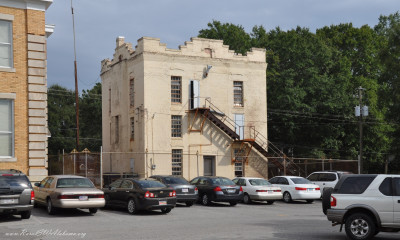
The Old Hale County Jail served Hale County from its completion in 1908 until 1999, when it was replaced by the modern Hale County Corrections facility. The masonry building is distinct with its 24 large windows inset with iron bars, and its crenelated …
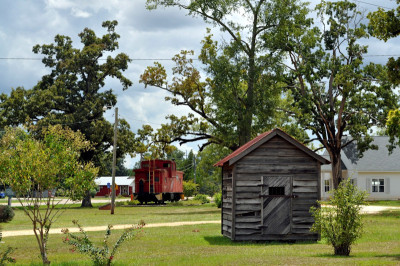
The old Jones Mill jail is located in the Frisco City Town Park along with the old Jones Mill Post Office, the J. W. Jones home and an old Frisco Railway caboose. The settlement that became Frisco City was initially called Jones Mill in honor of a prom …
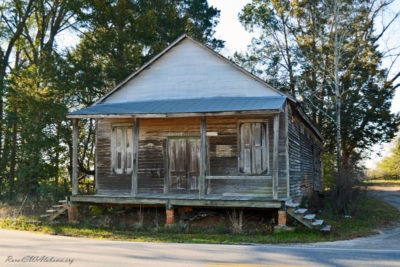
Prior to 1896, before the Post Office was established, the town of Leroy had been called New Canaan, Possum Corner and Dogwood Level. The town got its present name when the eldest son of Capt. Robert Leroy Bowling, Theodore Cheseborough (T. C.) Bowling …
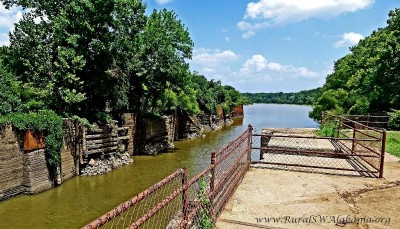
The slider above shows 8 pictures of this park. The Old Lock 1 Park is located at the remains of Old Lock 1 on the Tombigbee River between Jackson and Coffeeville. This park lies in a grove of large pecan trees. Major improvements at the park site fr …
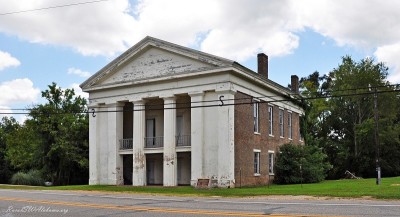
This Greek Revival courthouse building was built around 1848. It was the third building to serve as the courthouse for Marengo County, AL, out of a total of six. It served as the courthouse until 1903. Since then, this building has been used for severa …
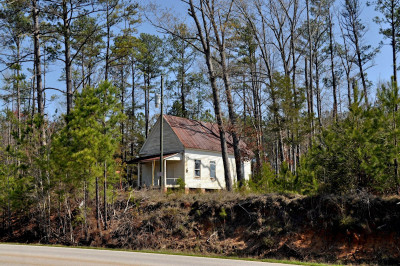
NOTE: This historical school is no longer standing. It was demolished during early 2022 (possibly because of the 4-laning of US Highway 43). ************* This school was built around 1900 by Charles H. Miller, Sr. He employed the teachers to provide a …
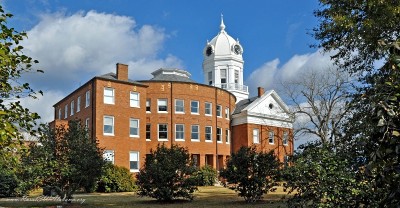
The Old Monroe County Courthouse, completed in 1904, was designed by the prominent Southern architect Andrew Bryan. The courthouse gained national fame when Monroeville’s own, Harper Lee, in 1960 published the Pulitzer prize-winning novel, To Kill a Mo …
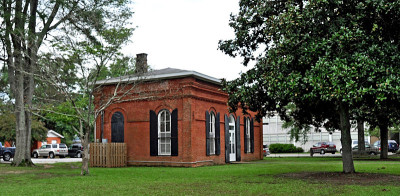
This building is located on the Courthouse Square at downtown Livingston, AL. Built ca. 1830, it was the only structure to survive on the Square when the previous courthouse burned in 1901. This building also served as the County Library for many years …
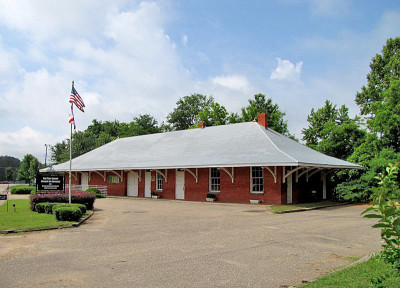
Built in 1907 to replace the frame depot building, which was destroyed by fire. Interest in railroads began as early as 1834 in Marion. The building is now the home of the Perry County Chamber of Commerce. Located at 1200 Washington Street, Marion, AL …
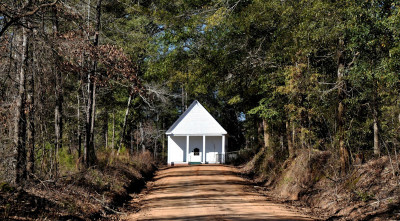
During the early 1800s, pioneers from Georgia and the Carolinas, many of whose families immigrated to this country from Scotland and Ireland, settled in Monroe County. They named their community Scotland because of the land’s resemblance to the settler …
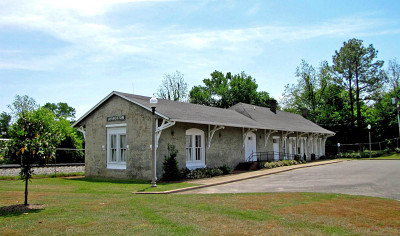
This building, which now serves as Livingston City Hall, was originally built circa 1875 to serve the passenger and freight services of the railroad system running between Atlanta, Birmingham, and New Orleans. The left side of the building was used for …
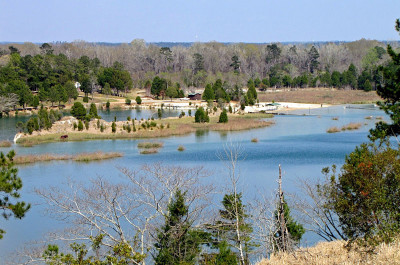
This park is located in southwest Alabama on the Tombigbee River at the site of old St. Stephens which played an important part in early Alabama’s history. The settlement that became known as St. Stephens began as a Spanish fort in 1789 and later serve …
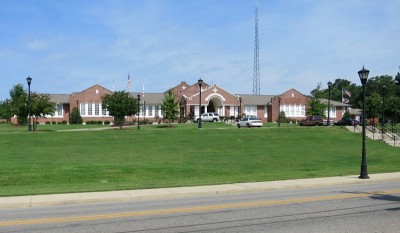
This school was constructed in 1927-1928 by local contractor Ashland Spinks. The newly completed $50,000 building opened for white students on Monday, January 8, 1929. The following year, the wood frame elementary school burned down, so grade school cl …
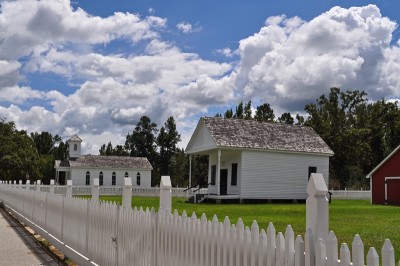
When traveling Highway 41 between Monroeville and Camden, you will pass a very picturesque scene at Franklin that includes several nicely restored buildings all neatly located within white picket fences. These buildings include the old Franklin School …
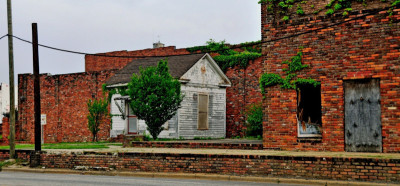
Reputedly, this was Uniontown’s original post office. This structure was originally attached to the Houston house that was built before January 1, 1869. When the house was torn down in the early 1970s, this room was saved and relocated to its present …
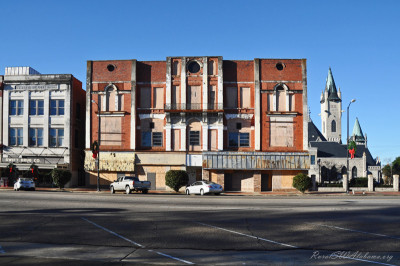
Selma is home to Alabama’s first Young Men’s Christian Association (YMCA) that was founded in 1858, and this is the oldest YMCA building still standing in the state. Built in 1885, the historic structure was in danger of demolition when it was purchase …
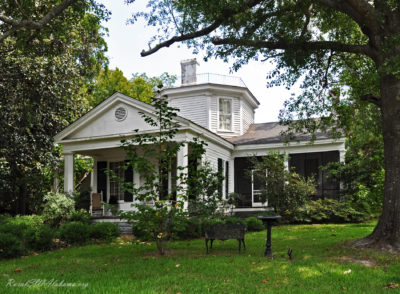
This home began as a one-room law office that was built and used by Judge William C. Oliver. On December 29, 1859, he sold his office to Gustave Braune, a jeweler. Later, Braume added rooms and the unusual octagon room on the second level. Tradition ma …
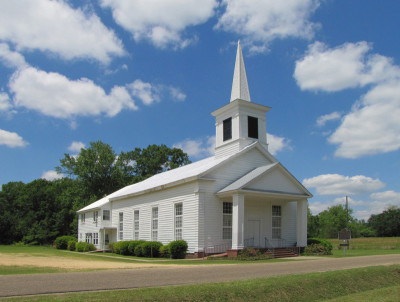
This church is located in Orrville, AL in Dallas County at the intersection of Mill Street South and Academy Street (GPS coordinates 32.30489,-87.245974). Following are details provided on a historical marker that’s located in front of the church: **** …
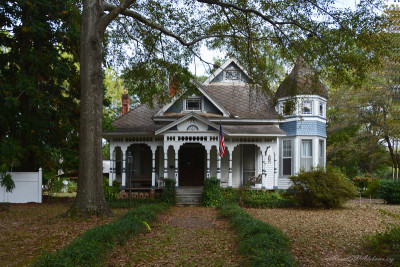
John Straiton, a graduate of Emory University, was Greensboro’s most prolific builder during the late 1800s and early 1900s. He is responsible for the construction of many of the finest structures in Greensboro. His work includes several imposing Queen …
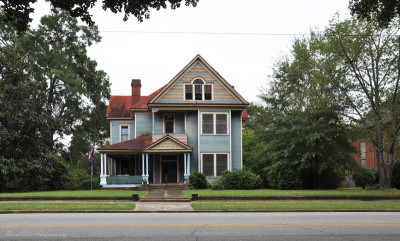
This two-story, vernacular Victorian house was built circa 1890. Features of the house include complex roofline and massing, central double leaf entrance with transom, wraparound porch, paired classical posts on low stone piers, Palladian style window …
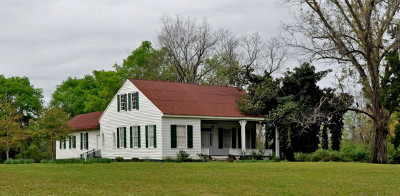
This “coastal cottage” is thought to have been built in the 1830s by Stephen and Juliet Palmer and possibly modified by Dabney Palmer around 1860. It is a classic 1 ½ story “Carolina” cottage featuring a central passage with rooms to each side, includi …
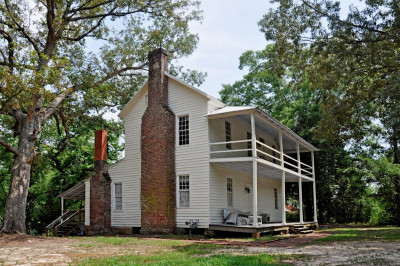
This two-story farmhouse, built circa 1834 by Joel Parish, his wife, Emma Curby, and their children, is one of the oldest buildings in Perry County. The Parish family moved from North Carolina in a covered wagon, camped on a knoll nearby, and built th …
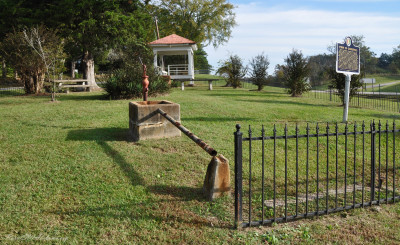
Most towns have a town square. Gainesville is unique in that it has a town triangle. (However, a picture shows the original to have been larger and more of an octagon shape.) The park dates from the antebellum period. It is enclosed by an iron fence. T …
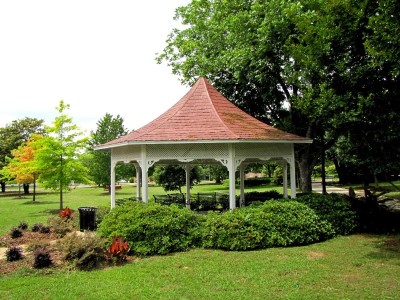
The Demopolis Public Square is one of the oldest in Alabama dating back to ca. 1819. The park was added to the National Register of Historic Places (NRHP) on October 29, 1975. One of the features of the park is the Park Gazebo, also referred to as the …
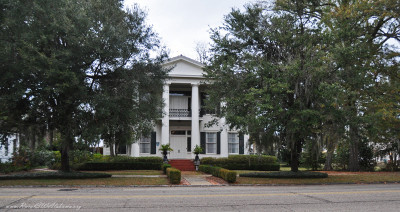
This Greek Revival-style home was built circa 1859 by Dr. Clifford Daniel Parke, a prominent Selma Physician who served as president of the Alabama Medical Association from 1882-1883 and was a member of the city council. The house has a two-story pedim …
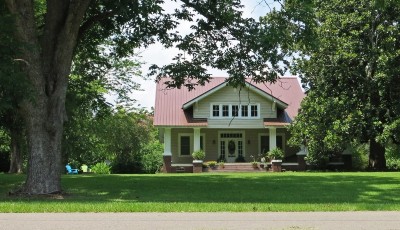
The Patrick Farish House, also known as the Lowe and Paula McDaniel House, is a one-and-a-half story vernacular Craftsman/Bungalow style home. It was built ca. 1926. The home’s probable builder and its first owner was Patrick Farish. The house was add …
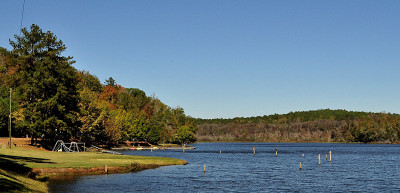
This is a tranquil 1,080-acre park that includes a beautiful 100-acre lake that is surrounded by hardwood and southern pine woodlands. The park has modern campsites located on the edge of the lake. There are also primitive campsites for those who are …
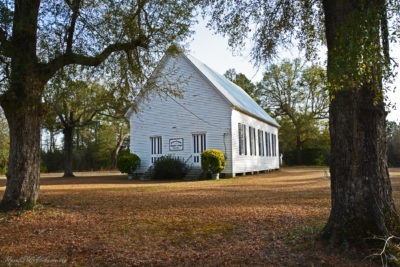
This is an example of an increasingly rare intact rural church. It has a highly pitched front-facing gable roof, and two sets of double doors. Local tradition states the church originated a couple miles down the road as the circa 1838 Bethlehem Methodi …
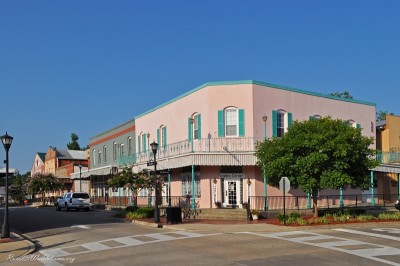
This building was constructed in 1902 to house Andrew’s Hardware. It later became People’s Drug Store, a popular town meeting spot, until it closed in the early 1990s. During a renovation in 1993, the downstairs was turned into a small restaurant and a …
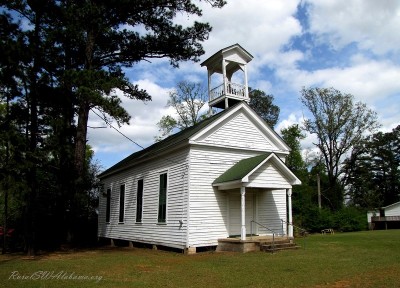
The Perdue Hill Union Church at Perdue Hill belongs to the community. The church was built prior to the 1880’s using donated lumber. The pulpit was constructed using materials from a saloon bar that was located at old Claiborne, AL. Every denomination …
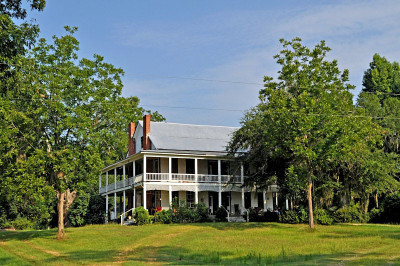
This beautiful home was built around 1895 by James Nicholas Perdue (1860-1930) and his wife, Katie Jones Perdue (1861-1933). The home is a two-story frame end gabled central passage house two piles in depth, featuring a two-tiered wrap-around porch on …
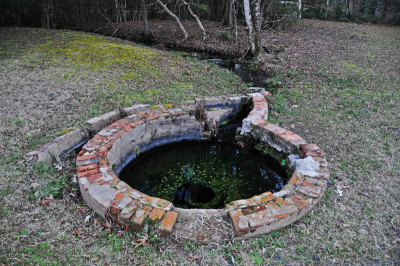
Cahawba, also spelled Cahaba, was Alabama’s first state capital (1820-1826). It became a ghost town shortly after the Civil War. Today, the old Cahawba site is an interpretative park that’s operated by the Alabama Historical Commission. Visitors to the …
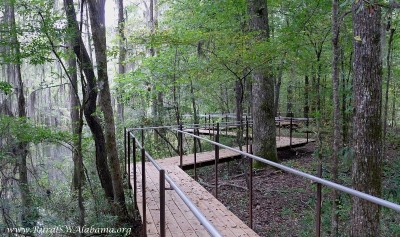
In recent years, Bald Eagles have nested in a giant loblolly pine near the entrance to this 600-acre park. The park contains four oxbow lakes, formed when the Cahaba River changed its course about 150 years ago. Foot trails traverse the park’s mature h …
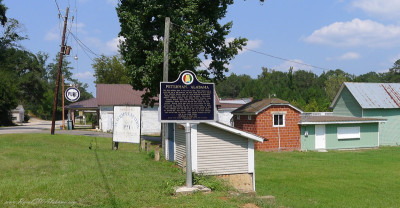
Peterman is a small community located about six miles northeast of Monroeville, AL. Shown is the “Peterman, Alabama” historical marker that provides details about the history of Peterman. This marker was erected in November 2010 by the Alabama Tourism …
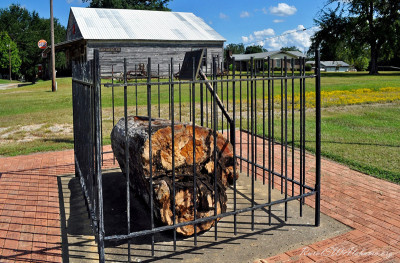
Approximately 40 years ago, the county shovel operator was digging in a gravel pit near Ward and hit something hard about 40 feet deep in the ground. This turned out to be a large petrified tree. The pieces were loaded into two dump trucks and unload …
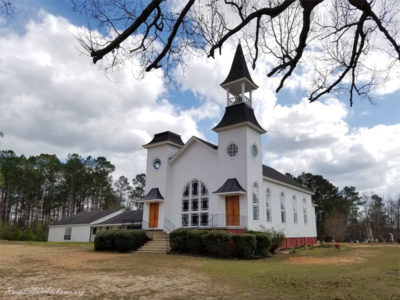
The Philadelphia Baptist congregation was established in 1840. The original church was located approximately two miles east of its present site. Slaves were invited to join the church and they soon comprised about half of the church membership. During …
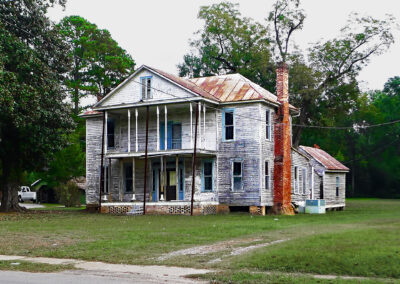
This two-story wood-frame house was built circa 1856 by Phillip Schoppert, a native of South Carolina. The house is a hipped-roof variant of the I-house with rear shed rooms. One unusual feature of this house is its narrow windows. Edward Ustick bought …
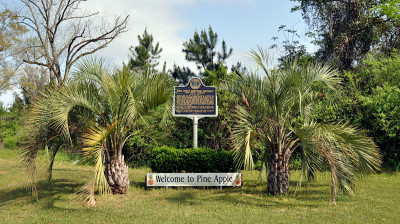
Pine Apple is a scenic community located on the east side of Wilcox County. The historical marker that’s shown is beside Hwy 10 on the west edge of Pine Apple, AL (GPS coordinates 31.874649, -86.995273). Below is the inscription on the marker. “Founded …
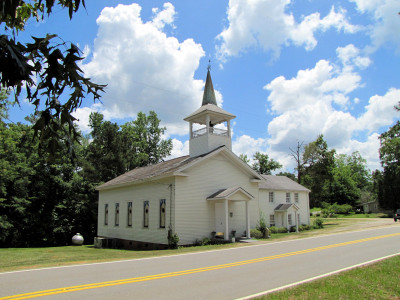
Founded by circuit riders as the Methodist Episcopal Church South, the first minister was Rev. A Gillis. Several additions have been made to the 1872 original building, including the present altar and front classrooms of the main sanctuary. The two-sto …
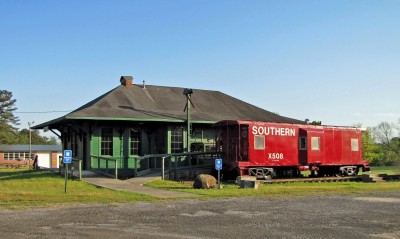
The railroad started running through Pine Hill, AL in 1888. Pine Hill’s original depot was destroyed in 1896 when a train jumped track and crashed into the building. A new depot was built in 1905 at a cost of $2096. This depot was used until 1989 when …

This historical marker is located on the north side of Broad Street, in the municipal park near the intersection of Broad and Dunn Streets, in Pine Hill (GPS coordinates 31.979556, -87.587636). This marker was erected by the Alabama Tourism Department …
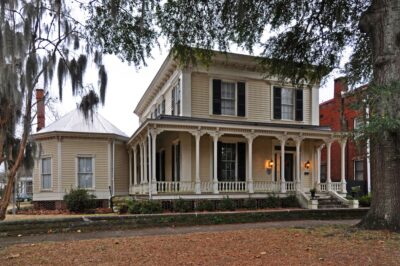
This two-story Italianate-style home was built around 1849. It has elaborately bracketed eaves and woodwork. The house was purchased by Charles Lewis in 1856. According to local accounts, the home was saved from burning and looting during the Battle of …
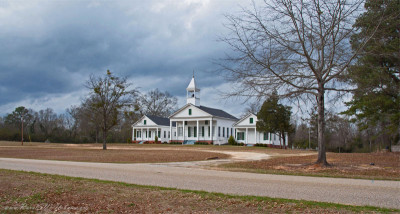
This Baptist congregation was founded in 1840 and the present church sanctuary was built around 1850. Features of this building include a slave gallery and an open belfry. Today, this church sanctuary is flanked by two smaller and similar church buildi …
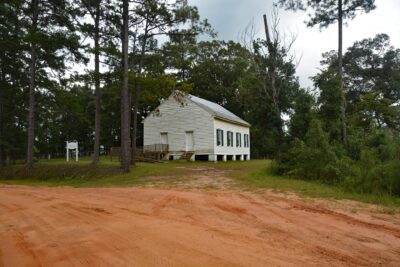
This church is located on a ridge in the hills of northeastern Clarke County. According to church records, the church congregation was organized in 1865. Those early worshipers originally met in a brush arbor called “Old Bushaby Church” at a site appro …
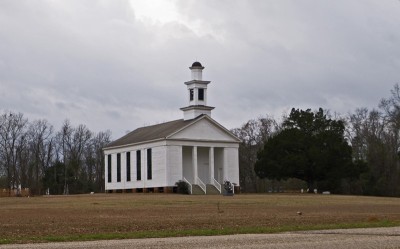
The Pleasant Hill Presbyterian Church, originally known as Mount Carmel Presbyterian Church, is a historic Greek Revival church located in southeastern Dallas County in the community of Pleasant Hill. The current church building was constructed during …
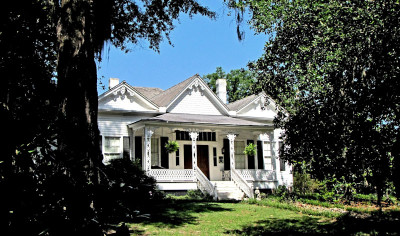
This is a one-story hipped-roof Greek Revival house with a substantial turn-of-the-century front addition containing gingerbread trim. Features include three decorative front gables, a three-bay wide front porch, an L-shaped back porch and a small side …
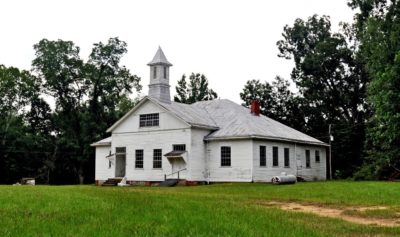
Prairie Mission, also known as Prairie Institute, was established in 1894 by the Freedmen’s Board of the United Presbyterian Church of North America, to educate children of ex-slaves. The Mission consisted of a church, school building, dormitories for …
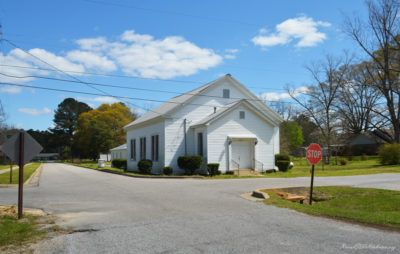
This church was was built circa 1906. It is featured site #37 in the Sumter County, Alabama Historical Points of Interest visitors brochure. This church is located in Cuba at the intersection of Fourth Street and Fifth Avenue (GPS coordinates 32.429553 …
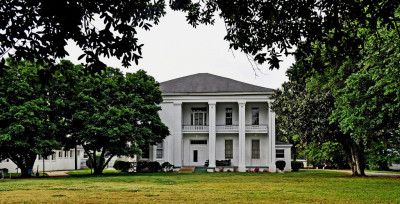
Southern University was founded in Greensboro by the Methodists in 1856. This school prospered during the 1800s. In 1918, it merged with Birmingham Southern College and was moved to Birmingham. The only thing that remains of Southern University at Gree …
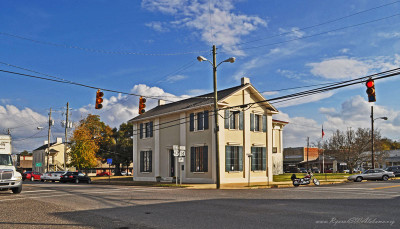
The centerpiece of the Courthouse Square at Eutaw is the old Greene County Courthouse which was built in 1870. Located on the northwest corner of the Courthouse Square is the old “Probate Office”. It was originally constructed in 1856 as a single-stori …
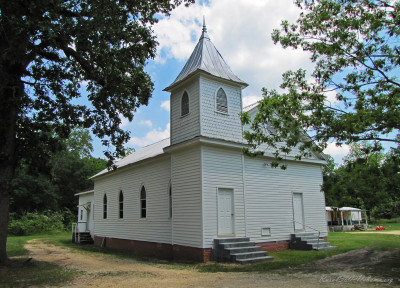
This church was added to the Alabama Register of Landmarks & Heritage (ARLH) on 9/27/07. According to the Alabama Historical Commission’s PreserveALA.org website, this church was built circa 1913. The Prosperity CME Church is located beside CR 33 a …
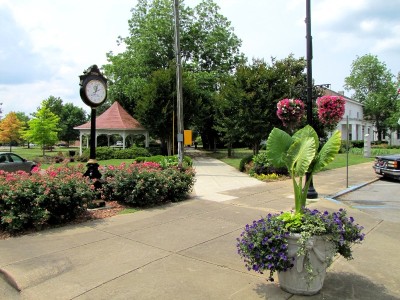
The Public Square is a historic park located at downtown Demopolis. It covers one city block, bounded by Main, Capitol, Walnut and Washington Streets. This park is one of the oldest public squares in Alabama. Demopolis had its beginnings in 1817 with …
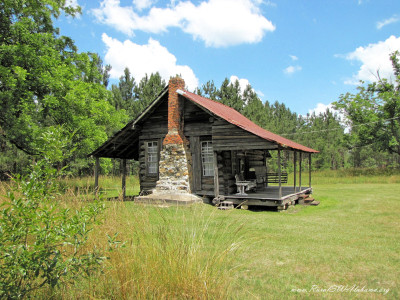
This is a recently restored authentic log cabin that’s located near Pine Apple in the community of Awin. Not much is known about the early history of this cabin. It was built in either the late 1800s or early 1900s. A former occupant of the cabin note …
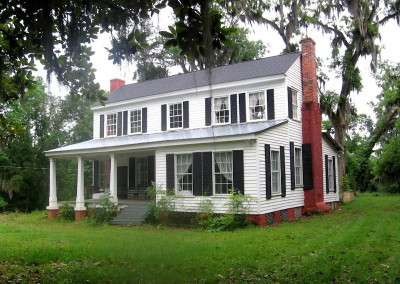
This home was built around 1840 by the Purifoy family, one of the earliest to settle Wilcox County. Its style is similar to several in the Furman area, and is almost identical to that of “Fox Hill”. It was probably built by Edmond Hobdy. The house rema …
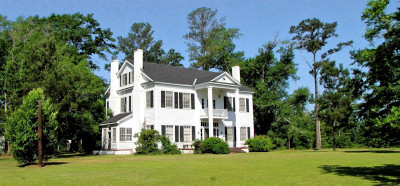
This house was originally built circa 1840 near Furman, AL for William Madison Purifoy. Thomas P. Melton of Pine Apple purchased the house in l937. He hired noted contractor Tom McKee to dismantle the Purifoy house and reassemble it at its present loca …
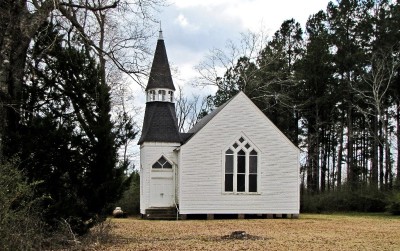
This church building was built around 1910. It is a late Carpenter-gothic derived building with clapboard siding, gable front, and an off-set, recessed tower to the left. The gable front has a large, tripartied window of translucent glass, and double h …
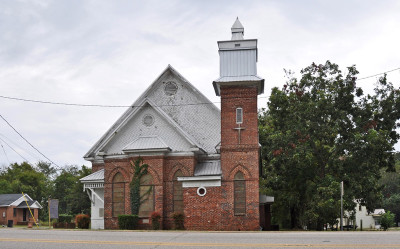
In 1867, the black members of the Uniontown Methodist Episcopal Church South withdrew and established their own church. For a short time, they met in a brush arbor near the site of their present church. Their first church building was destroyed by a s …
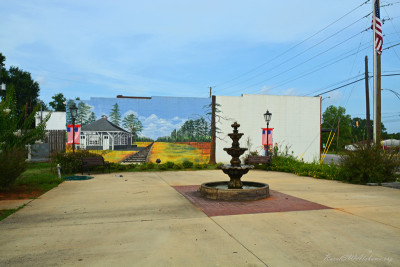
The Pine Hill mural celebrates the railroad’s contribution to the history of Pine Hill. It was painted by the artists; Jan Agee, Finn Sheffield, Jeannie Shiver and June Sims. This mural is located beside Alabama Hwy 5 at downtown Pine Hill on the side …
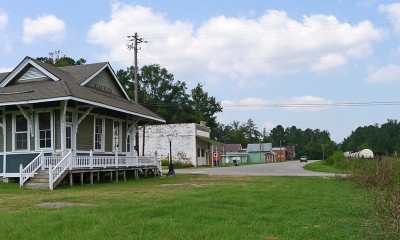
Peterman was at one time a thriving rail town, in the days of the passenger train. In 1900, the railroad came through and the store owners decided to move their buildings down the hill to be near the railroad tracks. On moving day, with teams of oxen, …
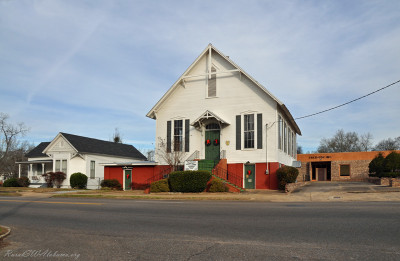
In 1874, Rev. Lewis Johnston, the first African-American to be ordained a Reformed Presbyterian minister, arrived in Selma to preach the Gospel. On June 11, 1874, he formed a school to teach former slaves. The school was initially called Geneva Academy …
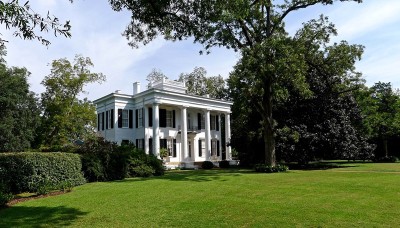
Reverie is a historic Greek Revival mansion that was built circa 1858. The house was photographed and recorded by the Historic American Buildings Survey (HABS) in 1935. It is listed on the National Register of Historic Places (NRHP) as a contributing p …
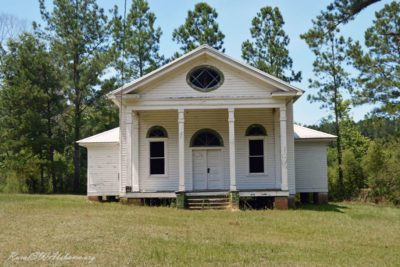
This church was built circa 1925 by E. E. Jackson Lumber Company. It served as a community church and was used by all denominations until the mill ceased operation in 1931. In February 1961, Scott Paper Company, which purchased the land, drew up an agr …
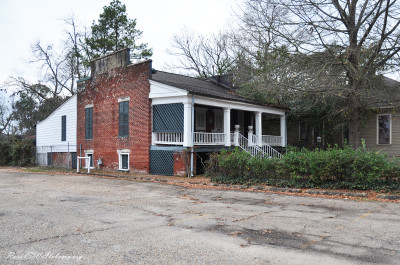
This one and one half-story raised cottage was built circa 1843. It was purchased 20 years later by Louis S. Riggs and the house is still occupied by his descendants. Unusual features of the building include stepped parapet brick walls on the side gabl …
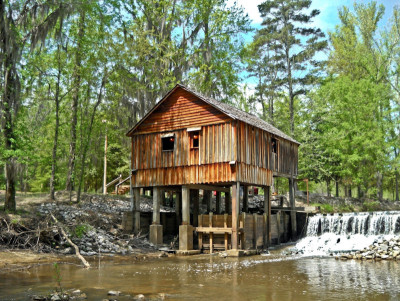
Rikard’s Mill Historical Park is owned and operated by the Monroe County Heritage Museums. The park is located just north of Beatrice on Flat Creek. The main feature of the park is Rikard’s Mill which is a water-powered grist mill. Jacob “Jake” Rikard …
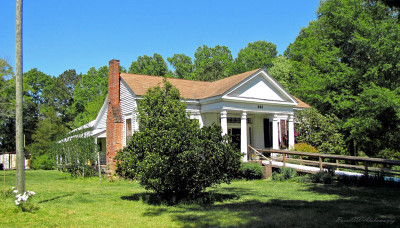
This GreeK Revival-style house was built around 1853 as the parsonage for the Baptist minister. Except for modernizing, this structure has been altered little since it was constructed. This home is located approximately 3.5 miles east of Butler in the …
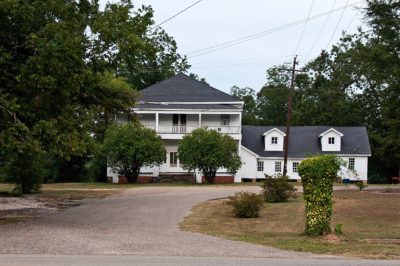
The Robbins Hotel was a historic hotel building in Beatrice. The building began as a private, one-story home with six rooms, built circa 1840. A second floor was added sometime later. Between 1906 and 1910, Mrs. Barbara Robbins converted the house into …
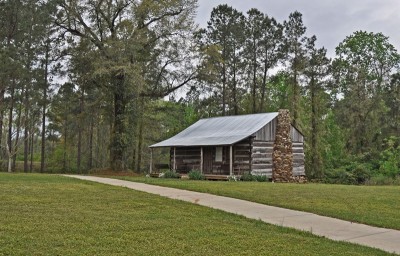
In the early 1860s, Thomas Henry Roberts built this log cabin at Mount Hope in east Wilcox County using yellow pine logs from his property. The logs are hand-hewn, dovetailed and double mortised, and the corners reinforced with wooden pegs. The front p …
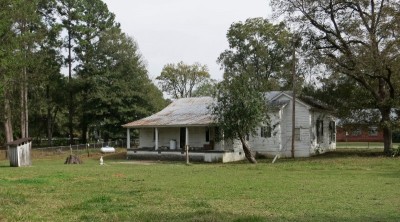
This small house was built for Richard Haskins Roberts ca. 1851. It has a center-hall with a single large room on either side and shed rooms behind. There have been few changes with the building except for a room added to the SE corner in 1908. The hou …
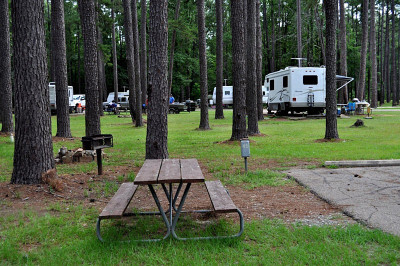
Located approximately 6 miles northeast of Camden on the 22,000-acre Dannelly Reservoir Lake (locally referred to as Millers Ferry Lake), Roland Cooper State Park’s 236-acre park features vacation cottages, modern campground with bathhouse and laundry, …
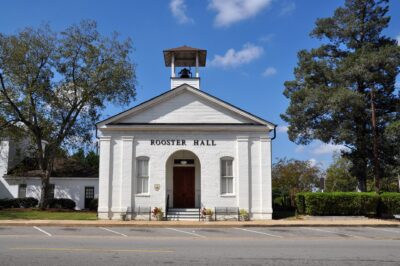
This is one of the oldest and most historic buildings in Demopolis. It was built in 1843 by the Presbyterians of Demopolis using locally-made bricks. It served as their sanctuary until after the Civil War. During the reconstruction period, a garrison o …
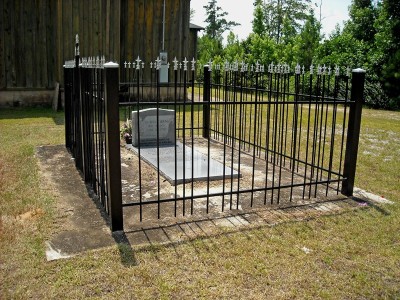
Born in Rosebud in 1874, Rosa Young graduated valedictorian from Payne University in Selma. She opened a private school with seven students, which grew in three years to 215 students. With the help of the Lutheran Church, Young founded thirty rural sch …
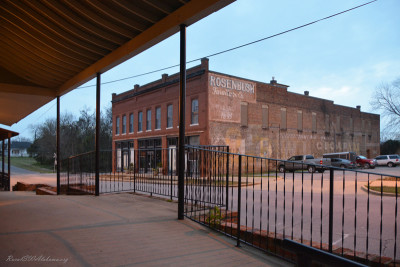
Julius Rosenbush, a German Jewish immigrant, settled in Demopolis in the late 1800s and established the Rosenbush Furniture Company in 1895. After his death in 1911, his wife Essie ran the business, eventually passing it on to her son Bert Rosenbush Sr …
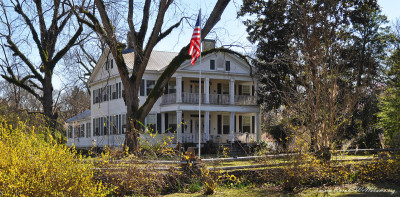
William M. Rumph built his two-story Greek Revival home about 1840. Centered on the façade is a two-story pedimented portico which is supported by square box columns with moulded caps. In 1902, Doctor Samuel Beekman Alison purchased the home. He was th …
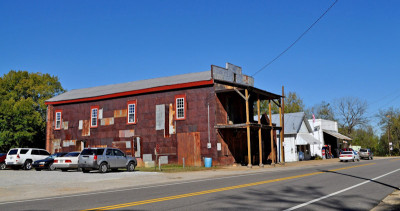
Established in 1993 by architects Samuel “Sambo” Mockbee and D. K. Ruth, Rural Studio is a part of Auburn University’s School of Architecture. The Rural Studio is located in rural west Alabama in the small town of Newbern in Hale County. Rural Studio …
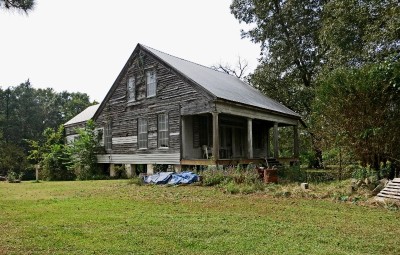
This house is thought to have been built during the 1835-1840 time period for Walter W. Russell (1806 – 1878), who was from New Hampshire. He was one of the early Yankee settlers and merchants who came to Gainesville and built homes on Main Street (now …
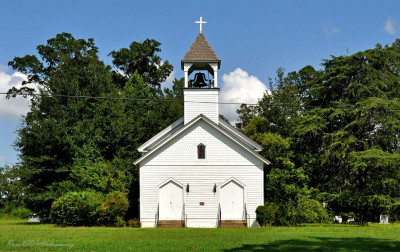
This church was built in 1854 at the plantation community of The Fork of Greene located twelve miles southeast of Boligee. The building was consecrated by Bishop Cobbs on April 28, 1858. Twenty-five years later, it was carefully disassembled and move …
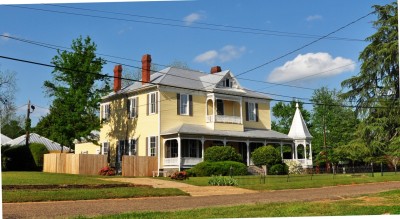
This house was originally a one-story home built circa 1834 by Captain Samuel Madison Scott at Scott’s Station, just west of Marion. Captain Scott’s widowed daughter, Anna Scott Hanna, inherited the house. In 1904, she had it dismantled, loaded on 25 m …
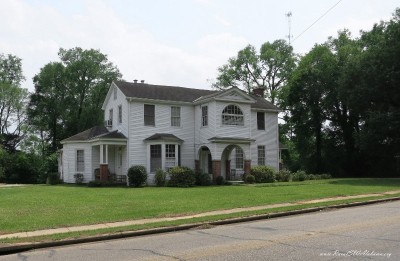
This two story-frame dwelling was built about 1860. It has an end chimney, nine over nine double hung windows, and a single bay entrance with a full height entrance portico with arched multi-pane lights. This house is located on Marion’s historic Green …
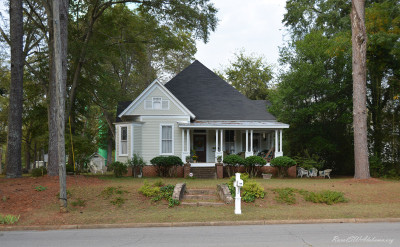
This home was built circa 1890 by Governor and Mrs. Thomas Seay. Thomas Seay was a native of Hale County. He began his political career in 1874 when he ran unsuccessfully for the state senate. He was successful in 1876 and remained in the senate for te …
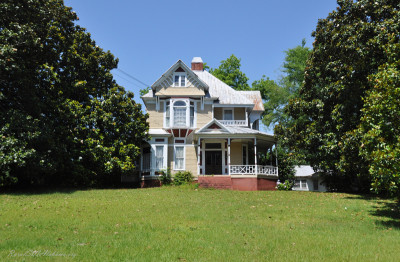
This 2 ½ story house, with its complex roof line and façade arrangement, is one of the most detailed dwellings in Greensboro. The first floor features a left-side boxed window bay, single leaf entry bay, wrap around porch with shed roof, entry bay pedi …
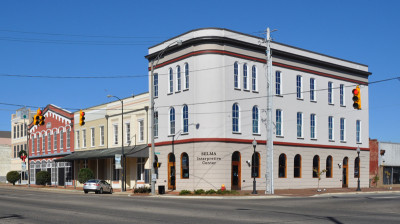
The Selma to Montgomery National Historic Trail was established by Congress in 1996, to commemorate the events, people, and route of the 1965 Voting Rights March in Alabama. The March route is a component of the National Trails System, and is administe …
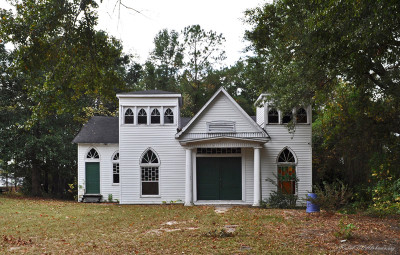
This building was built circa 1923 by Seventh-Day Adventists. They built a new church and sold this one to First United Pentecostals. The building is now privately owned. This church building is located on Main Street on the southeast corner of the int …
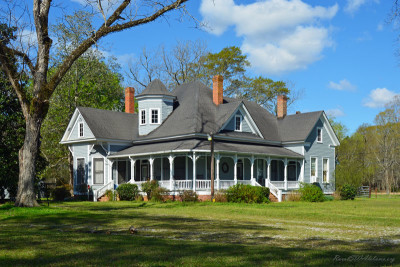
The Shaw House was built circa 1900. It is Victorian style with a wrap-around porch and decorative gingerbread trim. This home is located on the west end of Railroad Avenue in Cuba (GPS coordinates 32.427270, -88.380305). This is a private residence – …
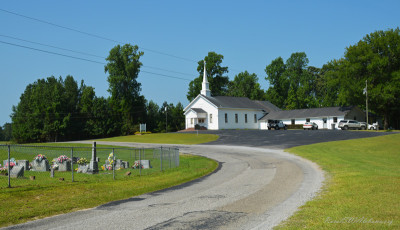
Shown is Shiloh Baptist Church that’s located in the community of Shiloh, AL in south Marengo County (GPS coordinates 32.102003, -87.765748). In front of the church is a historical marker that was erected by the Alabama Historical Association in 2000. …
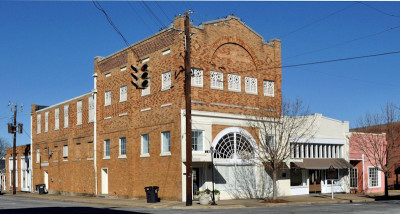
This building was built circa 1909 by John Cox Webb, Jr. It opened as the Elks Theater on October 1, 1915. Harry Simon and Tom Nonnenmacher acquired the Elks and gave it a new name, Si-Non, for a February 1, 1916 opening. This theater was originally a …
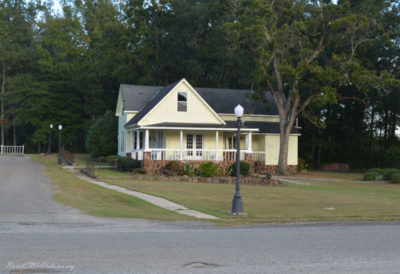
The Community House, located in the old Town District of Silas, was established in 2001. The house is one of the few remaining early 20th Century residence in the town. The front portion of the Community House, predating 1917, was an ice cream parlor …
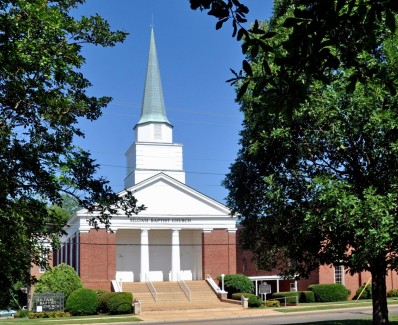
The Siloam Baptist Church was established in 1822. During the mid-19th century, it was Alabama’s most influential Baptist congregation and one of the strongest denominational centers in the South. The pastor and laymen were leaders in the organization …
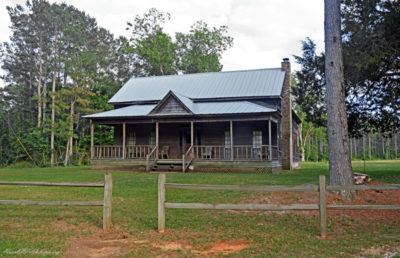
This house was built in 1890 by William Alexander (Alex) and Roberta Pearl White Singleton. The house still remains in the family and is now used primarily as a hunting camp. It is located in south Marengo County in the community of Putnam. The house i …
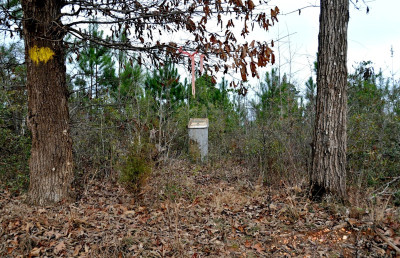
Fort Madison was a wooden stockade fortification in the southern section of Clarke County in the vicinity of the present-day community of Gainestown, AL. It was one of several forts built by early Clarke County pioneers for protection during the Creek …
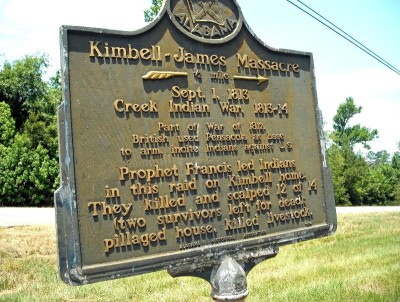
Fort Sinquefield was a wooden stockade fortification in Clarke County near the present-day community of Whatley, AL. It was one of the many forts built by early Clarke County pioneers for protection during the Creek Indian War. Fort Sinquefield was a …
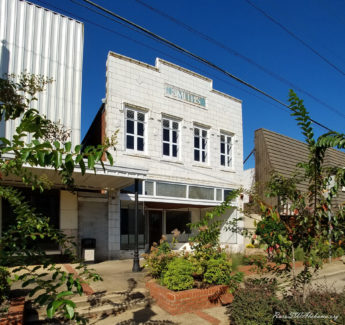
Originally a two-story brick building. this structure had a major renovation in 1905. Ceramic tile was applied over the former brick façade, and the ceiling of the first floor was opened to the second floor creating an oval shaped balcony overlooking t …
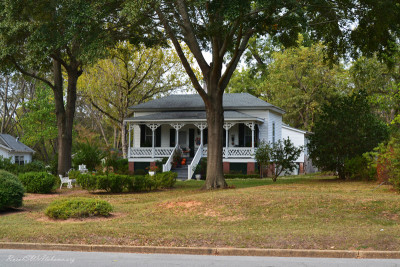
This house, located on the eastern end of Main Street, is unlike any other in Greensboro. A picturesque raised cottage with charming exterior features, the house is one of only a few built in town immediately after the Civil War. The lot was conveyed t …
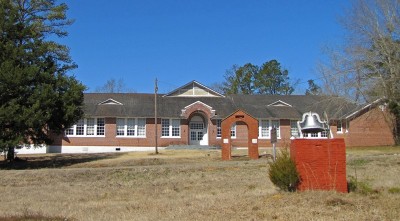
This is a historic African-American school that was founded in 1893 by Dr. William J. Edwards, a graduate of Tuskegee University. The school opened as the Colored Literary and Industrial School in a one-room log cabin on the R. O. Simpson plantation. …
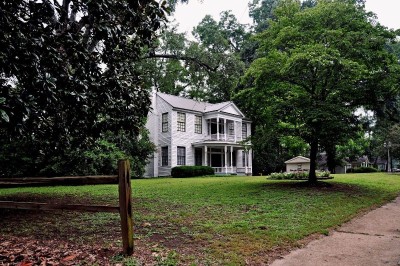
This home, constructed in 1834, is one of the earliest residences in Livingston. When Livingston was plotted, James H. Spence bought eighty acres and began the construction of this home. The Spence-Moon House is one of eleven homes built by a group o …
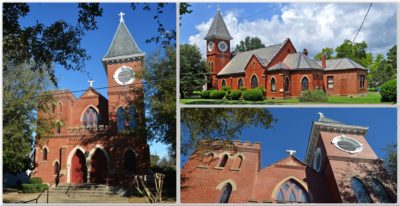
Catholicism was first introduced to this region in 1540 by the priests who accompanied Hernando DeSoto. The French Napoleonic exiles of the Vine and Olive Colony held religious services and attempted to establish a Catholic mission in Demopolis in 1817 …
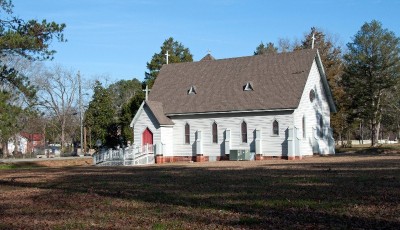
This Gothic style church was built in 1879 by Gainesvilles’ leading late 19th-century builder, Edward N. Kring. In accordance with tradition, the building is oriented from west to east with the altar located at the east end. The main entrance to the ch …
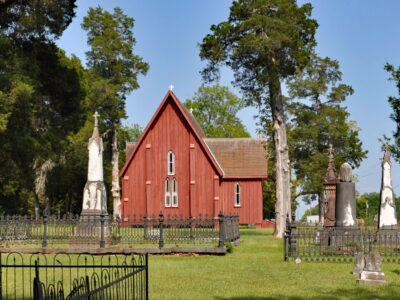
Episcopalians established a mission in this area in 1834 for settlers coming from the Atlantic Seaboard. St. Andrew’s Church was erected in 1853-1854. The design of this small Gothic Revival style church is attributed to Richard Upjohn, the prominent N …
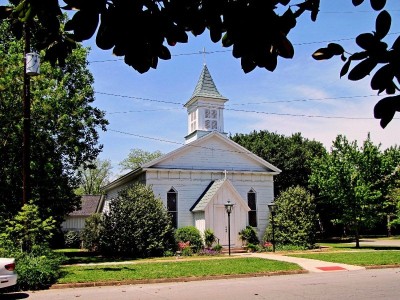
The St. James Episcopal Church was established in 1836. The present church building was built in 1841-1842 and consecrated in 1843 by Leonidas Polk. The church was originally Greek Revival style and later altered to Gothic elements. It was photogra …
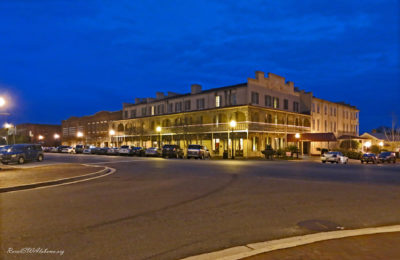
As one of the few remaining antebellum river hotels in the southeast and the only surviving hotel in Selma’s downtown historic district, the St. James Hotel has witnessed much of the dramatic history that has played out in this picturesque Southern cit …
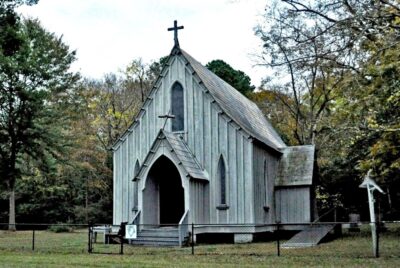
St. John’s-In-The-Prairie, now known as St. John’s Episcopal Church, is a small Gothic-style church that is believed to have been constructed according to the designs of the prominent New York architect, Richard Upjohn. The church was originally erecte …
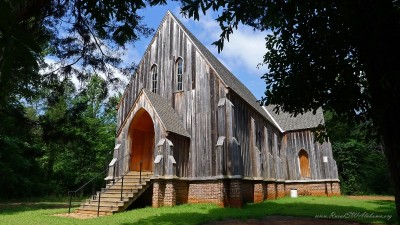
Cahaba (also spelled Cahawba), located between Selma and Orrville at the confluence of the Alabama and Cahaba Rivers, was once a thriving antebellum river town and it served as Alabama’s first permanent state capital from 1819-1826. It became a ghost t …
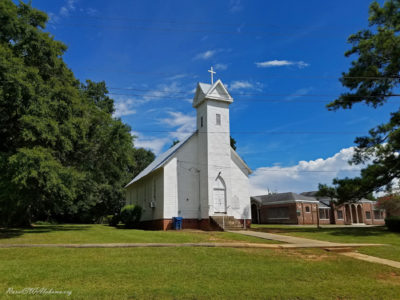
The first Episcopalian minister came to Evergreen in December 1870. This Episcopalian church was built circa 1880. Prior to this, the Episcopalian congregation held their services at the Union Church which was a community church that all denominations …
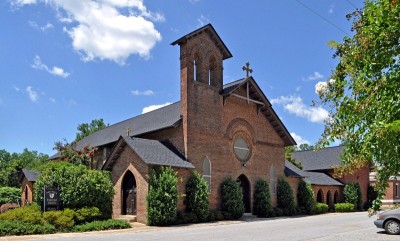
This parish, established in 1830, is the third oldest in the Alabama diocese. This church was erected in 1840 and consecrated in 1843 by Leonidas Polk, Bishop of Louisiana, who was later a Confederate general. It was here that Nicholas H. Cobbs was c …
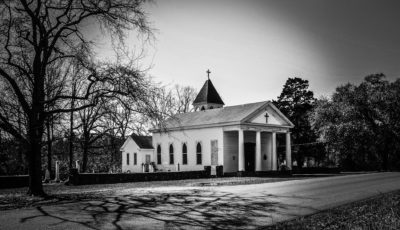
St. Paul’s was built circa 1838 and it originally had a Greek Revival style construction. The church was consecrated in 1844 by Bishop Nicholas Hamner Cobbs, the first Bishop of Alabama. During the late 19th century, Gothic additions were made to the c …
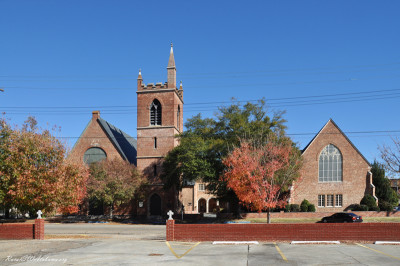
St. Paul’s parish was founded in 1838 and consecrated in 1843. The original building was located on the corner of Alabama Avenue and Lauderdale Street, one block south of the present church building. In April 1865, following the Civil War Battle of Sel …
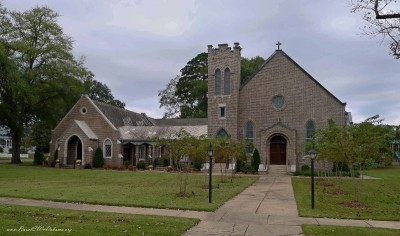
In 1845, the Anglican minister Rev. John H. Linebaugh organized and taught an Anglican confirmation class in Eutaw. Nine were confirmed in June of 1845 and the small congregation was organized into a parish. The first vestry was elected and appointed t …
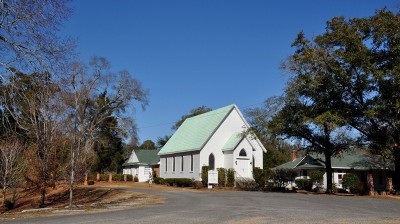
The Episcopal Church in Marion was established in 1838 under the name of St. Michael’s Parish (not to be confused with the slightly later St. Michael’s Parish in the Faunsdale area). Services were held at the Marion Courthouse. The first church buildin …
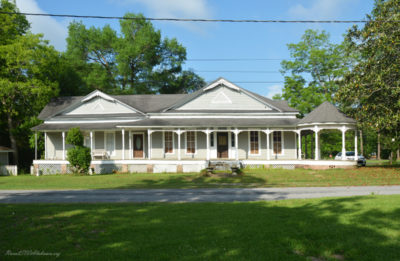
This Vernacular turn-of-the-century style home was built circa 1900. The house features a wrap-around porch with turret. This house is located in Cuba on Second Street at the intersection of Second Street and Third Avenue (GPS coordinates 32.427662, – …
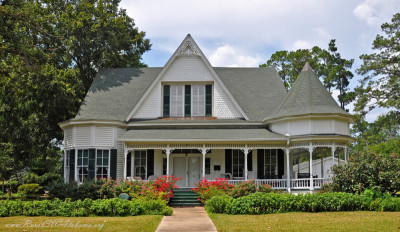
This home was built between 1901 and 1904 for Probate Judge Nicholas James Stallworth (1834-1911). It is thought that the house was built by a contractor from Brewton, AL who built several homes in Monroeville during the 1900-1920 time period, most hav …
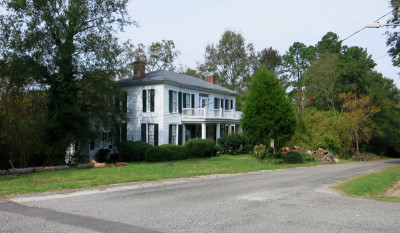
This and the Moses Lewis house may the oldest surviving two-story dwellings in Gainesville. The restrained Federal style appearance of the house suggests that it may also have been built during the 1830s prior to the town’s more elaborate Greek Revival …
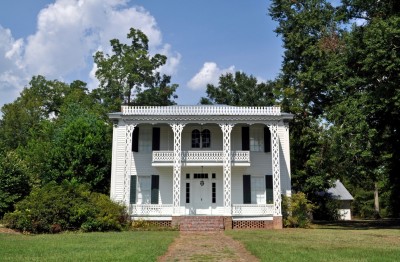
Inspired by the works of architect Samuel Sloan, this outstanding example of antebellum eclecticism was built in 1851 for Judge David W. Sterrett, lawyer, planter, and trustee of the Wilcox Female Institute. The veranda features four tall trellis-type …
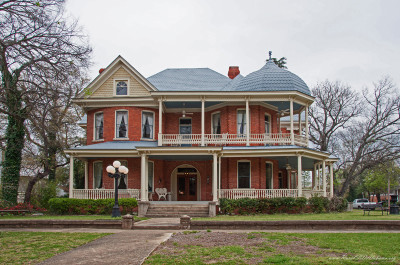
This two-and-one-half story, Queen Anne house was built in 1903 for Henry Martin Smith, a brick company owner. Built of solid brick, the house features interior walls over a foot thick. Other features of the house include a double-tiered, wraparound, p …
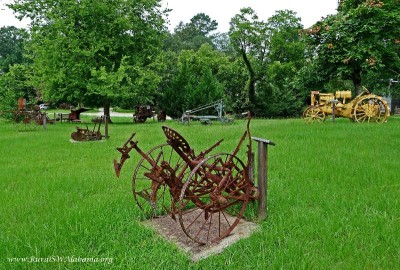
Several years ago, Claude Strother set a piece of old farm equipment beside Highway 5 at Gastonburg which is located in western Wilcox County. Later, he added another piece. He has continued adding pieces over the years and now this has become an impre …
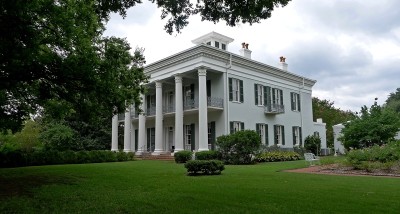
This mansion is one of the finest examples of Greek Revival neo-classic architecture in the Southeast. Construction began on this house in 1852 but was it not completed until 1856. Built as a townhouse for Col. Edward Watts, the 10-room, 6,000-square-f …
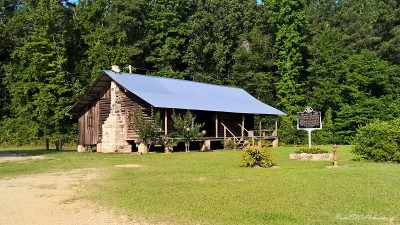
This log cabin is one of the oldest homes in Washington County. It was built on the east side of Bassett Creek near Wagarville in 1874 by Gibeon Jefferson Sullivan, a Confederate soldier who served in an all-volunteer company made up of men from Washin …
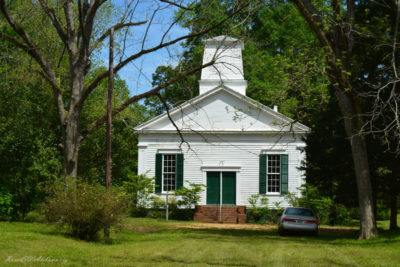
This Methodist congregation was organized circa 1837. The church absorbed the congregation from nearby Childers Chapel when it burned in 1842. The Methodist congregation from Childers Chapel traces their beginning to circa 1819. The contract for the pr …
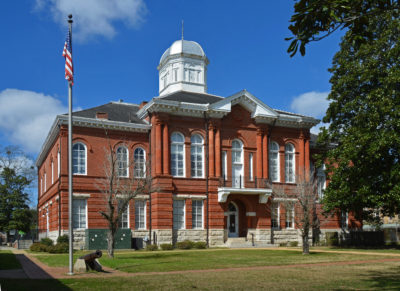
The Sumter County Courthouse, built circa 1902, is a Beaux-Arts Classicism style building with certain features that reflect the then popular Romanesque style. Features which reflect the Classic Revival include four sets of coupled Ionic engaged column …
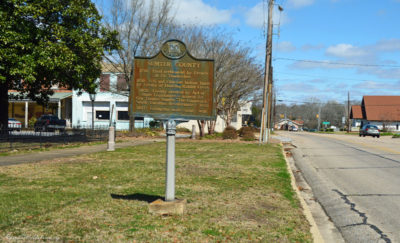
This historical marker is located beside Highway 11 at the Courthouse Square in Livingston (GPS coordinates 32.582701, -88.187940). The marker was erected by the Alabama Historical Association in 1966. Following is the inscription on the marker: —— …
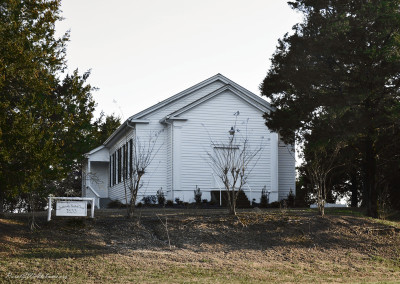
This church traces its beginning to the “Old Primitive Baptist Church” which was the first church organized in the western part of the Sumter County. The Old Primitive Baptist Church, which was located about 4 miles west of the present Sumterville Bapt …
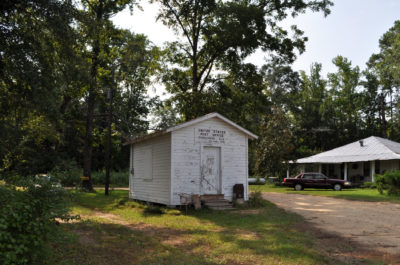
Sunflower is a small unincorporated community located in east Washington County. The Sunflower Post Office began operation in 1892 and served the community until it was closed in 2013. The small building that is shown was built sometime prior to 1936 a …
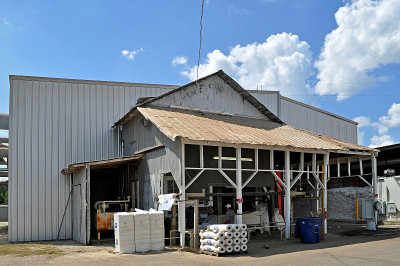
Sweet Water, AL is a small community located on Highway 10 in the southern part of Marengo County. The Sweet Water Cotton Gin has been a large part of the landscape of downtown Sweet Water for many years. Traveling from the east on Highway 10, the co …
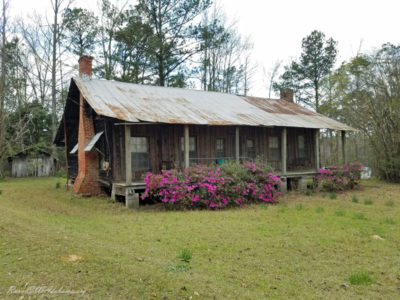
UPDATE: This home was demolished in late 2020. ******** This was the home of Syd and Aletha Etheridge. When Syd and Aletha married in 1901, they started with a small, two-room, dogtrot log cabin. Three of their children were born while they lived in th …
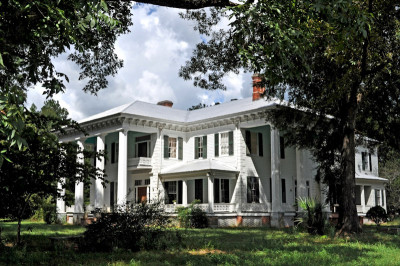
This is a nationally known Wilcox County, AL plantation home. Throughout the years, it has been featured in numerous national magazines and books concerning the architecture or history of the antebellum Alabama Black Belt. The house was photographed an …
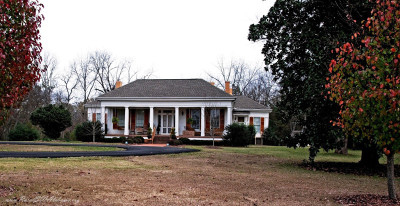
This house was built circa 1852 by Dr. Henry Talbird, second president of Howard College. It was sold in 1856 to Isaac Billingsley and his wife, Ann Jane Moffett Billingsley. The Billingsley’s were prominent members of the Marion community. Isaac Billi …
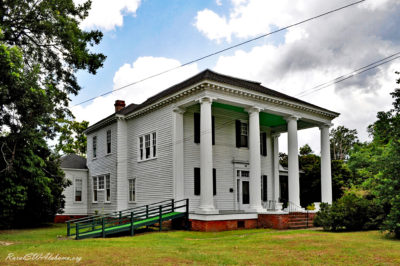
This home was constructed by Cadwallader Beale circa 1883. Beale operated the Evergreen Hotel which was located on corner of West Front and Rural Streets. He sold the house to Dr. Charles T. Taliaferro, a surgeon in the Civil War; who had a medical pra …
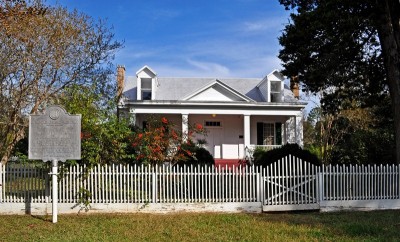
Tanglewood is a historic plantation house near Akron, Alabama. The Greek Revival cottage was built in 1859 by Page Harris, on land that he had purchased in 1824. It was given to the University of Alabama as a memorial to Nicholene Bishop in 1949 and th …
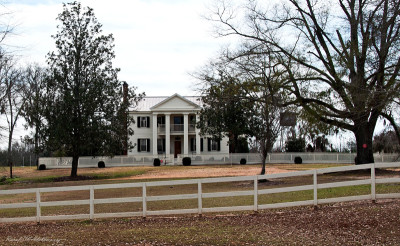
This 2-story, Greek Revival style plantation home, located southeast of Orrville in the Molette’s Bend area of the Alabama River, was built on land originally owned by Thomas Brooks Rutherford, who died in Cahawba 1824, and who is buried in the old Cah …
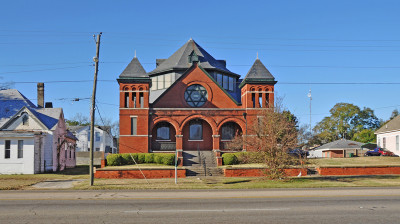
This Jewish temple was completed during December 1899 and dedicated in February 1900. It is a two-story, Romanesque Revival structure with two symmetrical towers and a raised octagonal roofed sanctuary. The front of the building displays a Star of Davi …
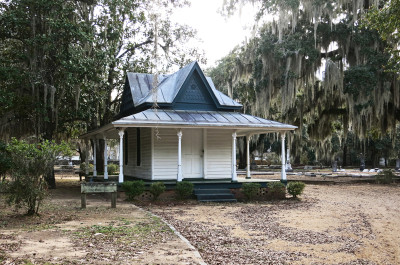
The “Spring House” is located near the Civil War monument in Old Live Oak Cemetery at Selma. This name came from the old practice of having band concerts and Memorial Day programs here each spring. This building is also commonly referred to as the “Pig …
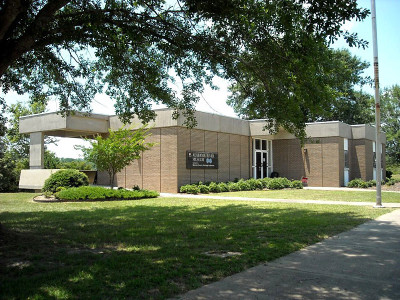
The Alabama River Museum is part of the Monroe County Heritage Museums. It is located on the east bank of the Alabama River at the Claiborne Lock and Dam in Monroe County (GPS coordinates N31.615500,W87.548306). The Alabama River Museum has a collecti …
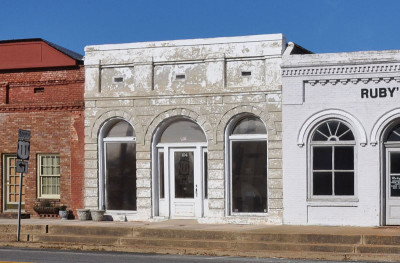
The Bank of Eutaw opened on Feb. 15, 1882, with B.B. Barnes as cashier. The rusticated stucco facade of imitation stone and the round arches of the windows and centered doorway look almost the same as on the bank’s opening day over 130 years ago. This …
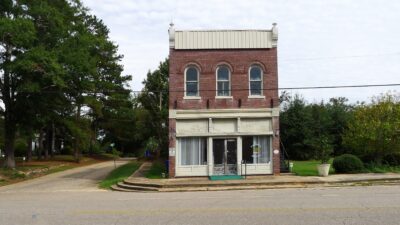
The Bank of Pine Apple began with the sale of stock in 1903 and was chartered the same year as a state bank. The bank building was built in about 1904. It is a two-story brick commercial structure with a single storefront and parapet roof. The front of …
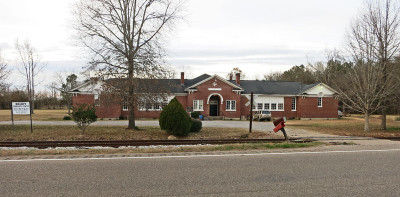
The Beloit Industrial Institute, which operated from 1888 to 1923, was the first Christian school for African-Americans in Dallas County. It was located on Highway 22 in the community of Beloit, AL about 10 miles southwest of Selma. The Beloit Industri …
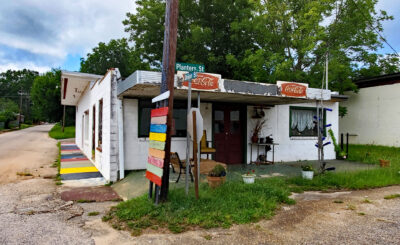
Joe Anderson owned and operated the Shoe Shop in Camden for over forty years. His daughter Betty Anderson has preserved the shop as a museum to honor her parents and grandparents along with their hometowns of Camden and Gee’s Bend. Betty’s mother (Mari …
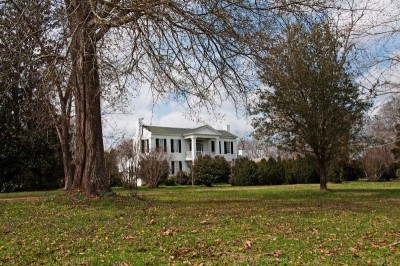
The Camellias is a beautiful antebellum home located just south of Marion, AL. It gets its name from the many camellia bushes located on the front lawn. The house was built in the early 1830s by Joseph Crenshaw as a gift for his daughter, Mary Crensh …
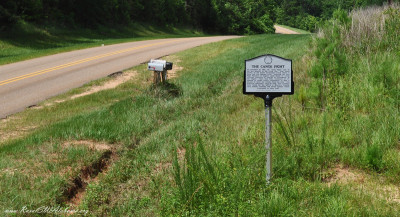
This historical marker is located beside Madison Road about three miles east of Gainestown in south Clarke County (GPS coordinates 31.445267, -87.644307). Following is the inscription on the marker: ———- The Canoe Fight On November 12, 1813, the Canoe …
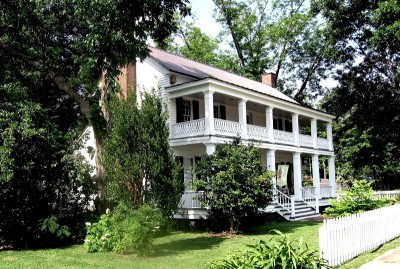
The Clarke County Historical Museum opened in 1986 as a project of the Clarke County Historical Society. It is located at downtown Grove Hill, AL in the Alston-Cobb House which was built in 1854. The museum contains a treasure of southwest Alabama hist …
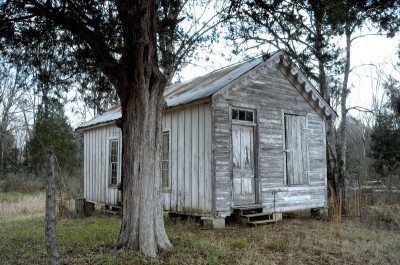
This was the showroom for coffins of builder, Edward Kring. Here you would pick out your material and wood for your coffin which would then be custom built. Mr. Kring was probably the busiest builder in Gainesville in the 1870s, building both the Metho …
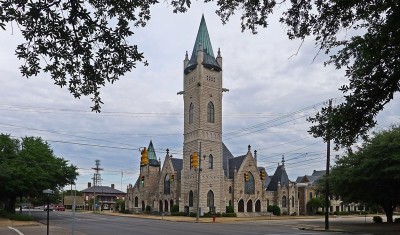
The First Baptist Church of Selma was organized in 1842. The congregation erected their first permanent building in 1850 at the corner of Church Street and Alabama Avenue. After the Battle of Selma, First Baptist was the only church open for Sunday ser …
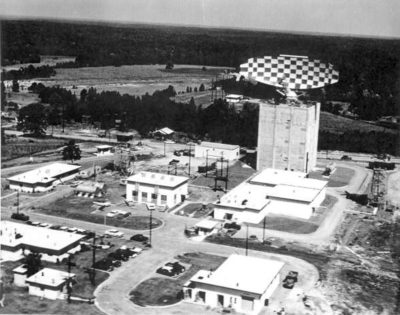
From 1958 to 1969, Thomasville was the location of an Air Force Radar Base which was home to the 698th Aircraft Control and Warning Radar Squadron. The mission of the 698th Squadron was to evaluate a prototype of the AN/FPS-35 long-range radar built by …
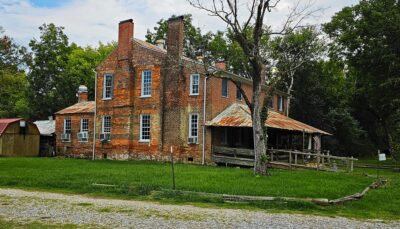
This house was built in 1840 for Augustus Foscue, a North Carolina native who owned more than 3,000 acres and 137 slaves in Marengo County by 1850. The original construction date is worked into orange-hued brick on south side chimney. The brown-hued br …
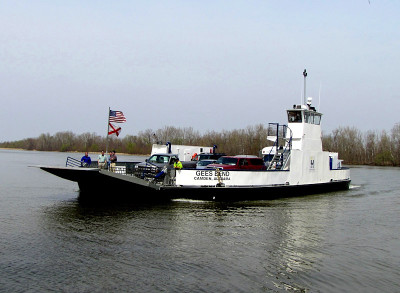
During the Civil Rights Movement, black residents of Gee’s Bend began taking the ferry to the county seat at Camden to try to register to vote. Local authorities reacted by eliminating ferry service. The shutdown of the 15-minute ferry ride forced the …
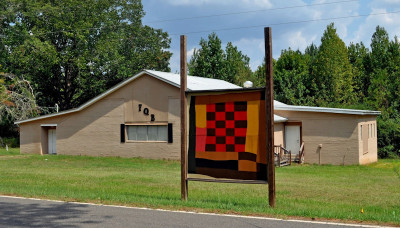
Gee’s Bend is a small rural community located in a curve in the Alabama River in the northern part of Wilcox County, AL. Founded in the early 1800s, it was the site of cotton plantations. After the Civil War, the freed slaves became tenant farmers an …
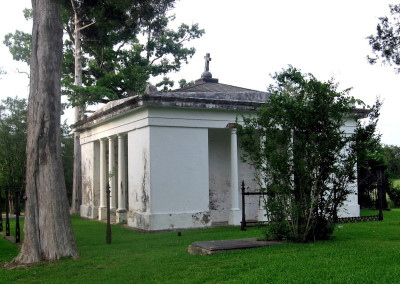
This Greek Revival-style mausoleum was built between 1841 and 1845 on a chalk bluff overlooking the Tombigbee River in Demopolis. It was built by Mary Anne Glover, second wife of Allen Glover. Allen Glover died in 1840 and was initially buried elsewher …

Shown are pictures of the grave of John A Bell that’s located in the “New” Cemetery at the Old Cahawba Park in Dallas County. On May 23rd, 1856, there was a shootout on the main street in Cahawba, with J. R. Bell and his two sons against Will E. Bird, …
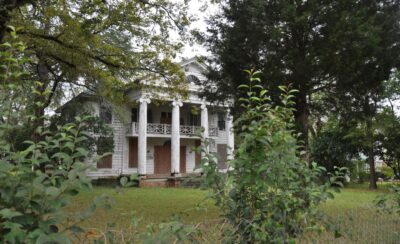
This historic Uniontown mansion was boarded up and abandoned in the mid-1990s after the remains of a boy who had been reported missing nine years earlier were found buried under the front porch of the house. In 1978, Allan Lucy was adopted by Philip an …
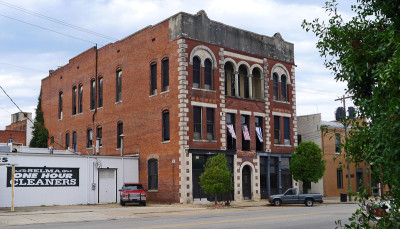
The Harmony Club is a Renaissance Revival three-story commercial building with a cast iron storefront. It was built in 1909 as a social club by Selma’s Jewish community. The club featured a restaurant, men’s lounge and huge ballroom. While the first fl …
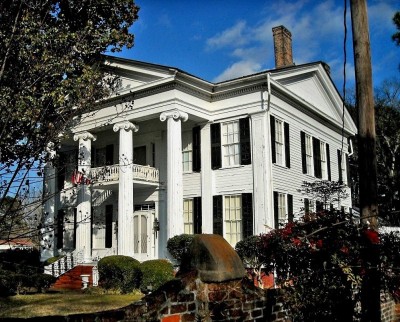
This beautiful antebellum home was built circa 1845 for Col. Green G. Mobley from Fairfield District, SC and his Vermont-born second wife, Henrietta. Four fluted Ionic columns support its three-bay portico with the middle two supporting a second floor …
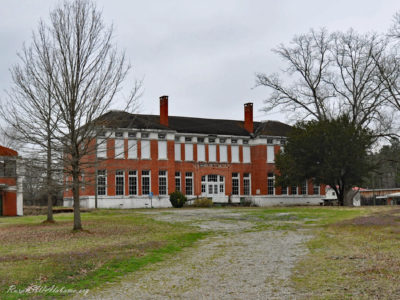
The town of Thomaston, which was founded by Dr. Charles B. Thomas, was incorporated November 15, 1901. In 1907, the Alabama State Legislature voted to set aside money for the establishment of a consolidated, school in each county. Records from 1905 sho …
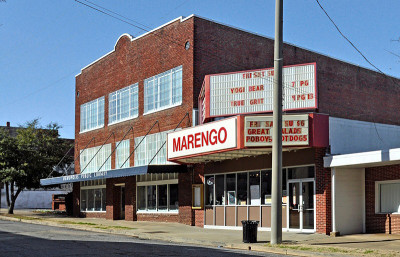
Demopolis has a long tradition of theaters. The Braswell Theater opened in 1902. Next was the Elks/Si-Non/Lido that operated from 1915 to 1935. On September 14, 1935, the Marengo Theater in downtown Demopolis celebrated its grand opening as the excl …
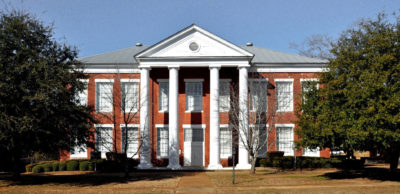
Founded in 1835, the Marion Female Seminary was one of the earliest colleges for women in the United States. It was the first of four colleges established in Marion (see note at bottom). The present Marion Female Seminary building was erected in 1850. …
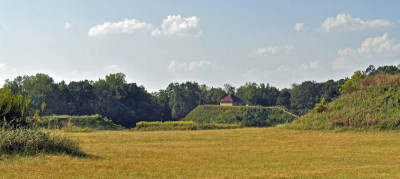
Called “The Big Apple of the 14th Century” by National Geographic, Moundville Archaeological Park was once the site of a powerful prehistoric community that, at its peak, was America’s largest city north of Mexico. Located on the Black Warrior River n …
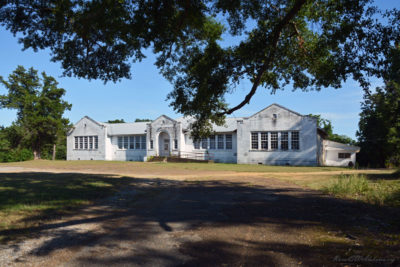
This school building was built in 1928. The school closed May 1961 and its students started attending Sweet Water High School. The Nanafalia School building has been well maintained and is still in good condition. It is located in south Marengo County …
![]()
In 1925 the United States Congress passed the Kelly Act and created the U.S. Department of Commerce which in turn established the U.S. Air Mail. In 1927, Civil Air Mail Route 23 (CAM-23) was established between New Orleans , LA and Atlanta , GA . In 1 …
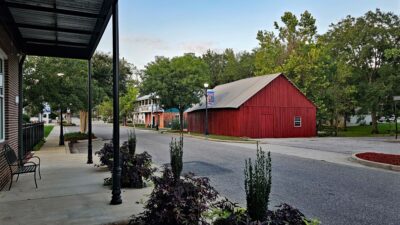
The old Blacksmith Shop, commonly referred to as the Red Shed, was built around 1895. The building has a simple board and batten construction. This was the shop of the blacksmith, J. Studstill. The building is built across the drainage ditch that runs …
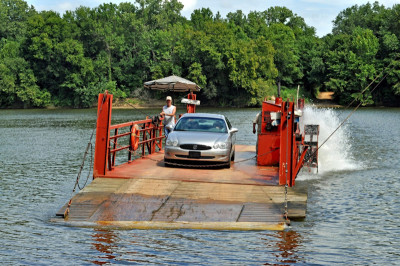
Provided are pictures taken August 2010 of the old cable ferry that operated at Davis Ferry on the Alabama River at Haines Island in west Monroe County. This ferry was taken out of service in 2013 and it is now on display at the Gee’s Bend Ferry Termin …
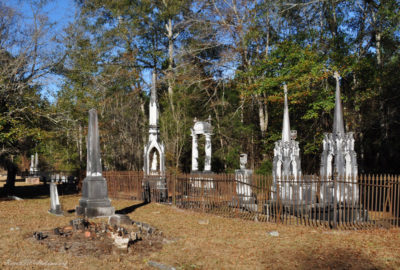
Settlement of Dayton began in the early 19th century, with a town survey done and a “public well” established in 1832. The post office was established in 1837. The town was incorporated on January 13, 1844. The old Dayton cemetery contains graves of so …
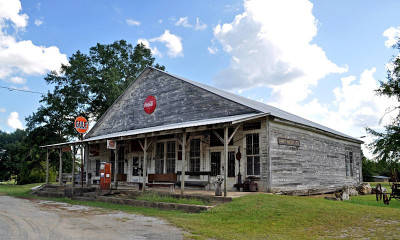
The Grant Store was built in 1924 by T. L. S. Grant. It was a general store that contained anything that country folks living in the early and mid 1900’s might need – food staples, cooking utensils, clothing, remedies for all types of ailments, farmin …
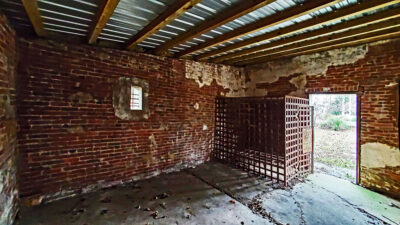
This small one-room jail was built about 1907, the year that Faunsdale was incorporated as a town. It is the oldest separate jail in Marengo County and the oldest public building in Faunsdale. It was used until 1955. The walls of the jail, almost a …
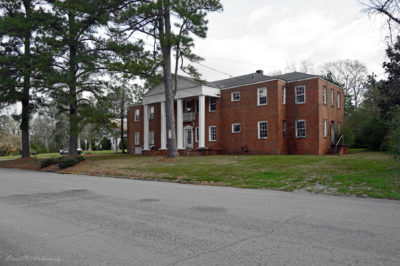
The Kimbrough Hospital was a privately owned hospital built circa 1937 by Dr. Cecil E. Kimbrough as a service to the community to provide healthcare. It was a full-fledged, two-story hospital with several doctors, nurses, staff, OB/GYN, surgery, x-rays …
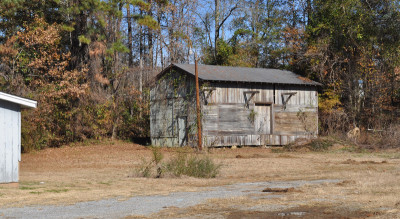
Thomaston, like several other towns in our area, began as a railroad town. The Town of Thomaston was incorporated on November 15, 1901, and the railroad was completed through Thomaston on November 21, 1901. The Louisville and Nashville Railroad’s Selm …
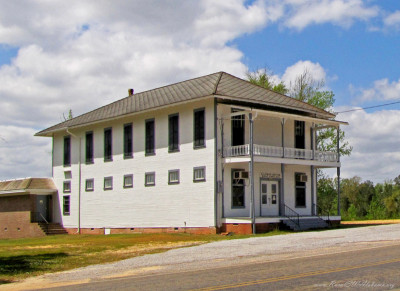
This old general store is the most famous landmark in the historic community of Burnt Corn. It was built by James K. Kyser who became the Postmaster in January 1891. The store opened in 1908. The Burnt Corn Post Office was located in the back left corn …
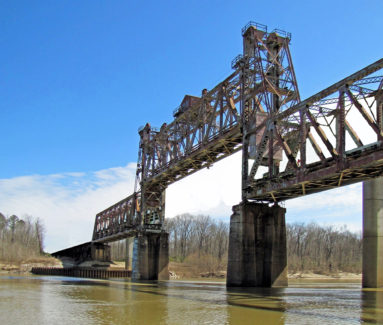
The old Naheola Bridge is a unique landmark in Alabama history. Until its closure to automobile traffic in 2001, it was one of only a few bridges in the world that accommodated rail, auto, and river traffic. This vertical lift bridge was built In 1934 …
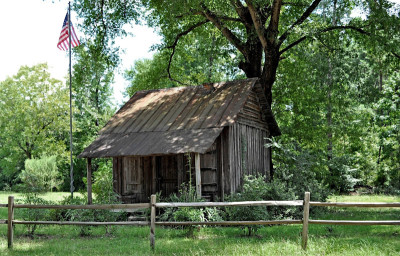
This little post office building is located in southeast Conecuh County. Immigrants of South Carolina settled in this area in the 1870s. As the local population increased, residents needed a local post office. David Robinson submitted a petition to the …
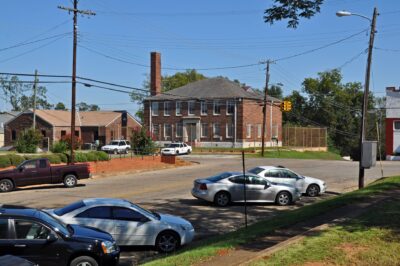
Built circa 1910, this old jail is a major landmark in the Civil Rights and Voting Rights movement. It was involved in many events that occurred in Marion during the Civil Rights Era. While Selma is known for the famous marches that began there in 1965 …
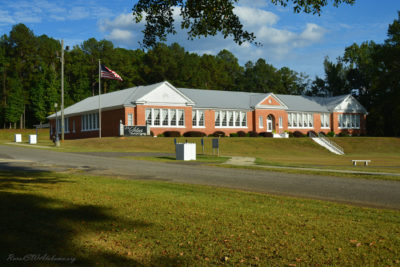
Built in 1936. this school building provided educational opportunities for southern Choctaw County families until it was closed in 2005. The Town of Silas purchased the school property in 2005 and the school building was restored. The restoration was a …
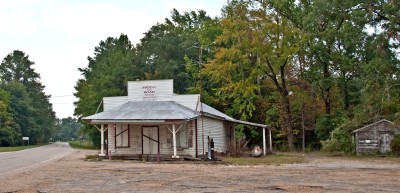
This small store contained the post office that served the Sprott, AL community for over 100 years – from 1881 until it was closed in 1993. The post office shared the building with L. B. Sprott General Merchandise. In 1941, Walker Evans and James Agee …
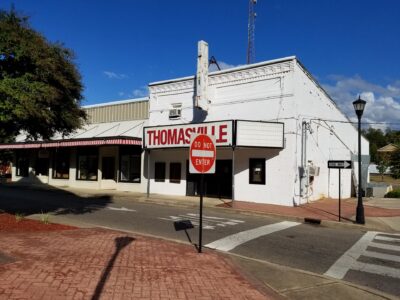
This building was built around 1900. Bricked up arched openings on the south side of the building indicate that it was not originally constructed as a movie theater. However, records indicate that it was operating as a theater owned by Mr. Clio McCrory …
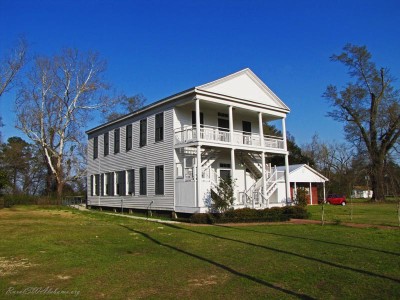
The “new” town of St. Stephens, located approximately three miles south of the original St. Stephens town site, was selected in 1848 as the seat of government for Washington County. In 1853 the Alabama Legislature authorized construction of a courthous …
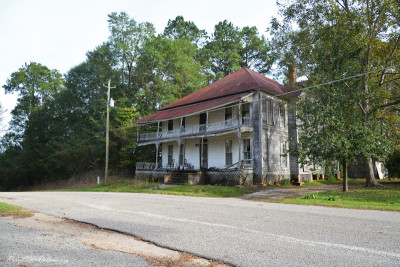
The Whatley Hotel is a two-story, wood frame, building with a steep hip roof and an attached, wraparound, two-tier gallery displaying Queen Anne design elements such as turned posts with comer brackets and a spindled balustrade. The foundation for the …
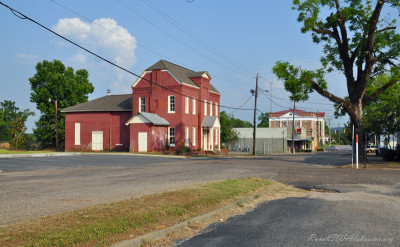
This building was Wilcox County ‘s third county jail. It was constructed in 1889 by L. Y. Tarrant for $4800. In 1960, jail operations were moved to a new facility. It is rare to find old jails still standing in Alabama, especially one with the features …
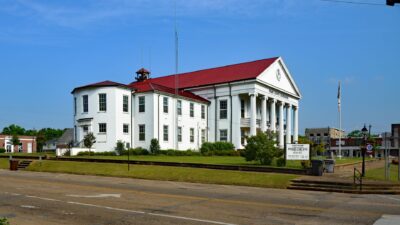
Perry County was created by an act of the Legislature of the newly formed State of Alabama on December 13, 1819. The first courthouse, a log cabin, was erected at Perry Ridge, seven miles southeast of present-day Marion. It was soon decided that a more …
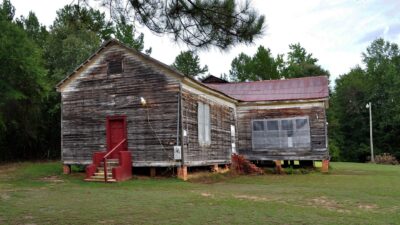
The old Putnam School was added to the Alabama Register of Landmarks and Heritage on 8/5/2010 for its educational and social history and for its associations with African-American heritage. The school is significant as the only African-American school …
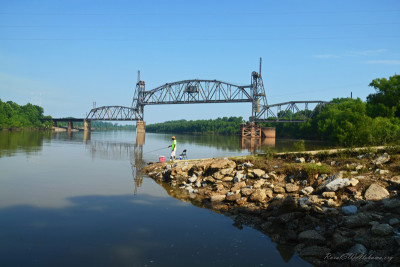
This is the second railroad bridge built across the Tombigbee River at Jackson. The first bridge was completed in 1888. In 1947, an order was received from the War Department for replacement of this bridge. Formal approval of all plans and drawings wer …
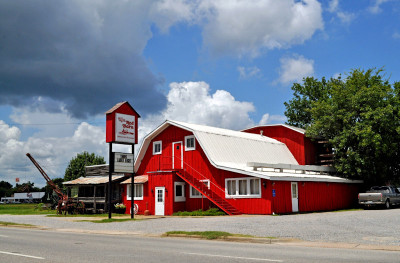
The Red Barn Restaurant is one of the oldest restaurants in the area and it serves some of the best food around. The restaurant opened in 1971 and the current owner has operated it since 1981. The Red Barn Restaurant is located in a rustic old red barn …
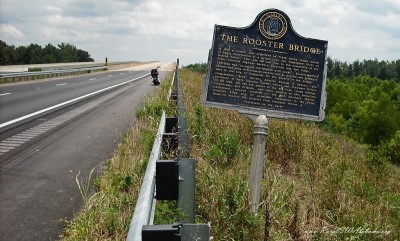
Rooster Bridge (built “to bridge the ‘Bigbee with cocks”) The old Rooster Bridge was located across the Tombigbee River approximately 11 miles southwest of Demopolis, AL. It opened for traffic in 1925 to serve traffic on the Dixie Overland Highway, now …
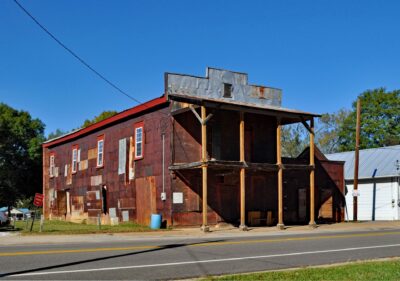
In 1993, Samuel “Sambo” Mockbee and D. K. Ruth of the Auburn University School of Architecture established the Rural Studio at Newbern which was aimed to improve living conditions in rural West Alabama through student-led design and construction projec …
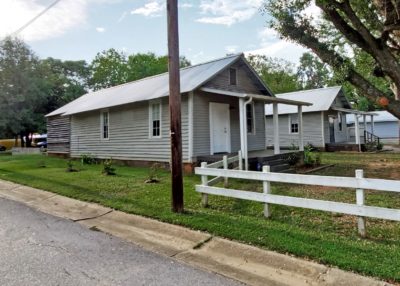
On the night of March 21, 1968, Rev. Martin Luther King Jr. sought refuge from the Ku Klux Klan inside a small, shotgun-style home in the depot neighborhood of Greensboro. (This occurred just two weeks prior to the assassination of Rev. King in Memphis …
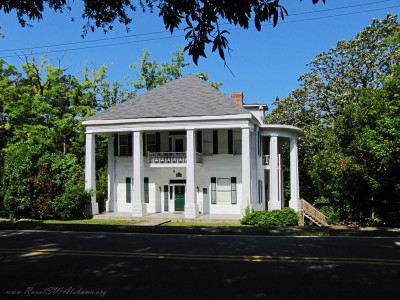
This Pine Apple home was originally built by Dr. Rufus Zeno Chapman and his wife Viola Cater. Dr. Chapman was born in nearby Old Texas, Monroe County, AL in 1873. In 1892 he married Viola and they had three children. Dr. Chapman was a dentist in Pine A …
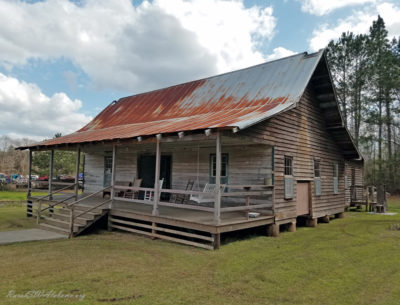
This is a 4-room dogtrot cabin with a full-width porch across the front and a kitchen attached on the back of the house. The house was built on a 120-acre farm about 3 miles from Peterman in around 1900 by Jehu and Sue Stanton. It was constructed using …
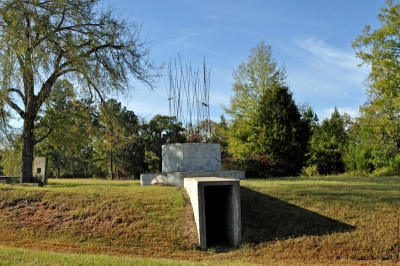
In 1993, Samuel “Sambo” Mockbee, and longtime friend D.K. Ruth, established Auburn’s Rural Studio in the small community of Newbern in Hale County. Rural Studio is an architecture program dedicated to building houses, community centers and other struct …
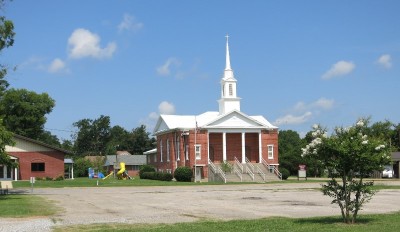
This is a 2-story, Neo-Classical/Craftsman style building that was built in 1921. It is a contributing property to the Thomaston Central Historic District that was added to the National Register of Historic Places on September 14, 2000. The Thomaston C …
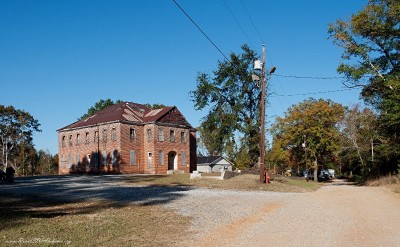
The Thomaston Colored Institute, also known as the Thomaston Academy, is a historic African American school building in the town of Thomaston, AL. This two-story brick building was completed in May 1910 as a private school by an African American religi …
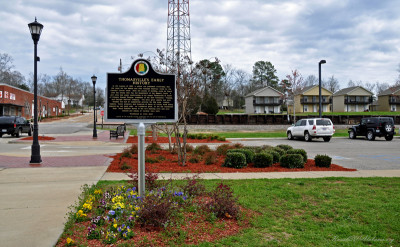
This historical marker is located on the south side of Wilson Street, between West Front Street and the railroad tracks, in downtown Thomasville (31.913260,-87.735270 – Google Maps). It was erected in October 2010 by the Alabama Tourism Department and …
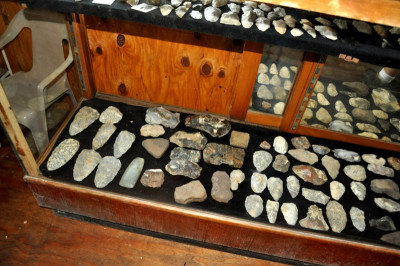
Tommy Hart lives in Carlton, AL which is located in the remote southern end of Clarke County near the forks of the Tombigbee and Alabama Rivers. He is an amateur river archeologist that has spent years searching the banks of the Tombigbee River for In …
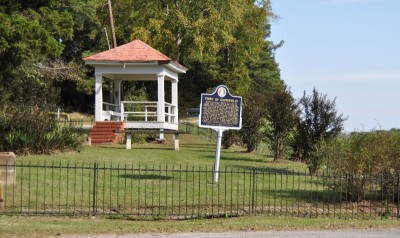
This historical marker is located in the Gainesville Park that’s on the north side of Gainesville near the river bridge (GPS coordinates 32.822814, -88.158342). The marker was erected June 2010 by the Alabama Tourism Department and the town of Gaines …
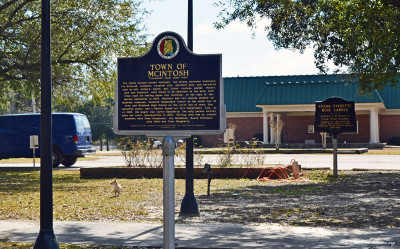
This historical maker provides details about the history of the town of McIntosh, Alabama. The marker was erected in 2010 by the Alabama Tourism Department and the Town of McIntosh. It is located on Commerce Street in front of McIntosh’s Town Hall (GPS …
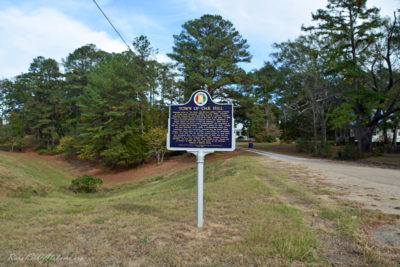
Oak Hill is a small community located in east Wilcox County. This historical marker provides details about the history of Oak Hill. The marker is located in Oak Hill beside Hwy 21 approximately one mile north of the intersection of Hwy 21 and Hwy 10 (G …
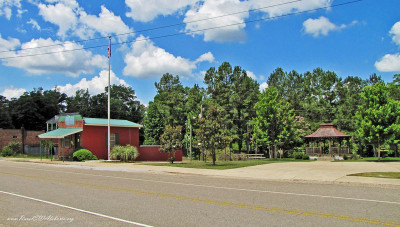
Located behind the Town Hall at downtown Pine Apple is a charming little park. It has a gazebo, benches, picnic tables, a large family pavilion and a restored log cabin. The log cabin was constructed in the early 1860s by Thomas Henry Roberts. The Robe …
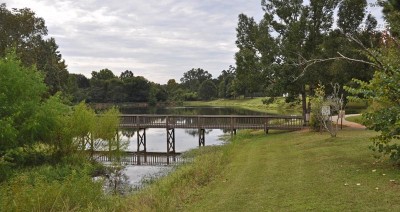
Dr. Charles B. Thomas was the founder of Thomaston. He had the town surveyed and laid out in lots. Thomas also donated the block for the Town Park, the blocks for two schools, and lots for at least three churches. The Town Pond was included in the town …
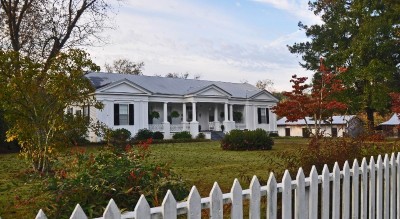
This home closely resembles Aduston Hall which is also at Gainesville. Both houses were built as summer homes for the Travis brothers of Mobile. This house was built for Errock Travis two years after Aduston Hall was built for his brother, Amos Travis …
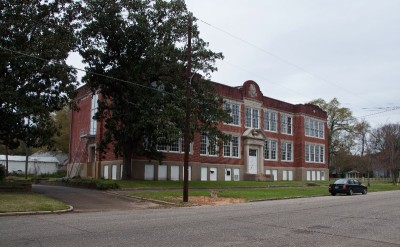
This building built in 1913 was Selma’s first High School. The 25,000 square foot structure has two full floors above ground, and a full basement. It was designed by William T. Warren from Birmingham, one of Alabama’s foremost architects. Tremont High …
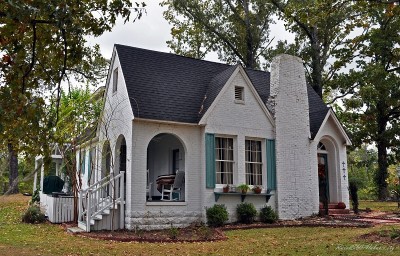
Troupe Trice (1901-1958) built this home for his family using bricks that he made by hand. The mold that he used to make the bricks is displayed at the Choctaw County Historical Museum at Gilbertown. The Trice home is located on Hwy 17 approximately 0. …
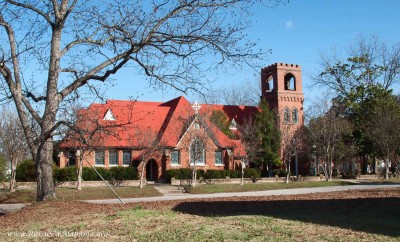
The Trinity Episcopal Church was founded in 1834 and is the third oldest church in the Diocese of Alabama. The congregation met in homes and a small log building until 1850 when a frame building was constructed on this lot given by the Lyon family. Fed …
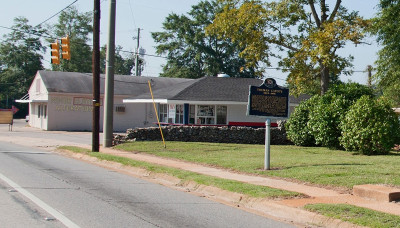
Author, Truman Capote, spent a large portion of his childhood living with and visiting his Faulk cousins in Monroeville, AL. Capote was close friends with Harper Lee, author of “To Kill A Mockingbird”, who lived next door to the Faulk family. Shown is …
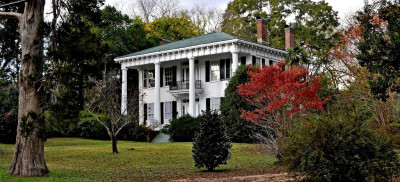
In 1840, Dr. James Levi Tunstall, a prominent physician and planter, purchased a smaller home located on this property. He and his wife, Eliza Croom Tunstall, made plans to build a new home, but Dr. Tunstall died in 1858 at the age of 41. Mrs. Tunstall …
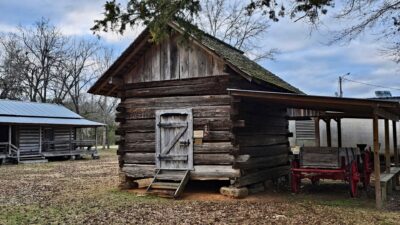
The Turner Corn Crib is believed to have been built with logs taken from the old Turner Fort which was a fortification used to protect settlers during the Creek War 1813-1814. Fort Turner was located in west Clarke County near the community of West Be …
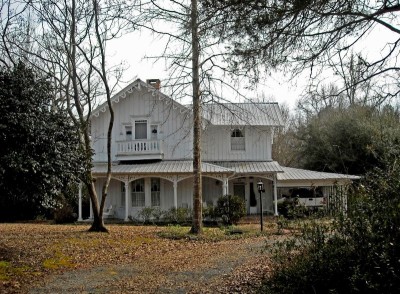
The Turner/Sessions/Kopf house was built c. 1859. It is included in the Bladon Springs Historic District that’s listed on the Alabama Register of Landmarks and Heritage. This house is located beside Bladon Springs Road approximately 0.6 mile east of th …
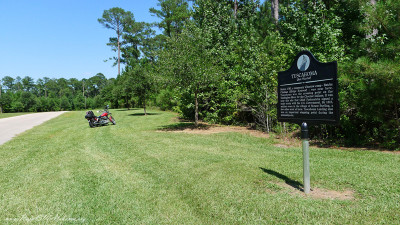
This marker is located in Choctaw County beside Co. Rd. 27 approximately 4 miles SE of Mt. Sterling just before getting to the Tuscahoma Landing on the Tombigbee River (GPS coordinates 32.060166,-88.114815). Following is the inscription of the marker: …
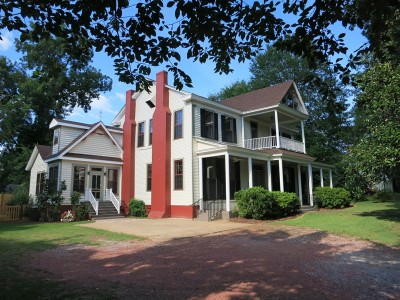
“Twin Magnolias”, also referred to as the Myatt-Hancock house, is thought to have been built around 1845. It originally had a Greek Revival style construction. Victorian features were added ca. 1890. The house is a two-story frame dwelling with a five …
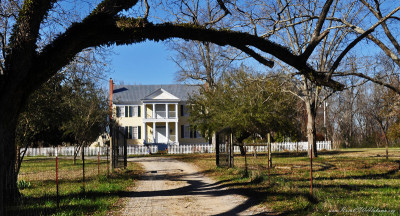
The Underwood Plantation Home, also known as “Black Thistle”, is a Greek Revival-style home that was built circa 1837 by the Greene Underwood Family. It was added to the Alabama Register of Landmarks and Heritage on November 2, 1990. This house is loca …
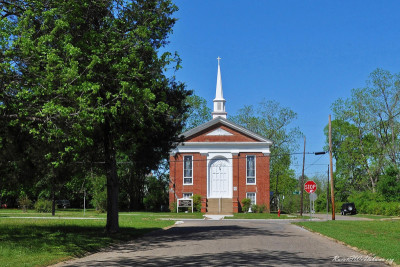
As early as 1843, the Methodists of Uniontown had purchased a lot on Water Street and a church had been erected before the summer of 1844. This building was used until 1858 when the present two-story brick building was erected. The second or main floor …
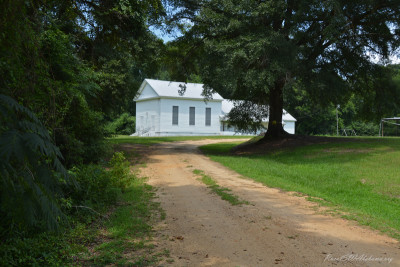
This church congregation was organized in 1833 and the current church building was built circa 1850. The interior of the original structure has been little altered since its construction. Overhead on the sides and back is a slave gallery that’s support …
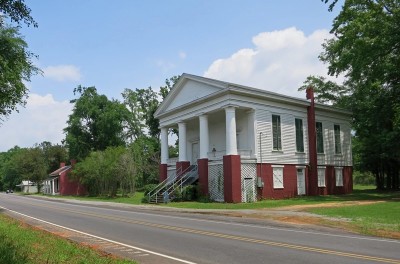
This Methodist church in Dayton is one of oldest churches in Marengo County. The first Methodist-Episcopal Church in Dayton was built in 1819 of logs donated by Benjamin Glover. The next church was constructed prior to 1830. The current church was comp …
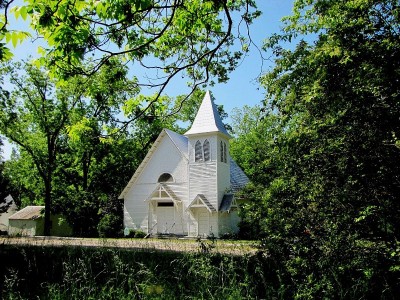
This Victorian style church was built during the 1890s. The interior of the sanctuary has been altered very little since the church was build. The stained glass windows are original except for a few pieces that had to be replaced due to damage. The b …
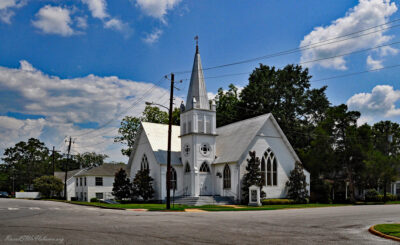
The United Methodist Church has been serving the Livingston community since 1834 when they began worshipping in the Sumter County Courthouse as the Methodist Episcopal Church. In 1837, the church congregation contracted carpenters to build a church bui …
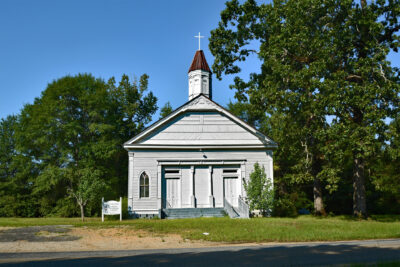
Methodist have been active in the area of Lower Peach Tree since the early 1820s. This was shortly after Lower Peach Tree was settled and Alabama became a state. Methodist circuit riders served the area. The Lower Peach Tree Methodist congregation was …
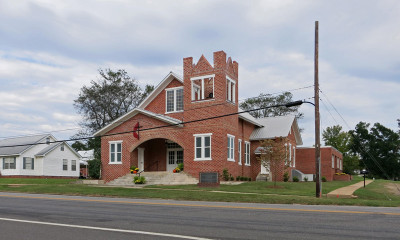
One of the oldest Methodist congregations in the area was established at the nearby community of Dayton, AL. Their first church building was constructed in 1819 of logs. The current Dayton Methodist Church building was dedicated in 1851. On March, 11, …
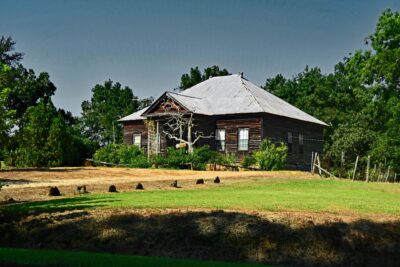
This home was built by the Vaughan family, one of the earliest families to settle in Wilcox County. The age of this house is unknown, but it is thought to have been built around 1830. This house is a simple one-story cottage constructed throughout with …
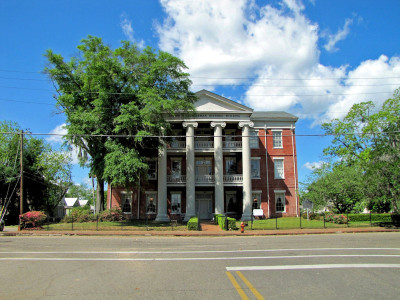
This Greek Revival building is one of Selma’s most historic. It was built in 1847 by Selma’s Masonic Lodge #27 as a school for orphans and children of Masons. Through the years, it has also served as a Confederate hospital, the Dallas County Courthouse …
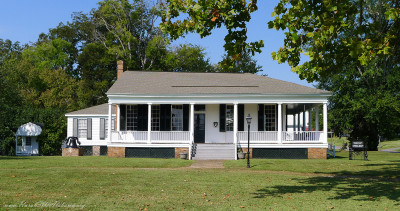
This home was built circa 1841 by Iredell P. Vaughan, a tailor, for his new bride, Miss Ann Margaret Steele. It has a raised Creole Cottage style construction. A one-story porch spans the full width of the east and south facades. It was added to the Na …
Welcome to Selma, Alabama Antebellum Rural Southwest Alabama, “The Old South” Welcome to Demopolis, Alabama Syrup Making Day at Rikard’s Mill, Beatrice, AL (November 5, 2016) Churches & Chapels of Rural Southwest Alabama Old Cahawba (site of Alabam …
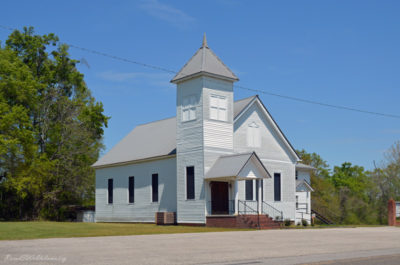
This church is located in southeast Marengo County in the community of Vineland. It was organized on September 12, 1912 with 29 charter members. The church was established as a memorial to Thomas William Smyly (June 11, 1887 June 22, 1912), son of Will …
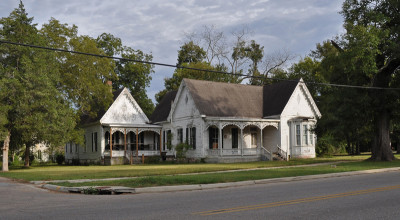
This Victorian-style home was built prior to 1884 by Moses and Flora Marx on a lot they purchased in June 1879. An affluent Jewish family, they owned a large dry goods store and a millinery shop. The home was later occupied by the Julius Marx family. T …
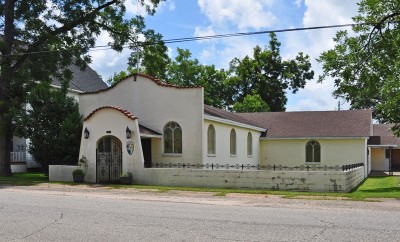
The Visitation Catholic Church is a Mission style building with stucco wall treatment. It was built around 1940. This church is a contributing property to the Jackson Historic District that is listed on the National Register of Historic Places. It is l …
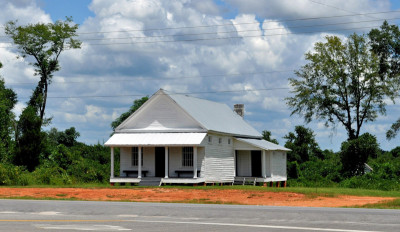
This building is located on its original site at Perdue Hill and was built around 1875 as a doctor’s office. Dr. J. L. Sowell was the last doctor known to have his office in this building. The building was enlarged in 1927-1928 for use as a store by …
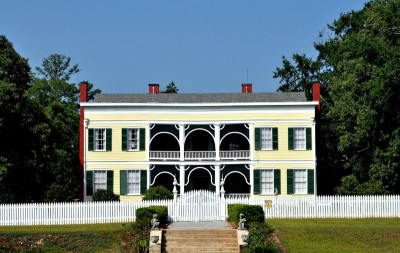
This beautiful antebellum home, located in the Furman community, was built in a one-of-a-kind Steamboat Gothic style. The nearly 6,000 sq. ft. of living area consists of 12 rooms and 12 fireplaces, and unique porches on all sides. It was named “Wakefie …
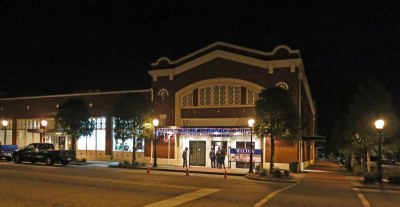
The Walton Theater opened for operation in 1914. During the late 1940’s, in addition to running feature films and hosting vaudeville shows, the Walton staged local “Amateur Nights.” A typical weekend night at the Walton would include a feature movie …
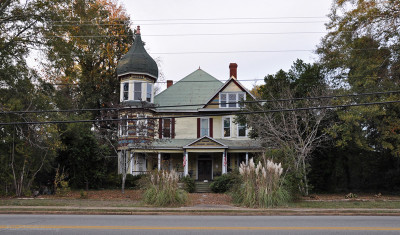
This house was built circa 1898 by Greensboro’s most prolific builder of the 1890s and early 1900s, John Straiton. It is one of the most imposing Queen Anne-style dwellings in the county. The three-story corner tower with an onion-shaped dome dominates …
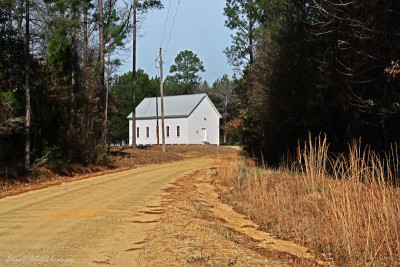
This church was founded in 1883. The present church building was completed around 1916. Prior to its construction, the congregation held their first services in a tiny log cabin and later in a rough lumber building. The Washington Baptist Church is a t …
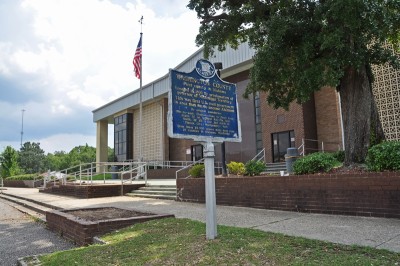
This historical marker is located in front of the Washington County courthouse at Chatom (GPS coordinates 31.465740, -88.256272). The marker provides details about Washington County which is the oldest established county in the state of Alabama, and or …
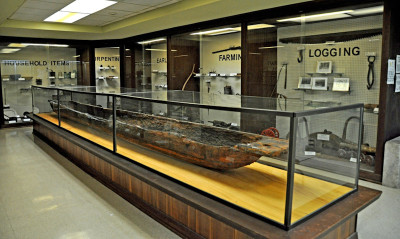
This museum is located in Chatom in the basement of the Washington County Courthouse. It contains artifacts that depict the history of Washington County, the first county in Alabama. Access to the museum is stairs or elevator. For additional details a …
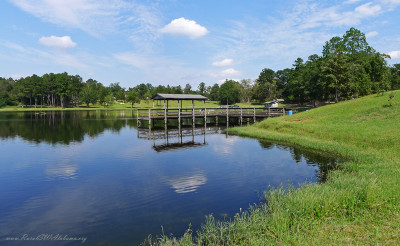
Washington County State Public Fishing Lake near Millry, AL (locally referred to as Emmet Wood Lake)
The Alabama Wildlife and Freshwater Fisheries Division, Department of Conservation and Natural Resources, manages 23 public lakes in 20 counties throughout Alabama. One of these is the 84-acre Washington County State Public Fishing Lake, also known as …
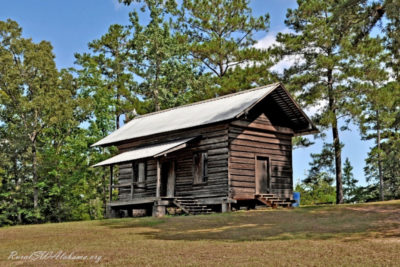
This small log cabin, located in the Evergreen Municipal Park, was originally located near the community of Castleberry. It is a section of a larger cabin built ca. 1877 by John Daniel Weaver, Jr. This section of the cabin originally served as the din …
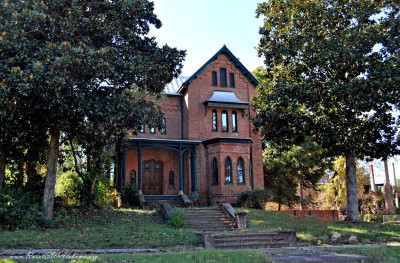
The Weaver-Hooper House, better known as the Weaver Castle, is Gothic in design and is said to be a copy of a castle on the Rhine. William Weaver, a prominent landowner and son of one of Selma’s founders, built it in 1868. His daughter, Clara Weaver Pa …
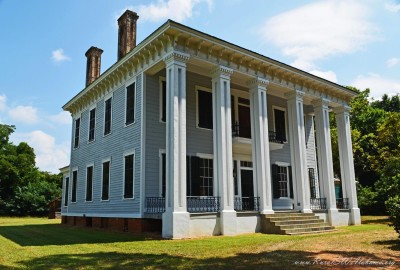
This beautiful antebellum home was constructed circa 1855 for Col. Lucius Quintus Cincinnatus DeYampert as a gift to his daughter, Julia, and her husband, John Henry Young Webb. It is a two-story structure that contains a hipped roof with heavily brack …
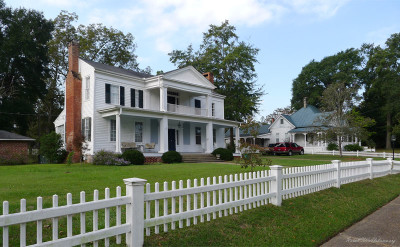
This home was built circa 1840 for William Peter Webb, a lawyer from North Carolina who was one of the earliest residents of Eutaw. During early remodeling, a two-story porch was added with a door on the second level entering a balcony. This house was …
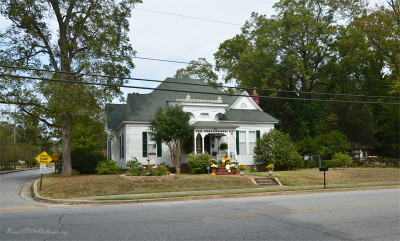
This is a ca. 1880 Victorian, one-story house with Eastlake details. Features of this house include a three bay facade, complex roofline and massing, central one story portico with hip roof, turned posts and spindlework, central projecting bay with she …
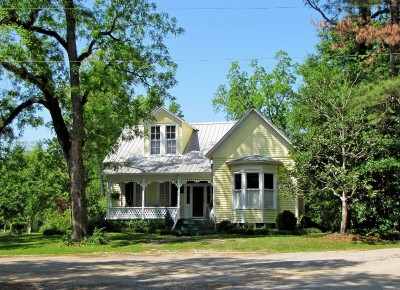
This Queen Anne style farmhouse, circa 1880’s, was built by the ancestors of the current owners, Jim and Karen Weir. The roof is now sheet metal and a new addition is blended onto the back but otherwise the exterior is original. The interior has been f …
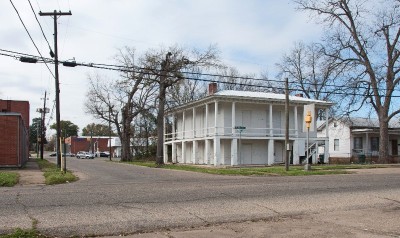
The Wesley Plattenburg House is a historic house in Selma, AL. Featuring a unique combination of the Greek Revival and Italianate styles, it was completed in 1842 for Wesley Plattenburg. Plattenburg was born on April 13, 1803 in Anne Arundel County, M …
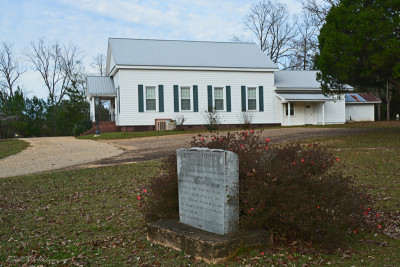
The community of West Bend is located in west Clarke County approximately six miles northwest of Coffeeville. This historical marker is beside the West Bend Baptist Church that’s located on CR 31 in West Bend (GPS coordinates 31.823263, -88.131619). Th …
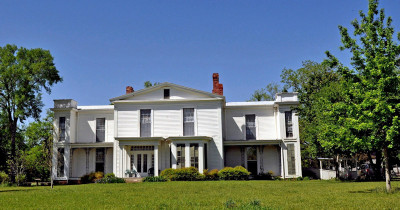
James Lewis Price, a native of Richmond, Virginia, began construction on this Greek Revival house in 1836, completing it in 1840. Price and his wife, Louisa Adele Shearer, raised four daughters here. Maria Overton Price, their eldest daughter, married …
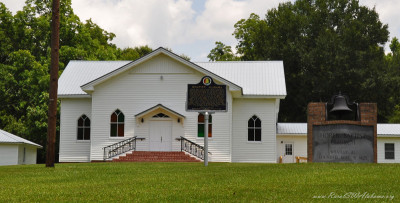
This historical marker is located on Main Street in front of the Horeb Baptist Church at Whatley (GPS coordinates 31.650388,-87.711215). Following is the inscription on the marker: ———- Whatley, Alabama Originally home of Creek and Choctaw Indians, Wha …
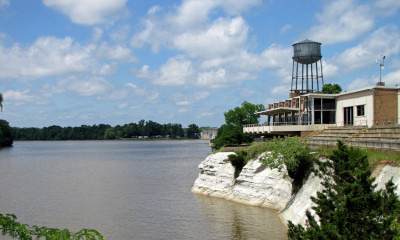
White Bluff, also known as Ecor Blanc, is a historic site located along the Tombigbee River in Demopolis. It is a chalk cliff, roughly one mile long, that is composed of a geological layer known as the Demopolis Chalk Formation, part of the Selma Group …
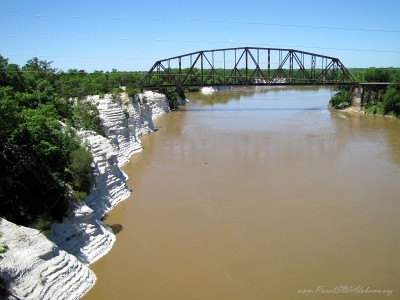
These white cliffs are located on the Tombigbee River at Epes, AL. They are part of the Selma Chalk formations which were deposited at about the same time as England’s famous White Cliffs of Dover. The cliffs at Epes are stunning in their own way as il …

This building was constructed as a hotel between 1903 and 1910. It marked the era of the beginning of automobile travel in Conecuh County and the period when tourism was significant in Evergreen. This is the only original hotel building that remains i …
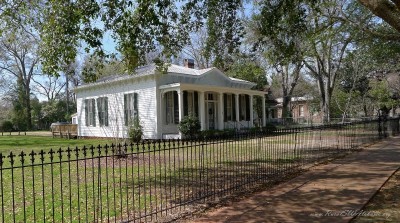
This Italianate-style cottage is located beside the historic Sturdivant Hall in Selma, AL. It was built in 1859 for Mr. and Mrs. Clement Billingslea White. Mrs. White was the former Martha Todd of Lexington, Kentucky, and a half-sister of Mary Todd Li …
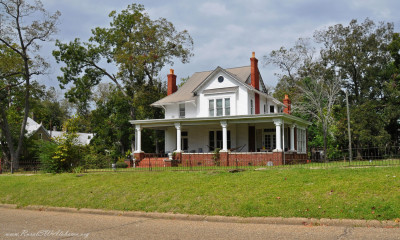
This house was built circa 1901 for John Henry (Harry) and Fannie B. White. It combines the picturesque qualities of late Victorian architecture with Neo-Classical detailing such as the fluted Ionic colonettes which support the flat-roofed wraparound p …
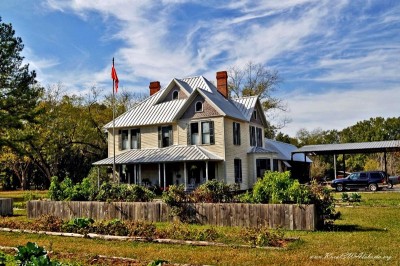
This beautiful two-story Victorian-style home was completed in 1890 by Robert Allen White, a prominent merchant and banker in Newbern. It has Victorian gables on the front and a long porch running the full length of the house. Along the edge of the por …
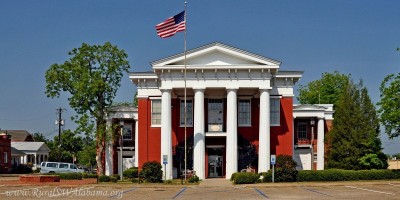
The Wilcox County Courthouse was built c. 1858 by Alexander J. Bragg, brother of the builder of the Bragg-Mitchell home in Mobile. The Greek Revival structure is known architecturally for its four massive Doric columns and balustrade wrought iron steps …
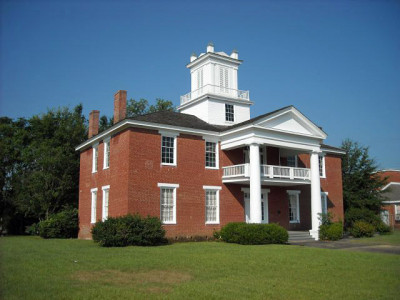
The Wilcox Female Institute is a historic Greek Revival-style school building in Camden. The brick structure features twin Doric columns, a second floor balcony, and a two-tiered cupola and pilastered belfry. This building was built between 1848 and 18 …
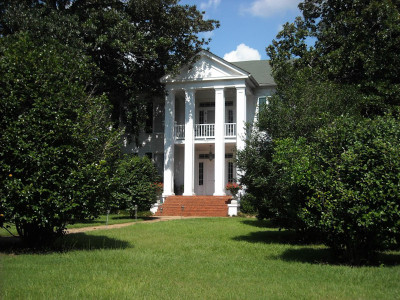
This Greek Revival style home was built about 1838. Attached to the house is the building which once served as headquarters of the Alabama Baptist State Convention. Along with the only remaining incense cedar tree brought to Marion from California in t …
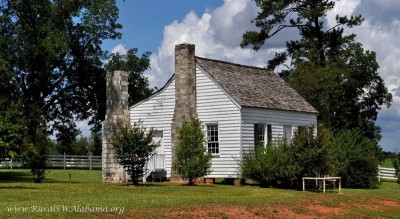
This small 2-room cottage was built circa 1820 at Claiborne, AL. It was the home of William B. Travis while he resided at Claiborne and practiced law under the Hon. James Dellet. In 1831, Travis at the age of 22 left Claiborne for Texas where he practi …
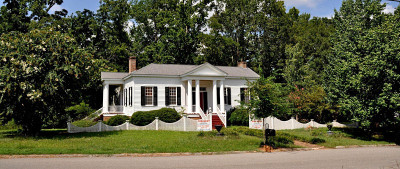
The William B. Willis House, commonly referred to as “Sipsey”, is an L-shaped, one story, Greek Revival clapboard house on a high brick foundation. It has two porticoes of the Doric style and fine architectural details both inside and out. In 1978, the …
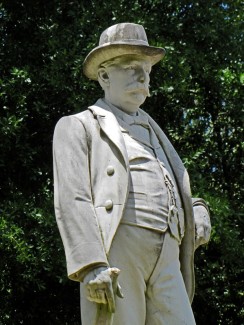
Shown is a full-length, two-thirds life size statue of William Joseph Melton that’s located in the Friendship Baptist Church Cemetery at Pine Apple, AL. William Joseph Melton (1846 – 1900), was a wealthy plantation owner in Wilcox County who became ver …
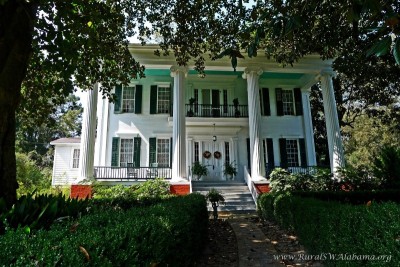
The William Perkins House, also known as the Freemount, is a historic Greek Revival style house that was built in the 1850s by William Perkins, a wealthy merchant from Kentucky. The house is a two-story wood framed building on a raised brick foundation …
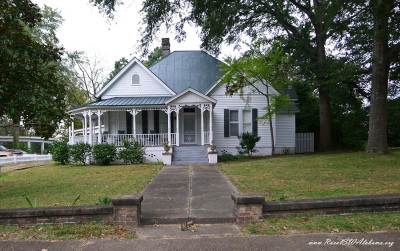
The William R. Ward cottage, built in 1896, is one of the early works of Brough, Eutaw’s noted Victorian-style home builder. The main portion of the house has a steep hip roof. Small pavilions jutting from each side of this roof are crowned by gables …
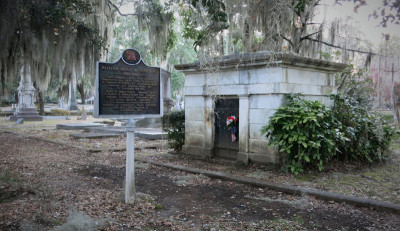
William Rufus King (1786-1853) was a founder of Selma, AL and Vice President of the United States. He is buried in Old Live Oak Cemetery at Selma. At his gravesite is a historical marker that contains the following details about the life of William Ruf …
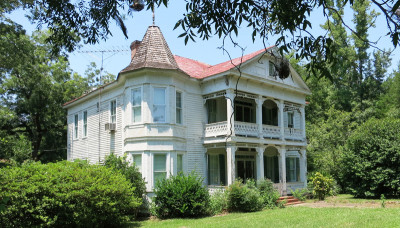
This Victorian-style home is located in the Lower Peach Tree community in southwest Wilcox County. It was built in 1900 using timber from the property and cut at the family-owned sawmill. The front of the house has a two-story pedimented front porch wi …
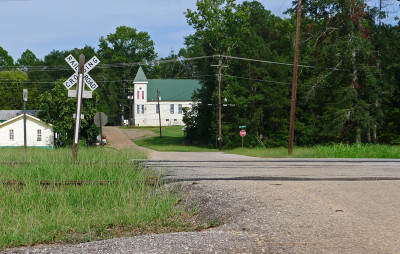
Williams’ Temple CME Church at Thomasville, AL (consolidated with Booker City to form Miles College)
In 1898, the Christian Methodist Episcopal Church, seeking to serve the educational needs of black students opened a school and church in Thomasville, Williams Temple CME Church. Four years later, the CME Church began construction on another facility a …
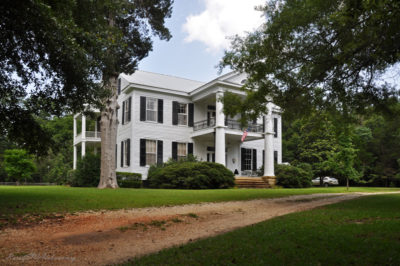
The Wilson-Finlay House is a historic plantation house located in the southern part of Clarke County at Gainestown. This house was built between 1846 and 1851 for Dr. Joshua Sanford Wilson by Isaac Fuller from Maine. Wilson, born in 1792 in Halifax Cou …
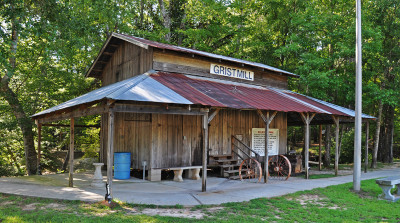
Needham is a small community located in central Choctaw County. Wilson’s Grist Mill was the center of life in Needham for decades during the early 1900s. The Saturday trip to town to have corn ground into meal was more than just the task of obtaining f …
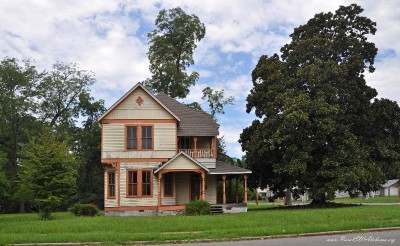
This late-Victorian house was built around 1880. It is located at the intersection of Wilson Avenue and Boligee Street near downtown Eutaw, AL. This is a private residence – drive by only. Source: Walking and Driving Guide to Historic Eutaw, Alabama, …
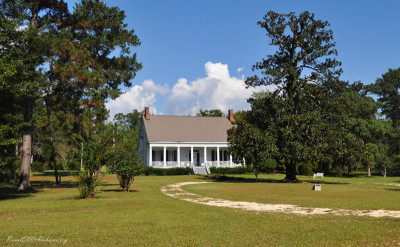
Constructed around 1840 as the seat of a 2,000 acre plantation, Woodlands is one of the finest of the few remaining antebellum homes in Clarke County. This house is a Creole style cottage that’s enriched with Greek Revival detailing, including eight fl …
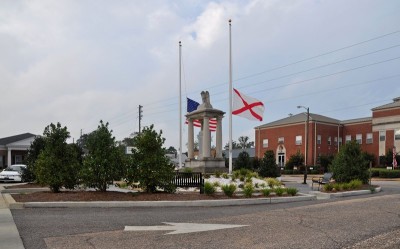
This monument was erected to honor the fallen military personnel of Clarke County who served in World War I. The stone monument sits atop an earthen mound that is landscaped with grass and shrubs and located in the middle of the courthouse square in Gr …
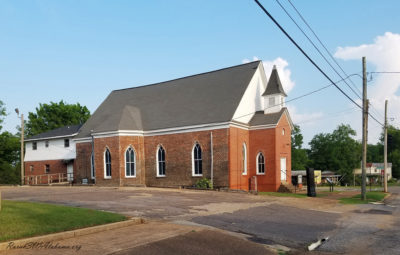
Located adjacent to the town square, Zion United Methodist Church was a focal point for the civil rights movement of the 1960s. The night march that ended with the shooting of Marion native, Jimmie Lee Jackson, started at this church. The death of Jim …
